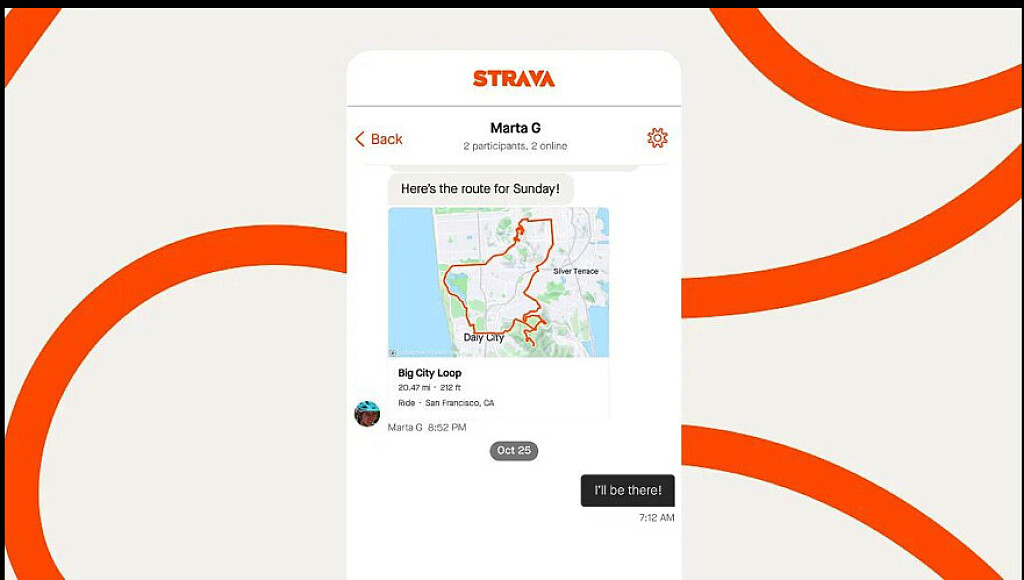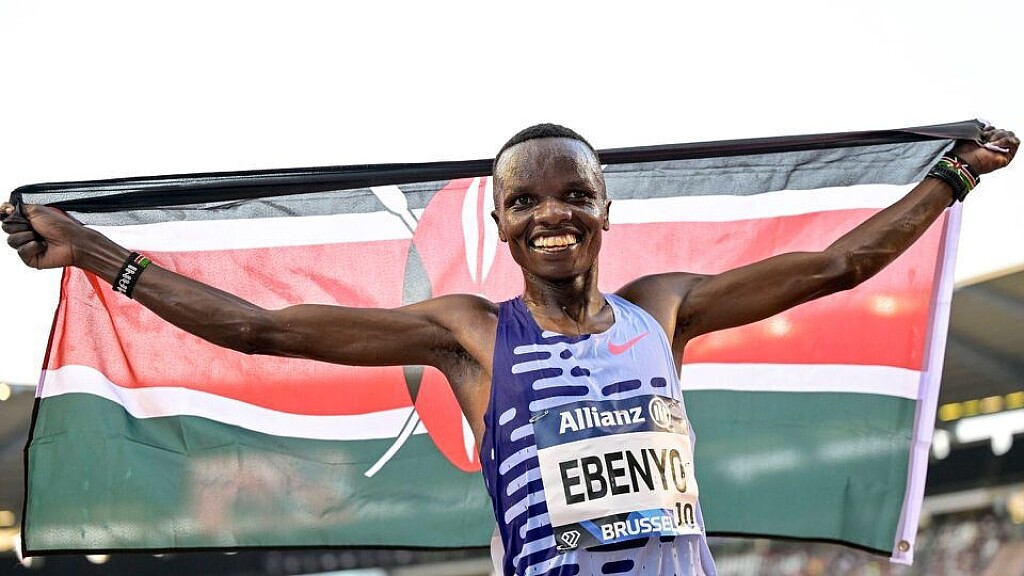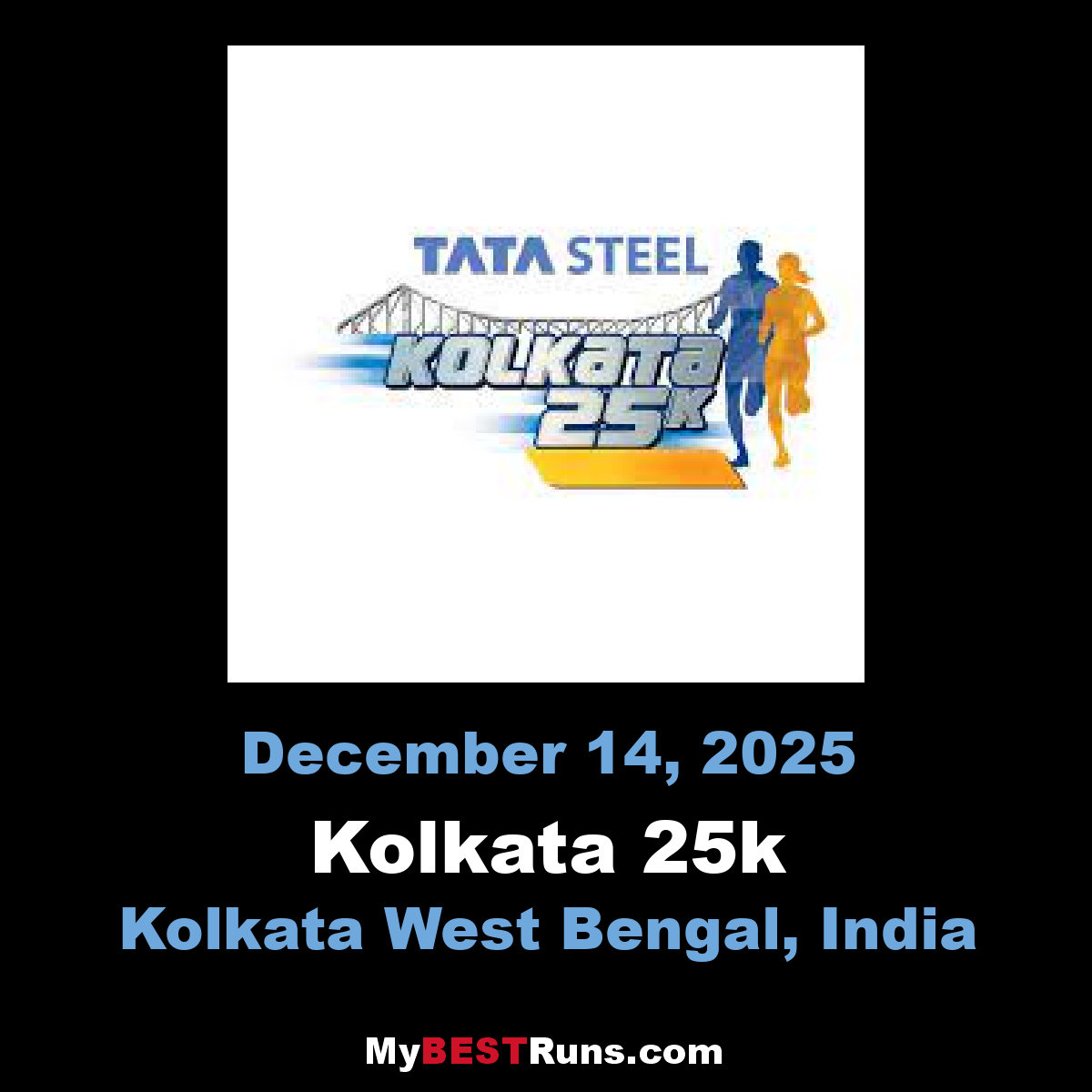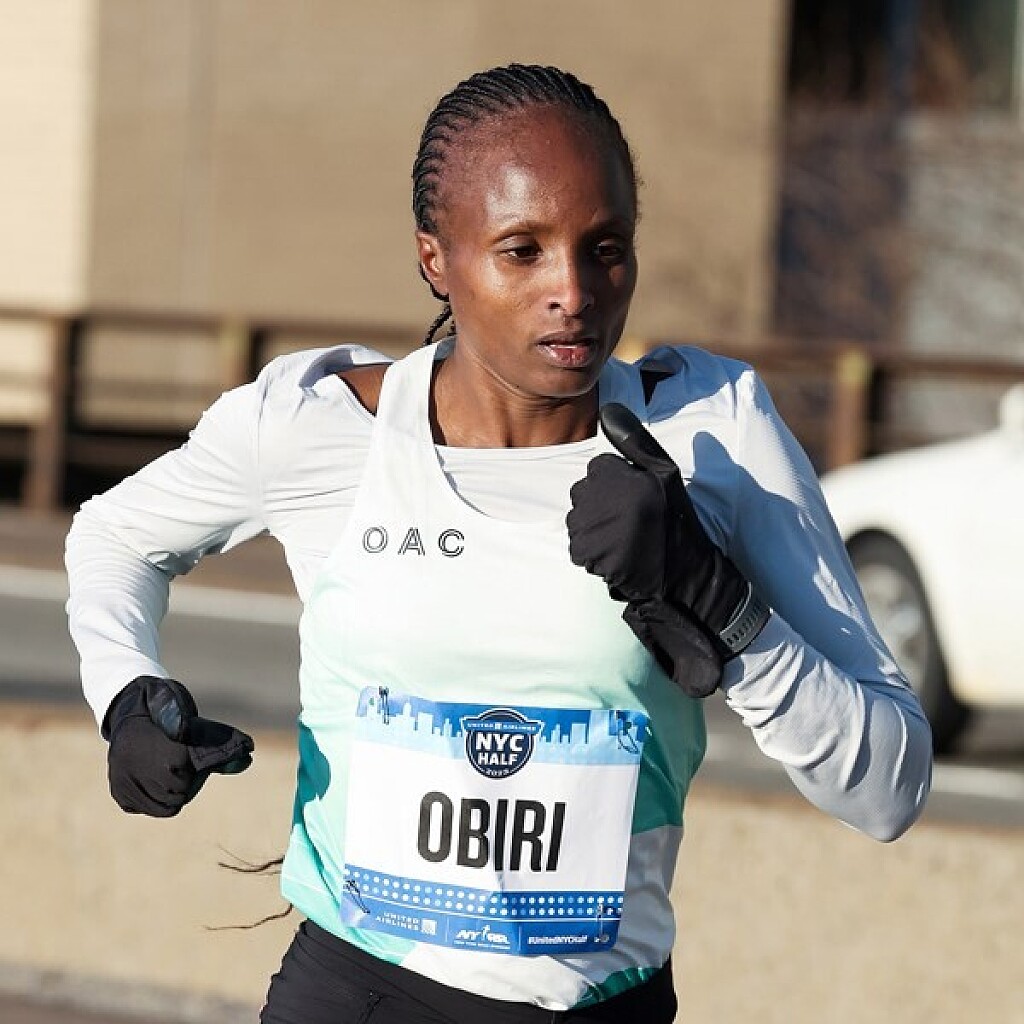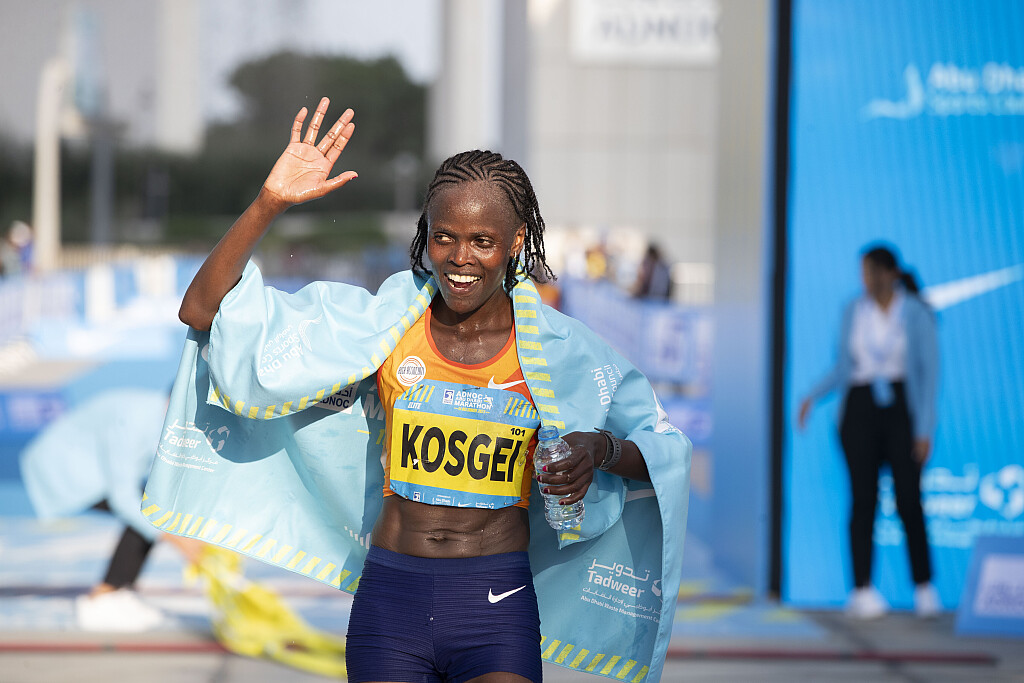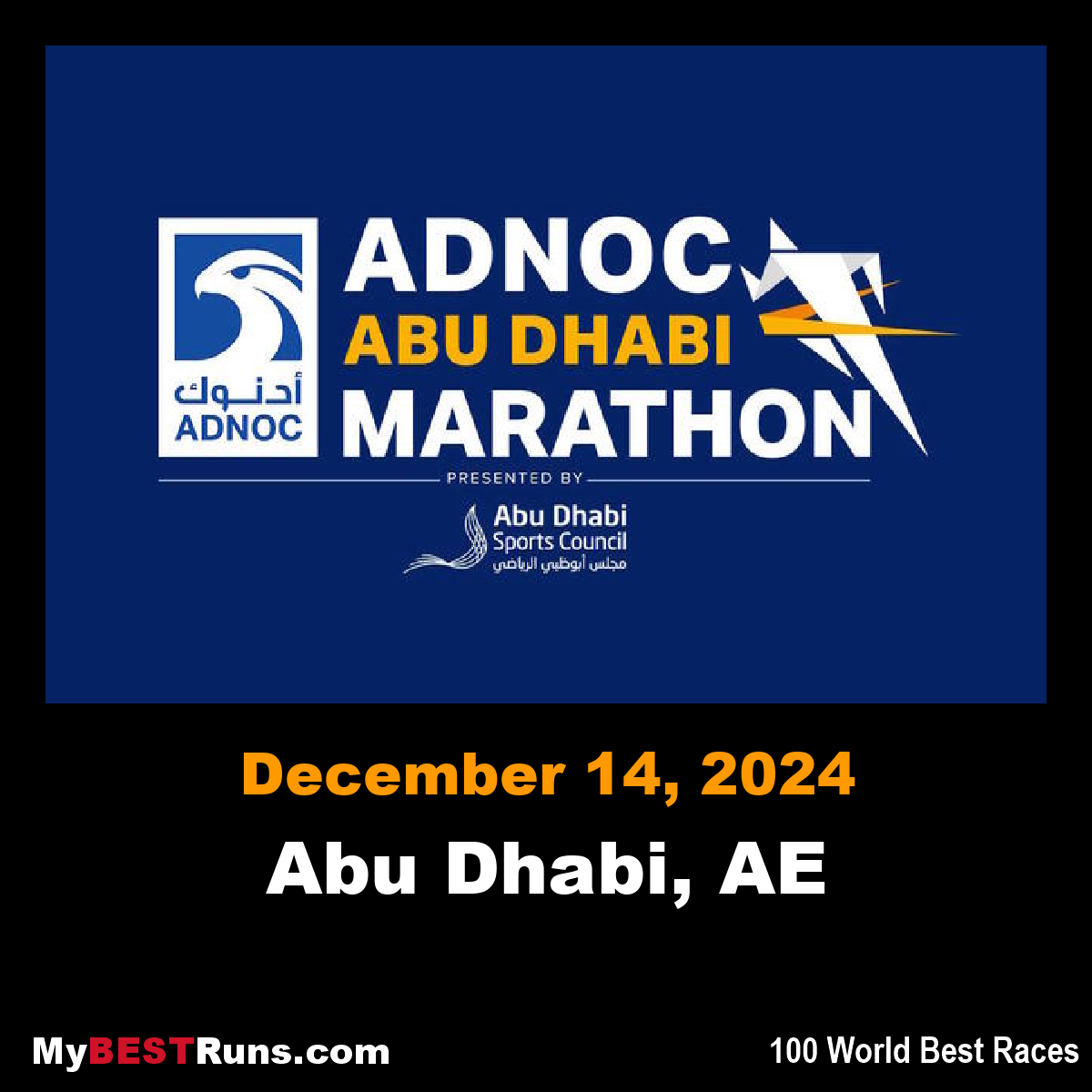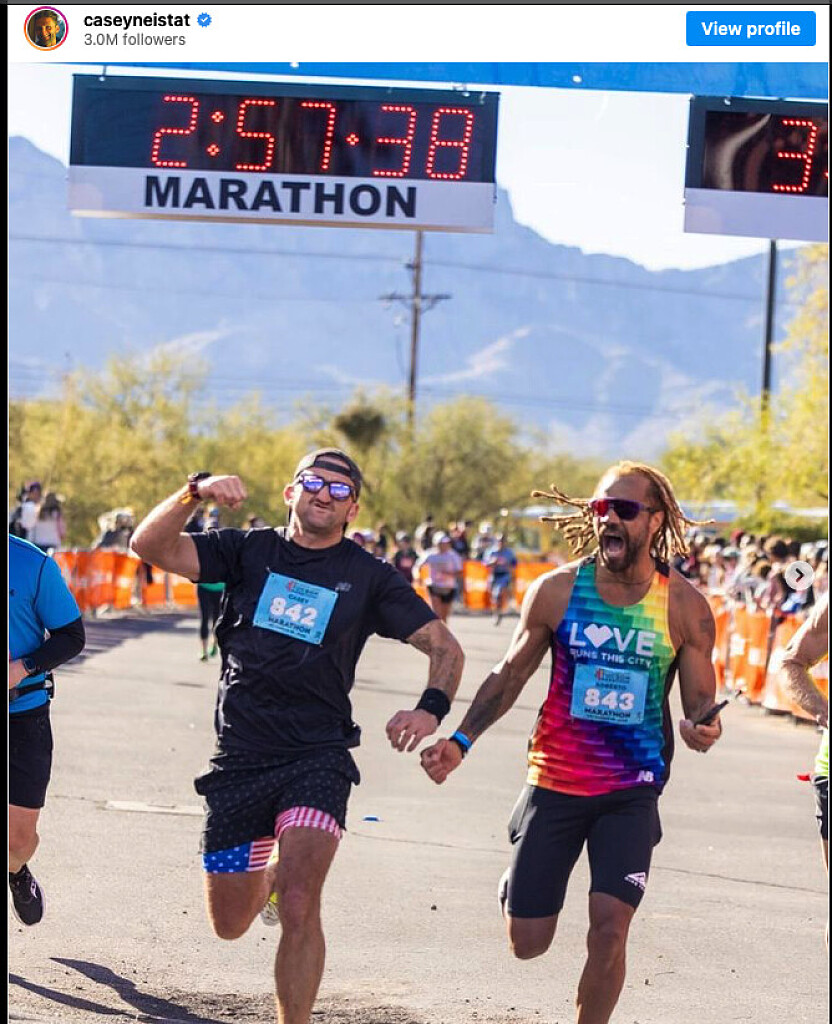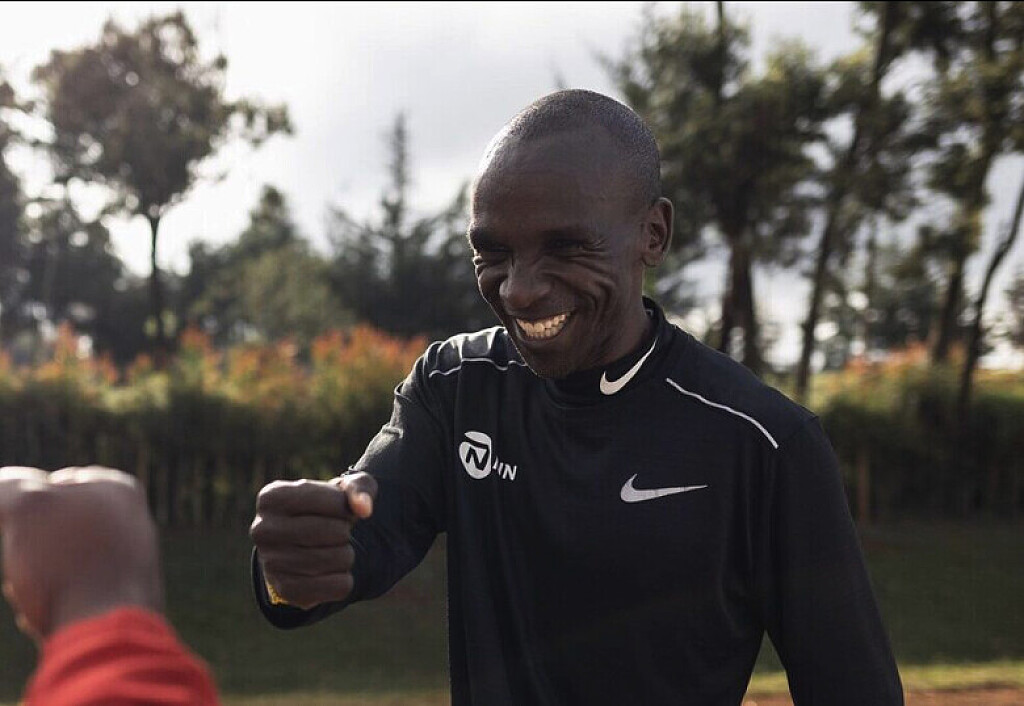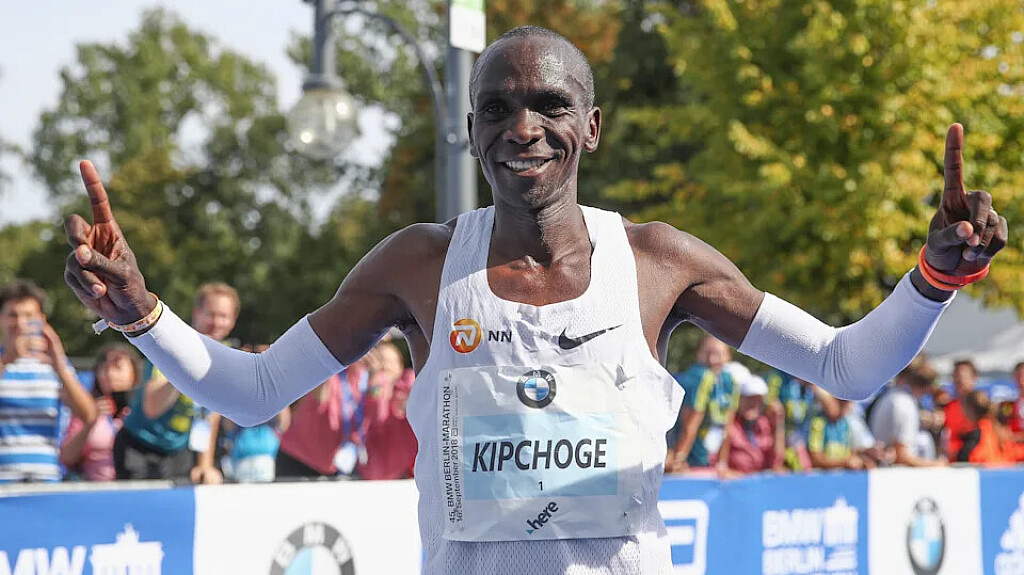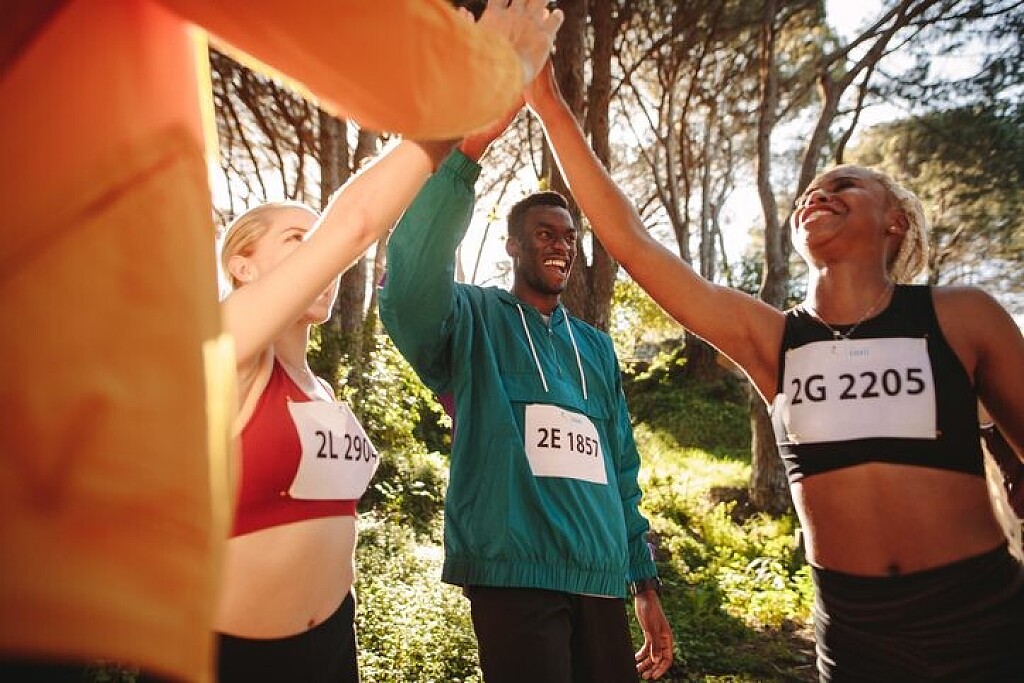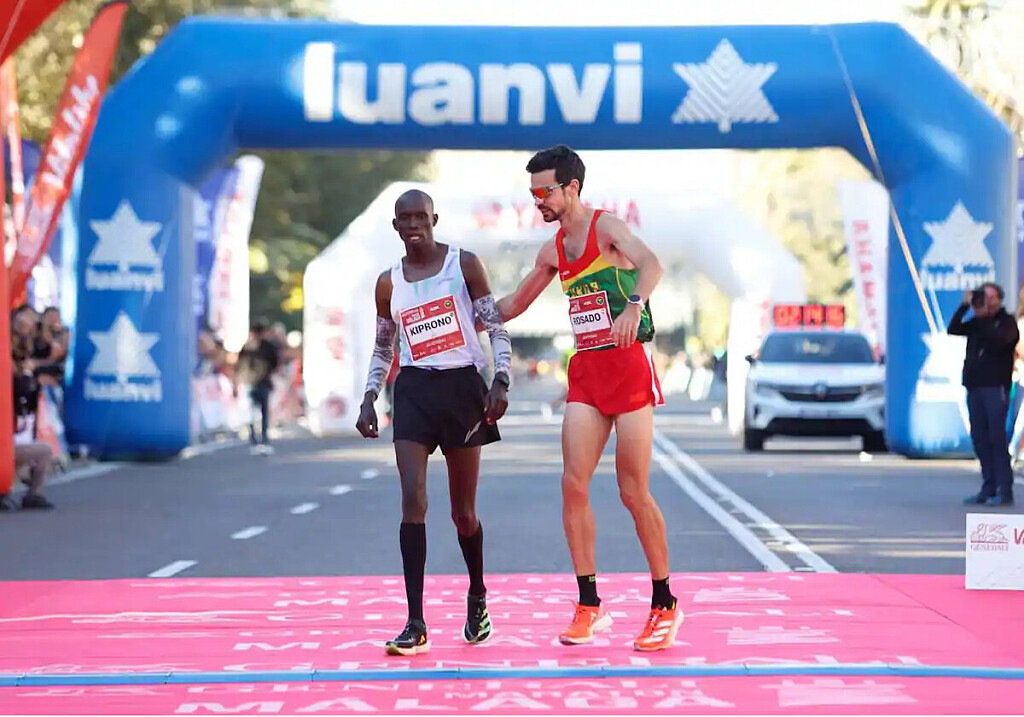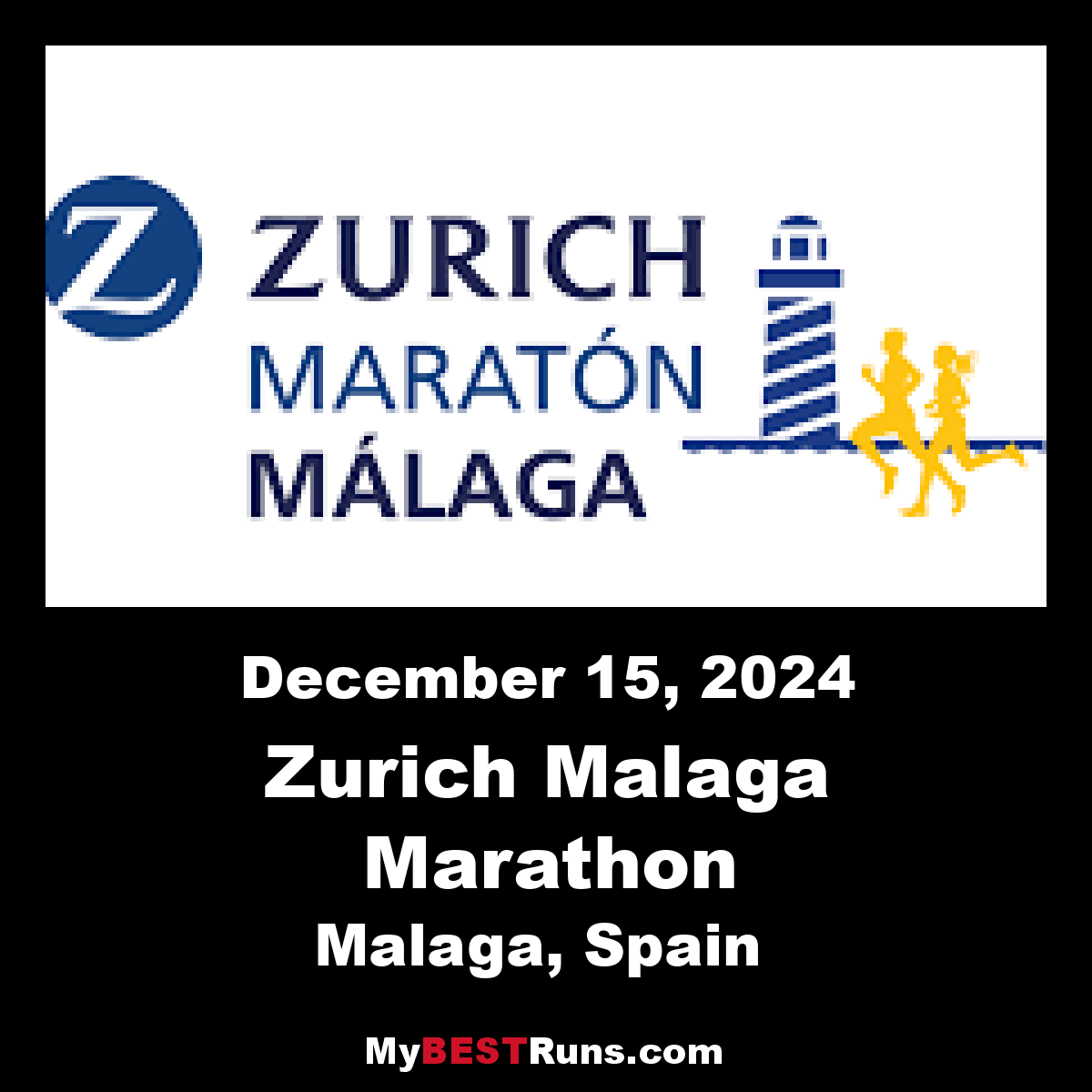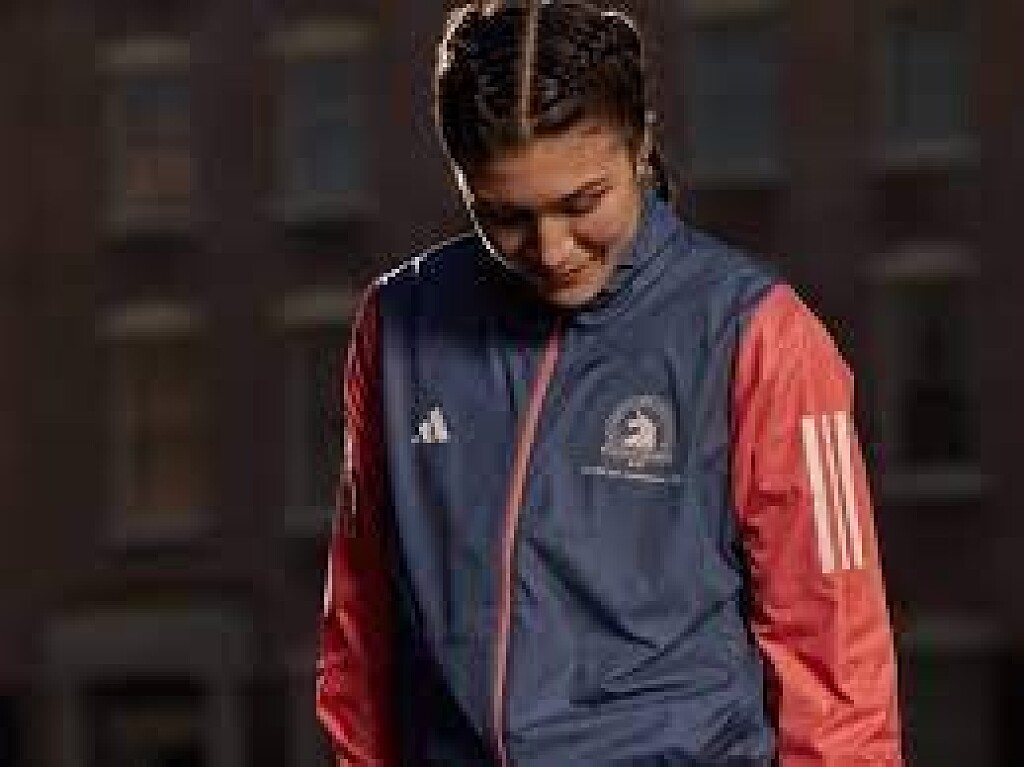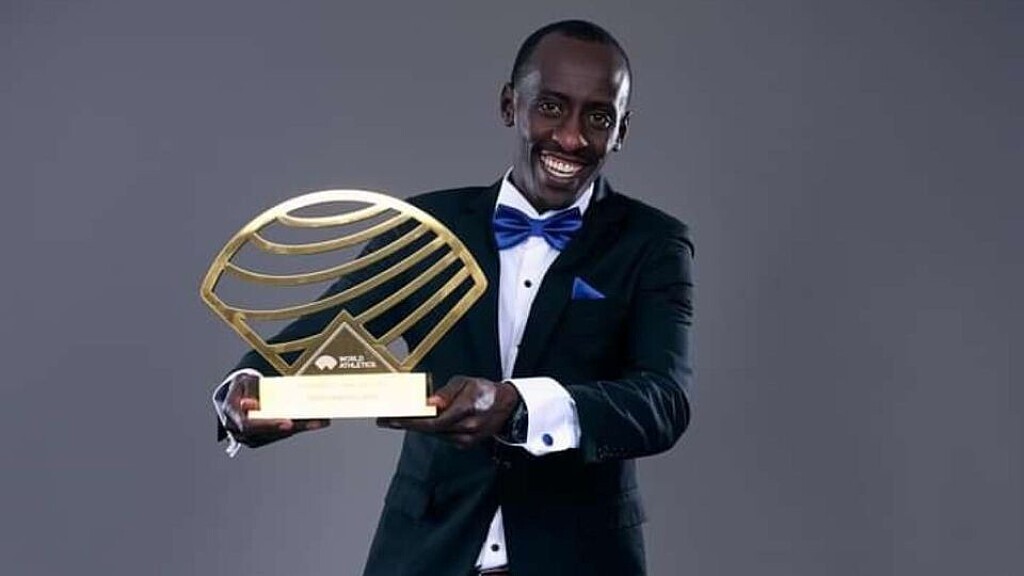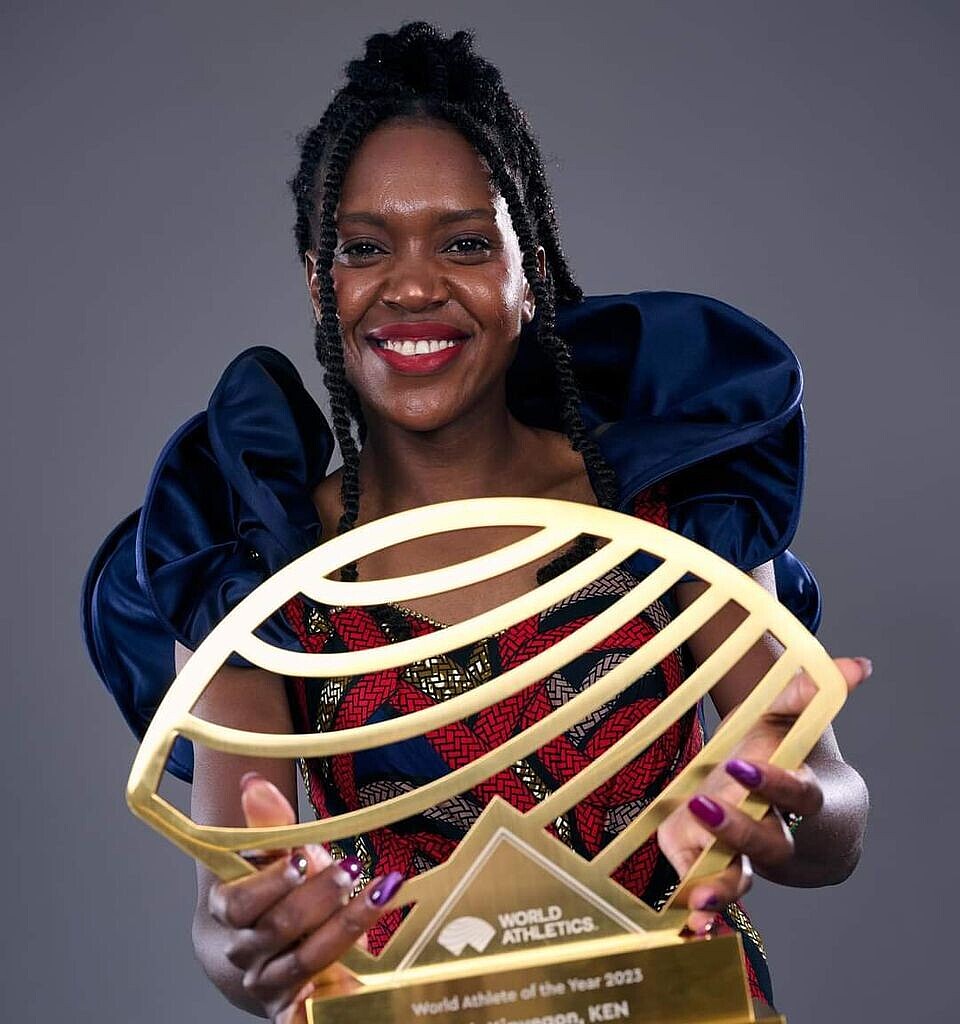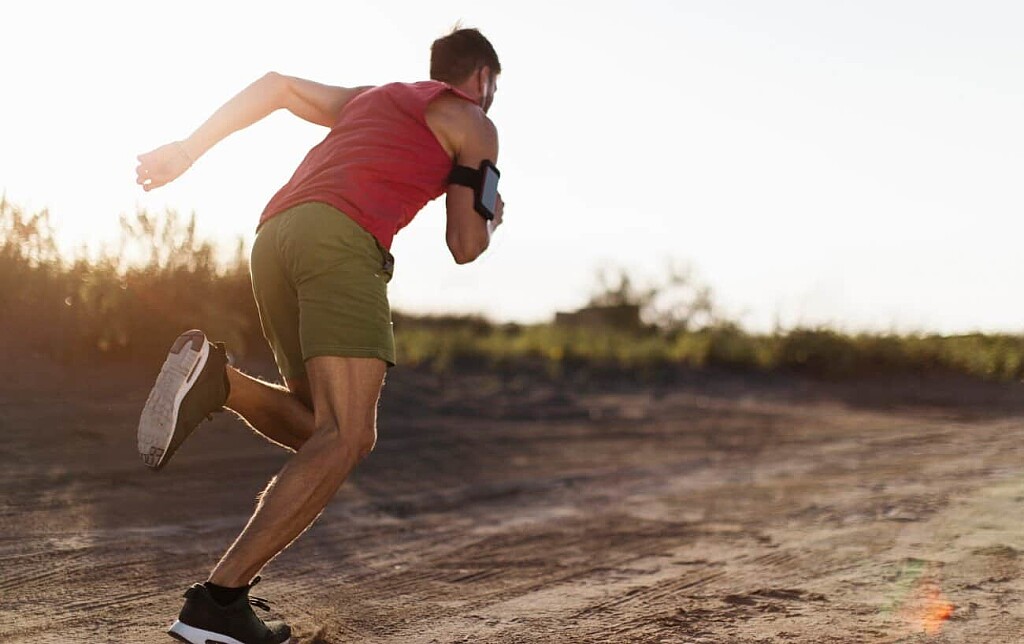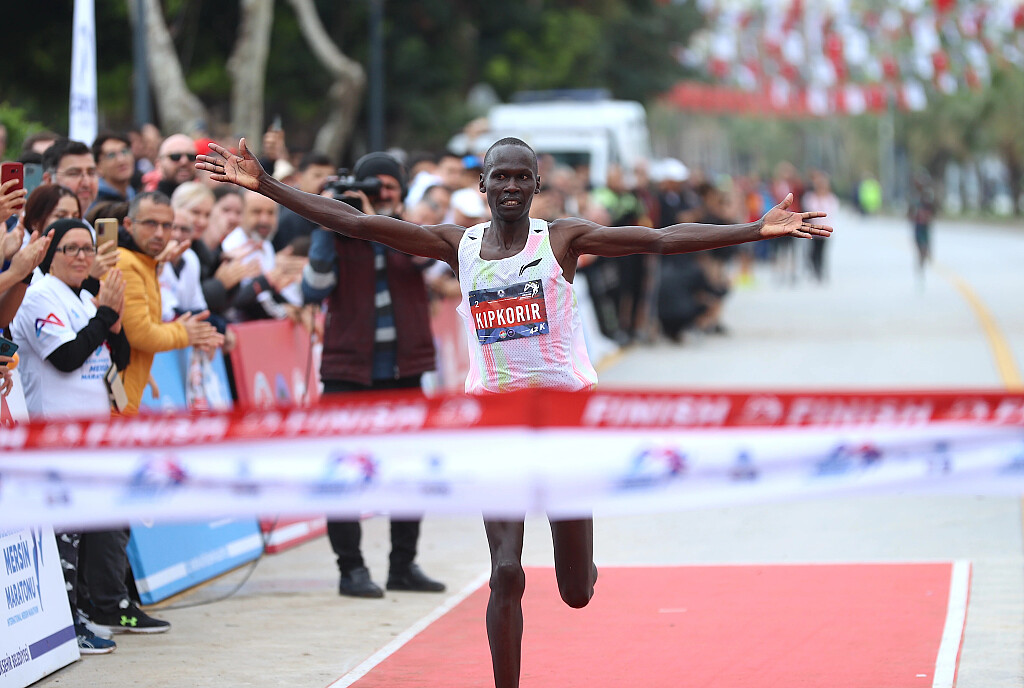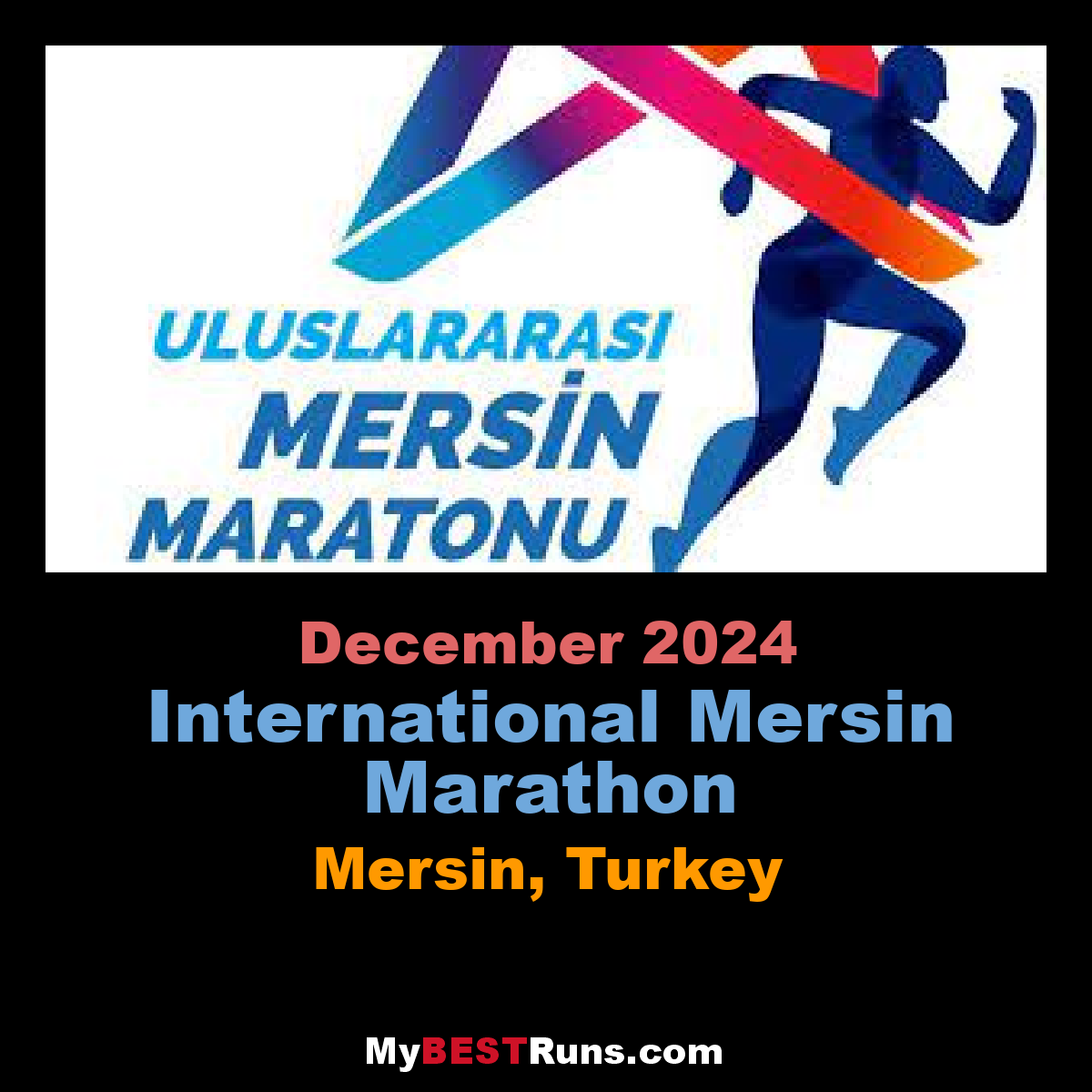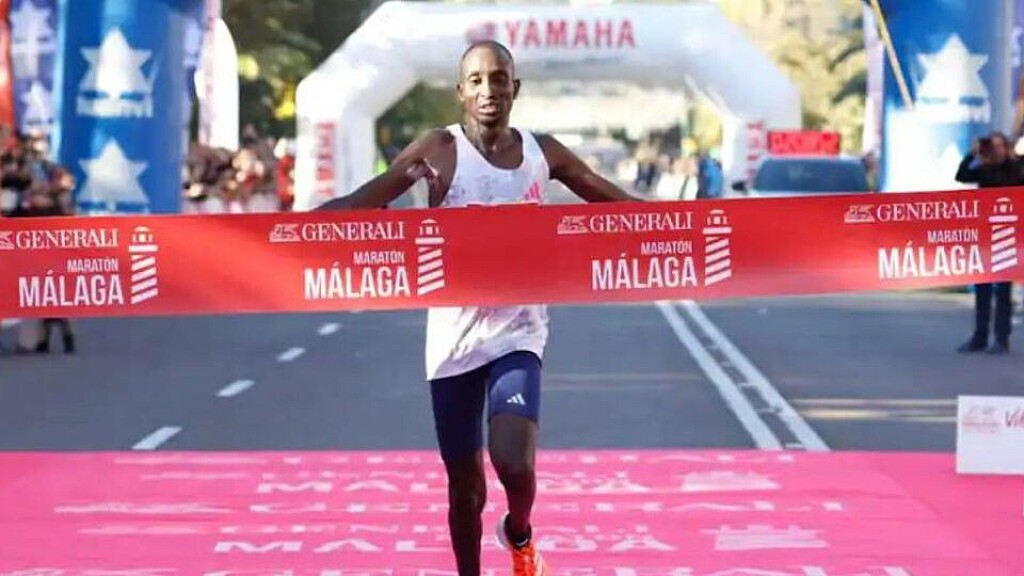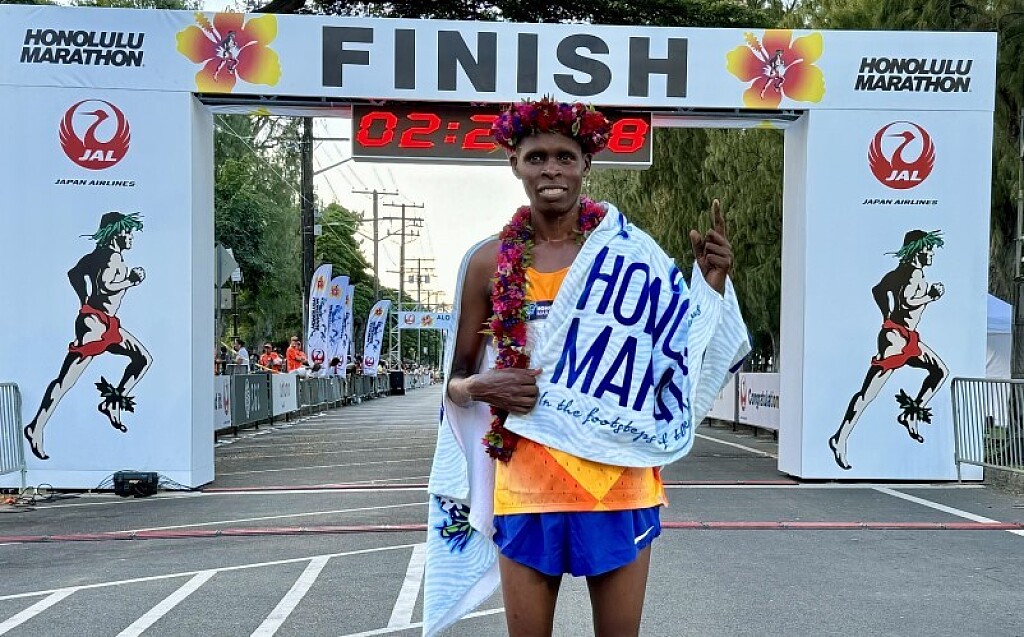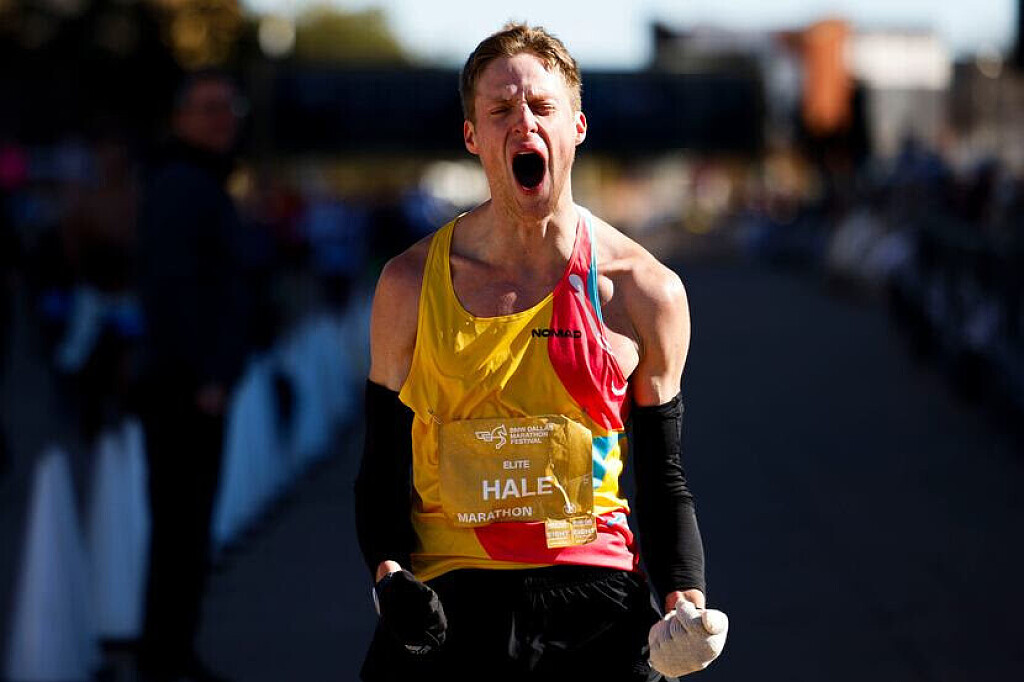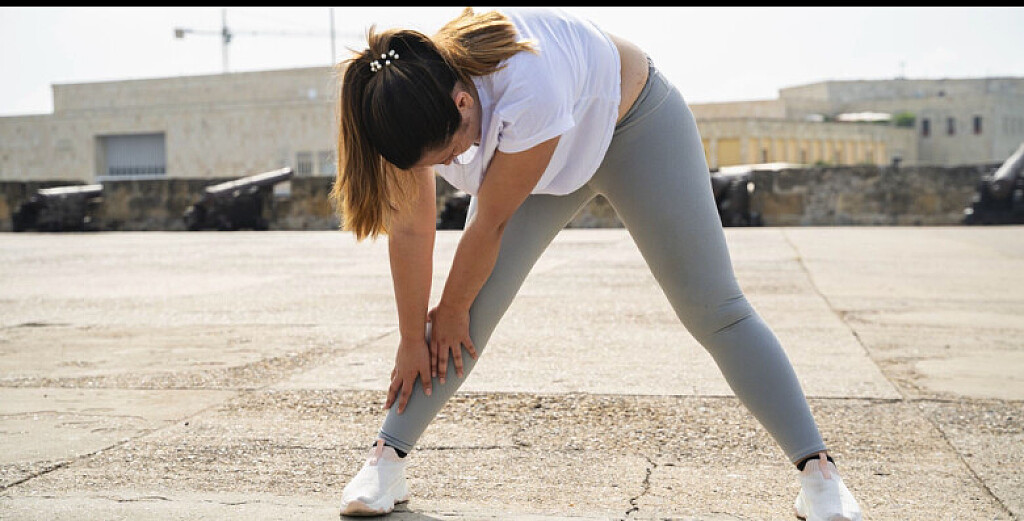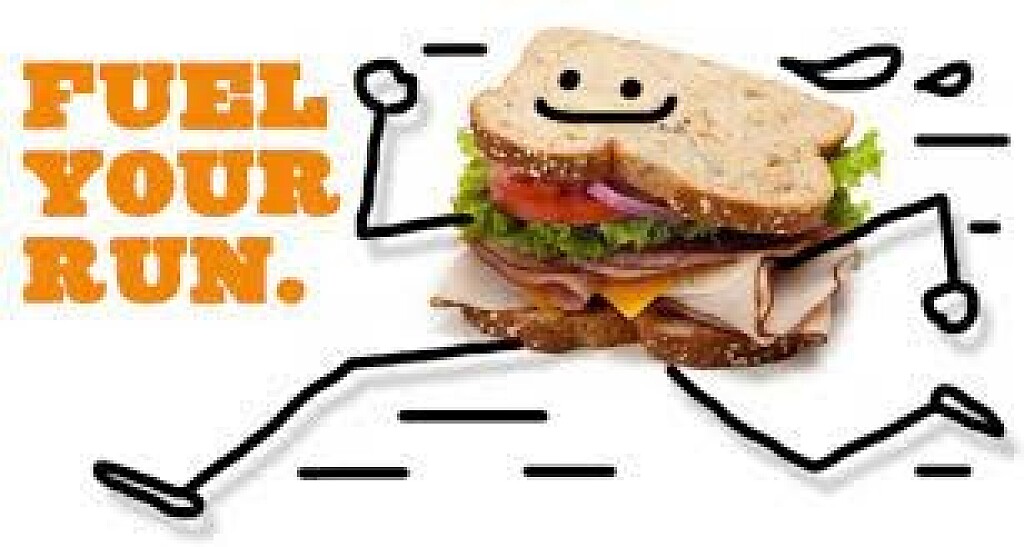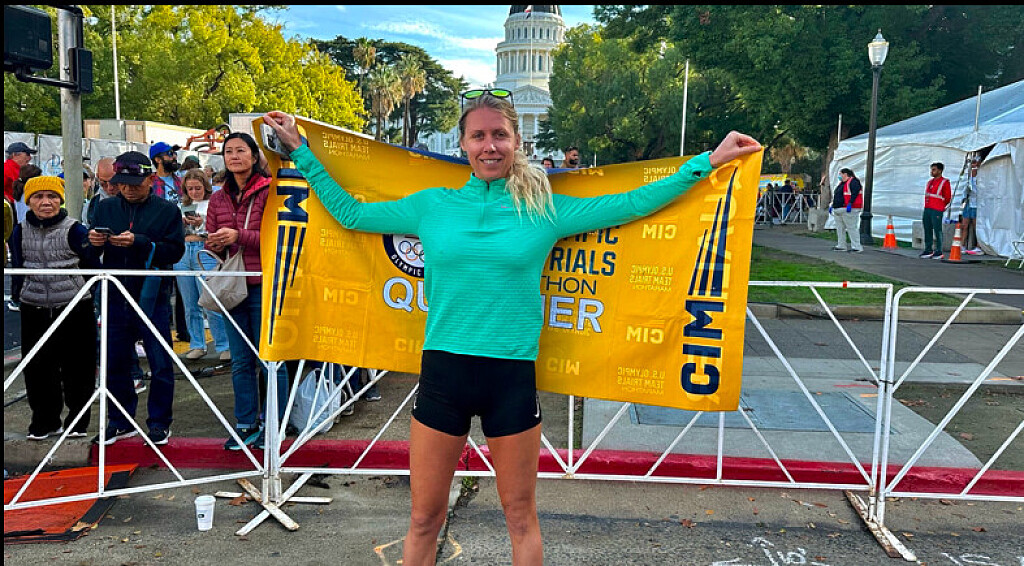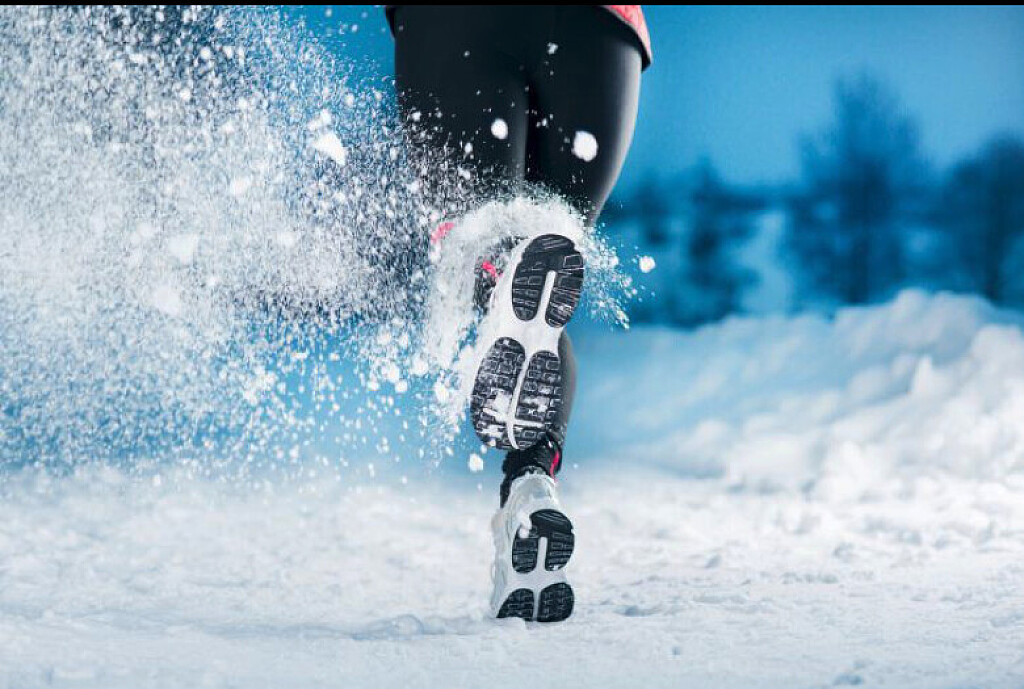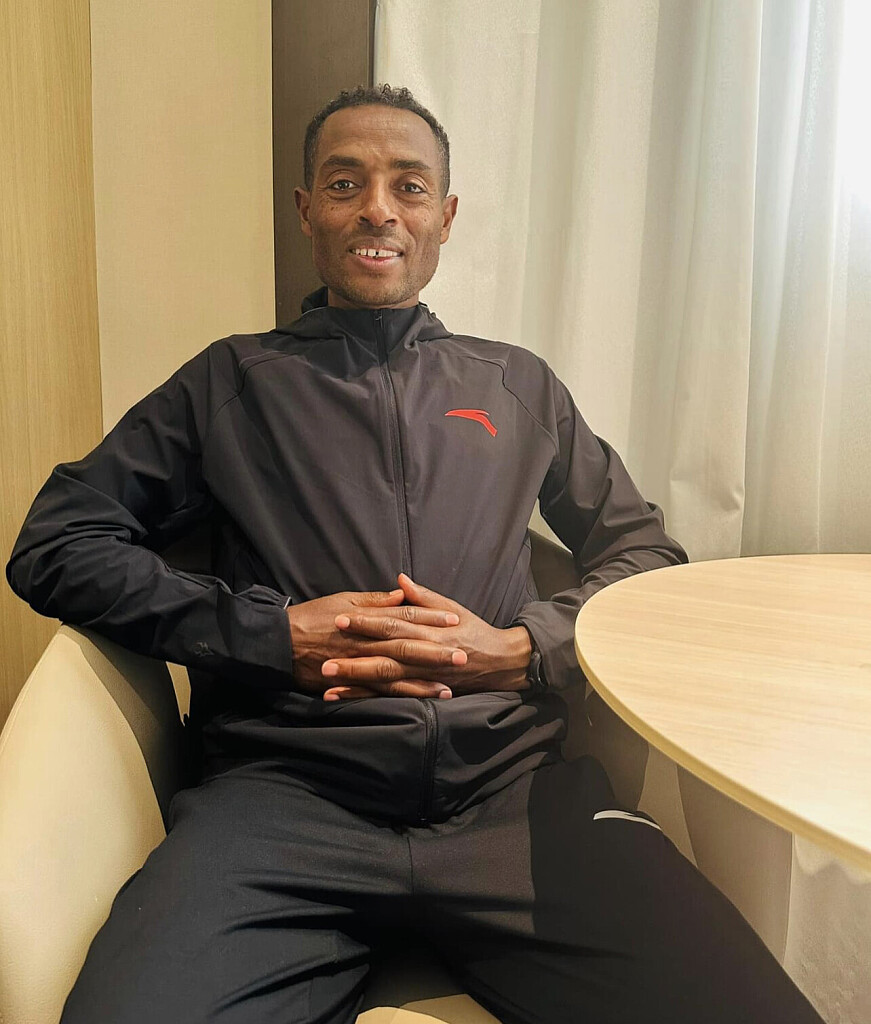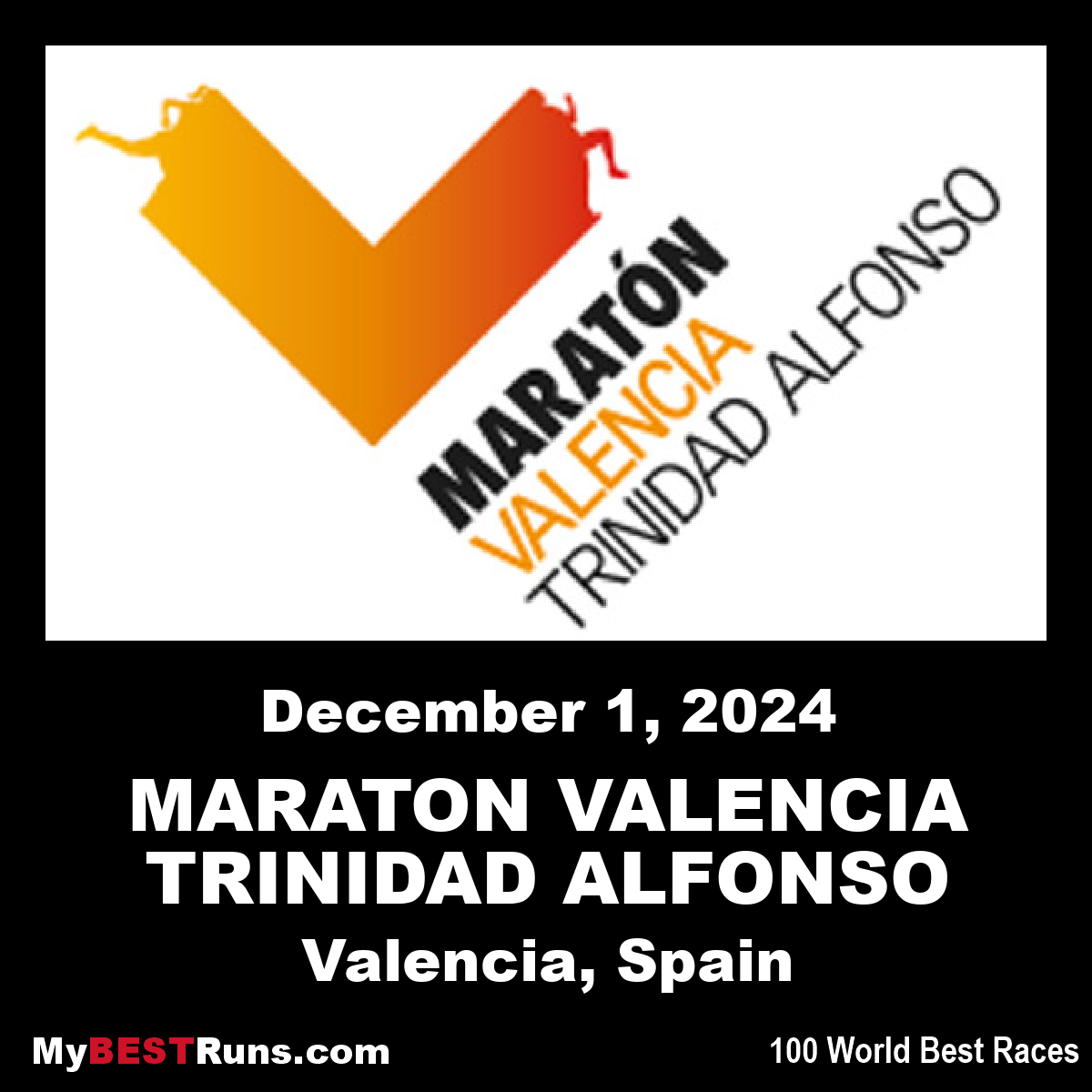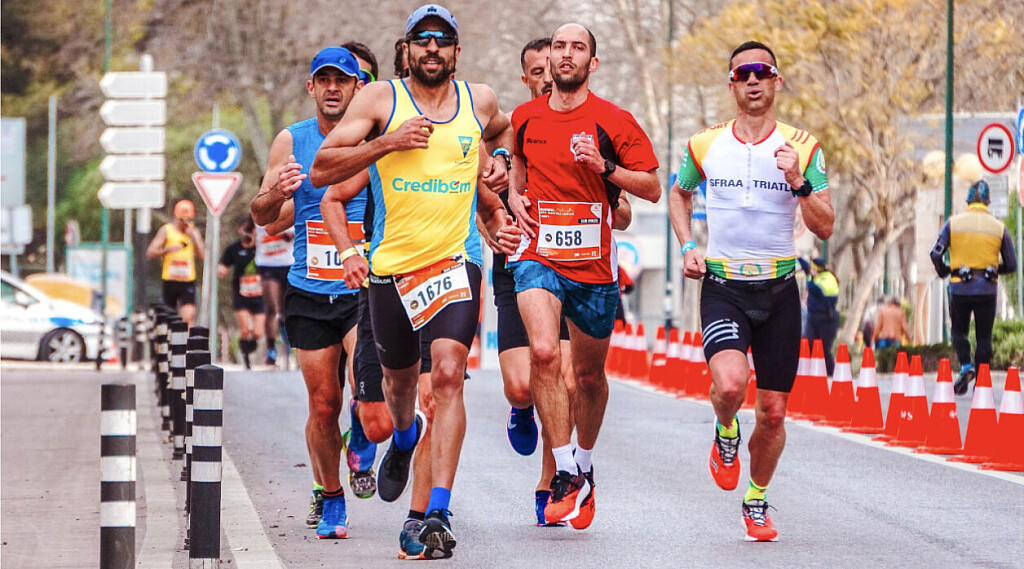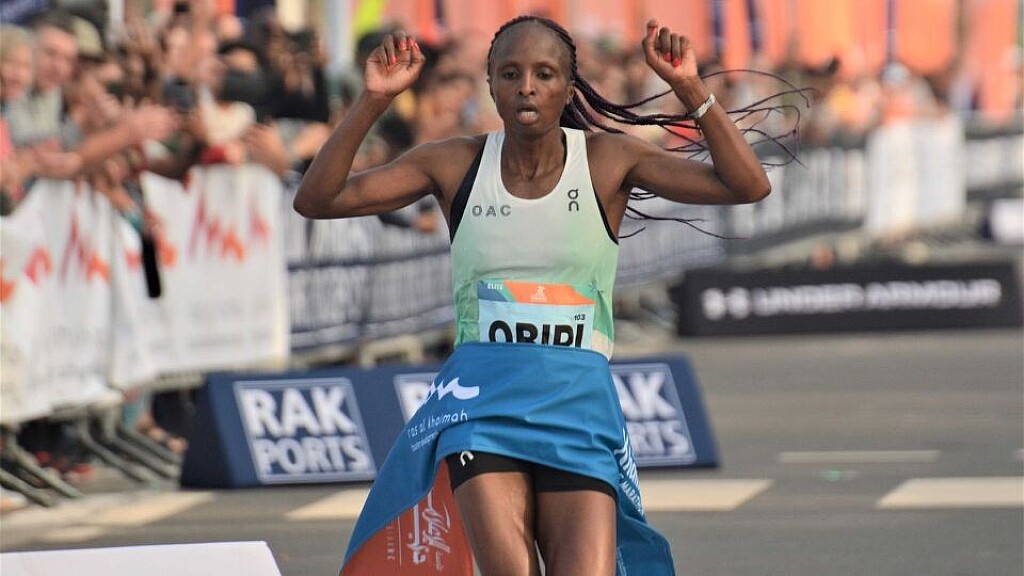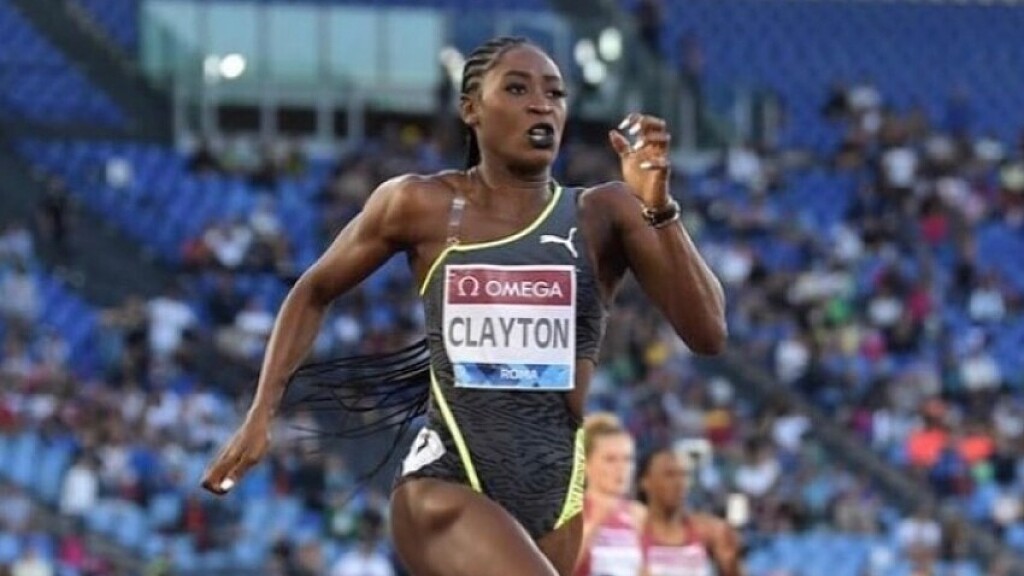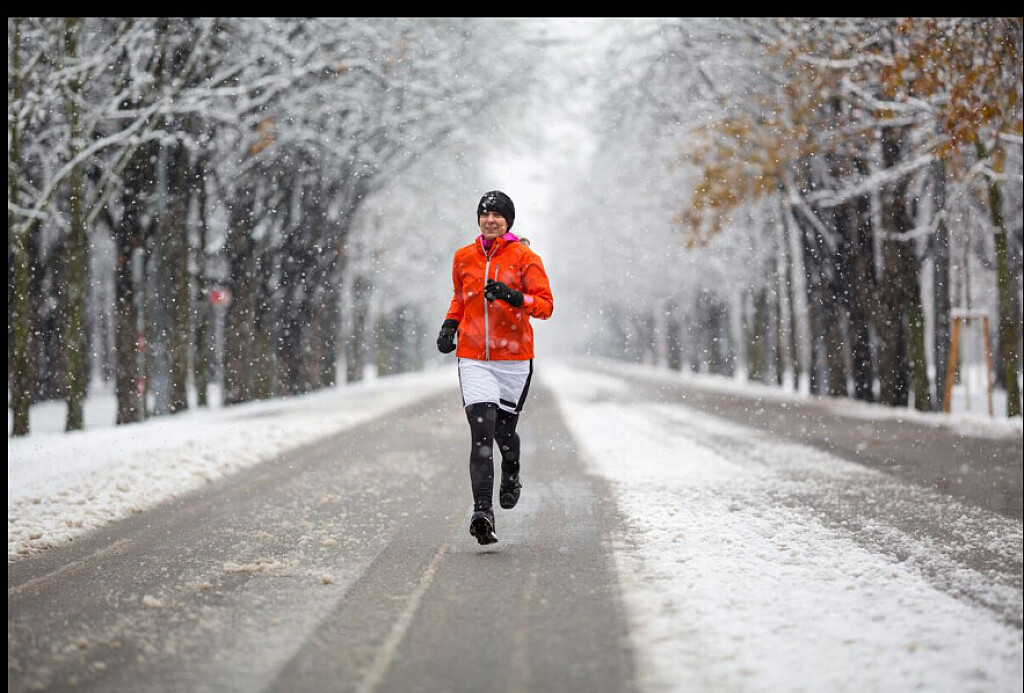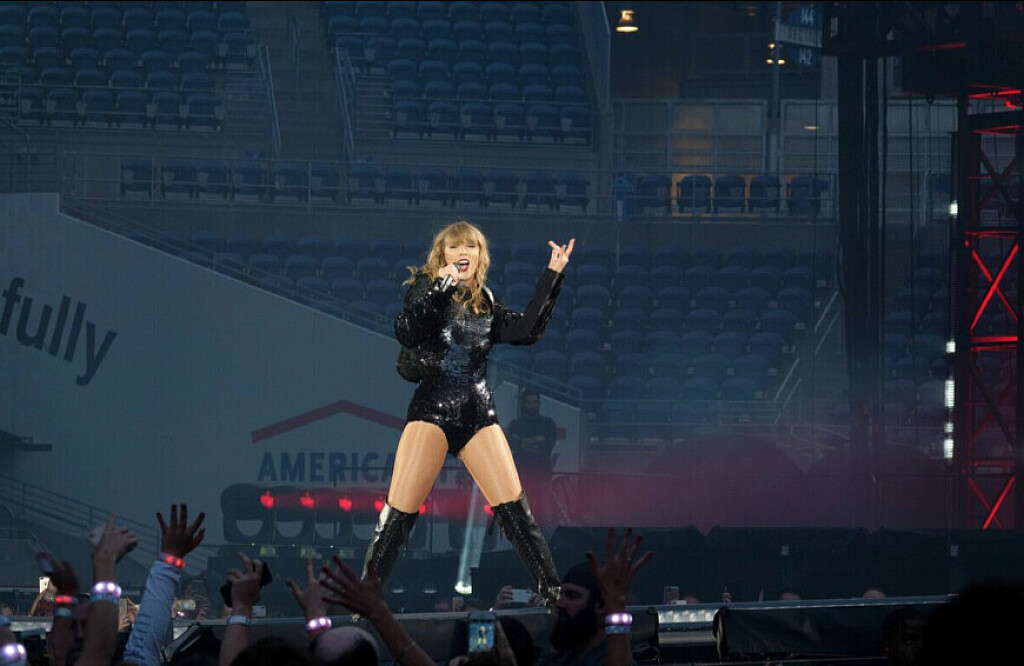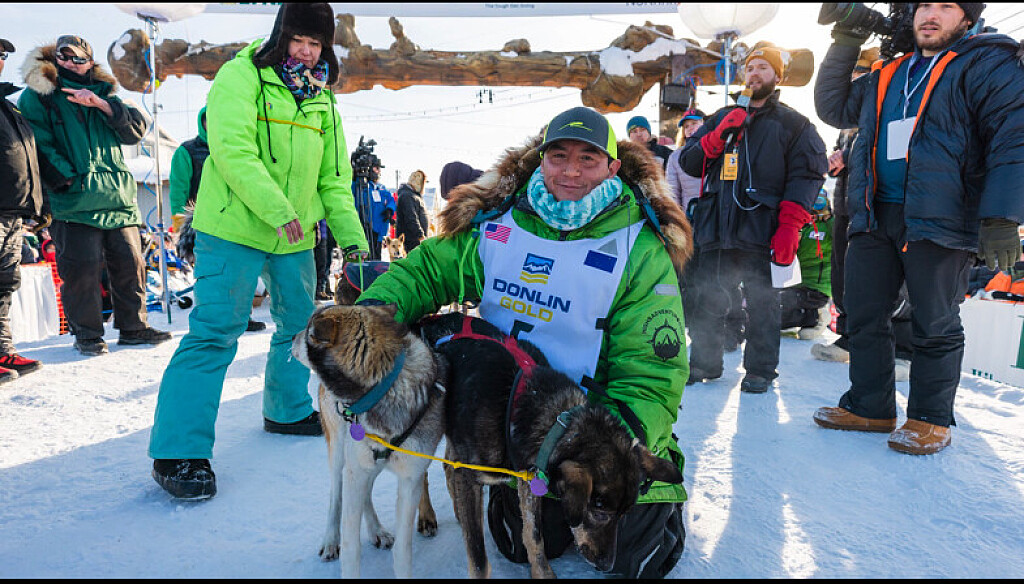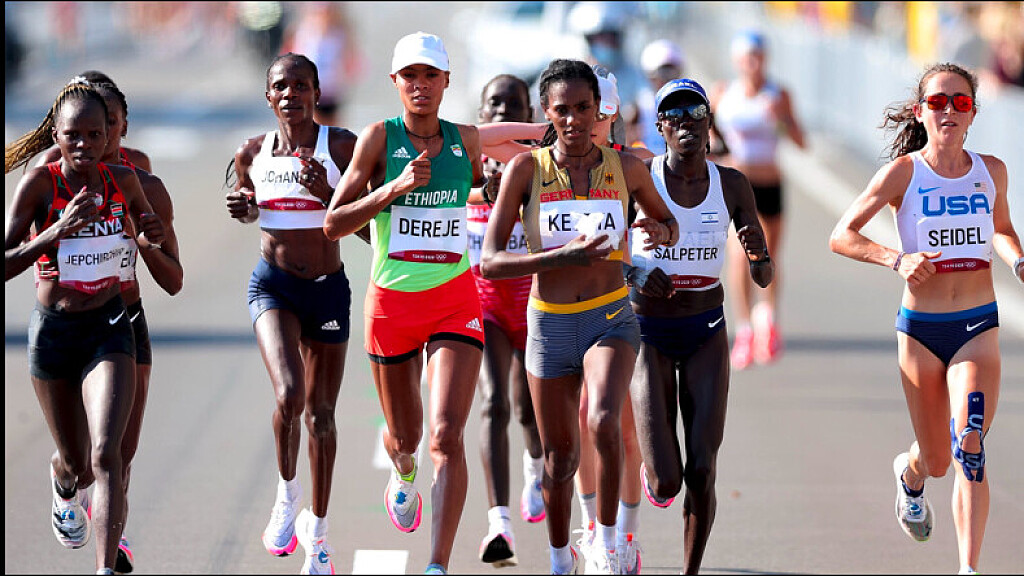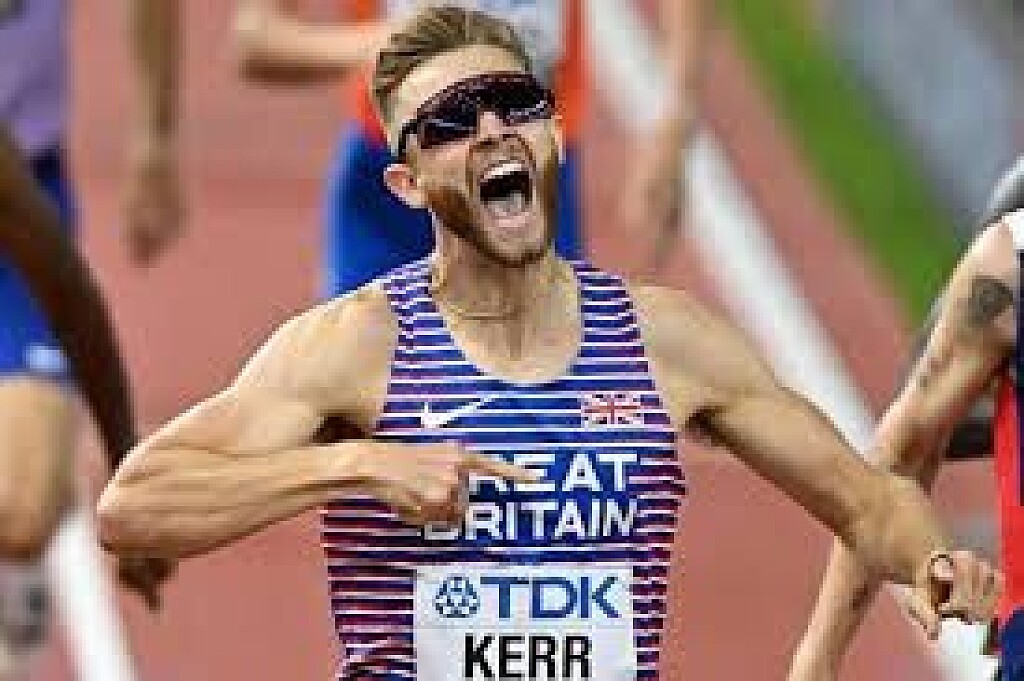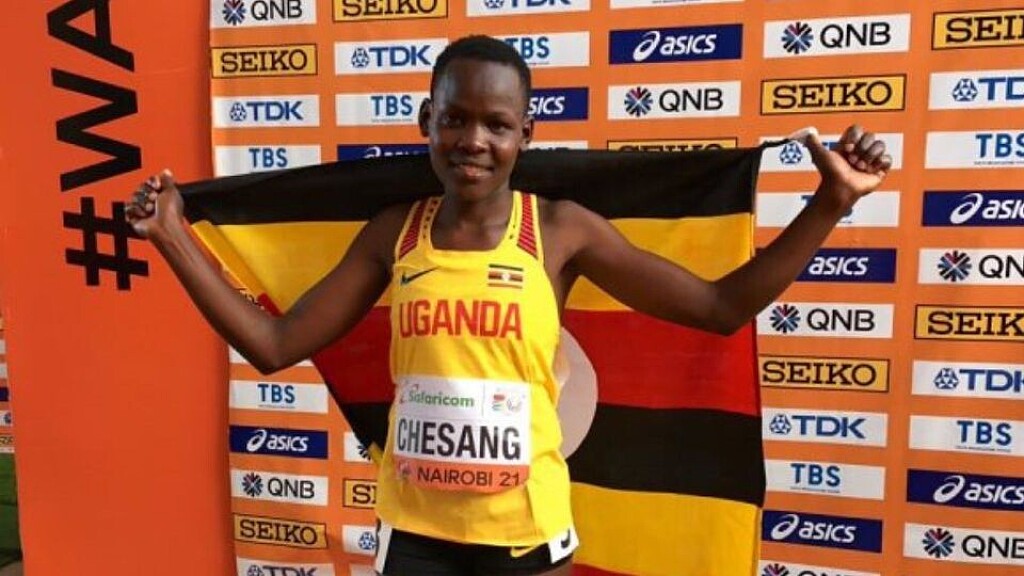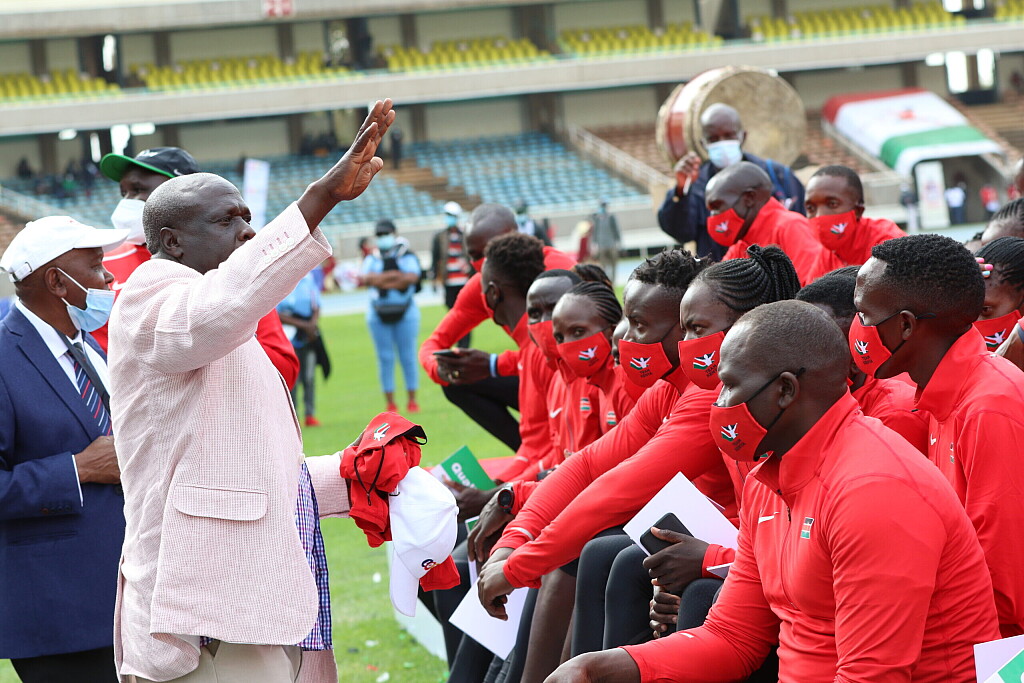Running News Daily
Running News Daily is edited by Bob Anderson. Send your news items to bob@mybestruns.com Advertising opportunities available. Train the Kenyan Way at KATA Kenya and Portugal owned and operated by Bob Anderson. Be sure to catch our movie A Long Run the movie KATA Running Camps and KATA Potato Farms - 31 now open in Kenya! https://kata.ke/
Index to Daily Posts · Sign Up For Updates · Run The World Feed
Strava introduces messaging feature
Move over Instagram DMs… Strava has officially dropped its long-awaited messaging feature. No need to run between apps to connect with your running crew or reach out to your running crush on Facebook or Instagram; now, you can do it all in one place.
Strava’s grand plan behind this upgrade was to create a seamless avenue for athletes to co-ordinate adventures, share inspiration, swap training tips and more—all within the unified platform.

As of Monday, the messaging feature will be available for all Strava users (on mobile only). Look for the speech bubble icon in the top right corner of the Strava home screen and group tabs. If you can’t find it, restart your Strava app and make sure you have version 335.0 downloaded. You can also send your ridiculous workouts or long runs to your friends by tapping the share icon on a Strava activity to share it in a chat. You’ll have the option to choose from existing chats or create a new one.
Don’t be alarmed, Strava still respects your boundaries; you can still manage and control who invades your running space with customizable messaging settings. Your options? “Following” lets any follower slide into your DMs; “Mutuals” keeps it exclusive to mutual followers (someone you follow who also follows you); and “No One” is for those who prefer a solo run or treadmill—total privacy, even in chat form.
For the time being, you cannot send images on Strava… yet. But you can send activities, reactions and GIFs. Strava plans to add other new messaging features in early 2024. Premium messaging features are apparently on the way, so all Strava subscribers can get ready for a VIP chat experience.
(12/17/2023) ⚡AMPby Running Magazine
More than Ksh15 million has been set aside as prize money for the Tata Steel Kolkata 25K
The Tata Steel Kolkata 25K 2023 has attracted some of the greatest athletes from across the globe who will be building up for the 2024 Paris Olympics.
Daniel Simiu Ebenyo headlines the field and he will once again lock horns with some of the finest athletes internationally on Sunday, December 17.
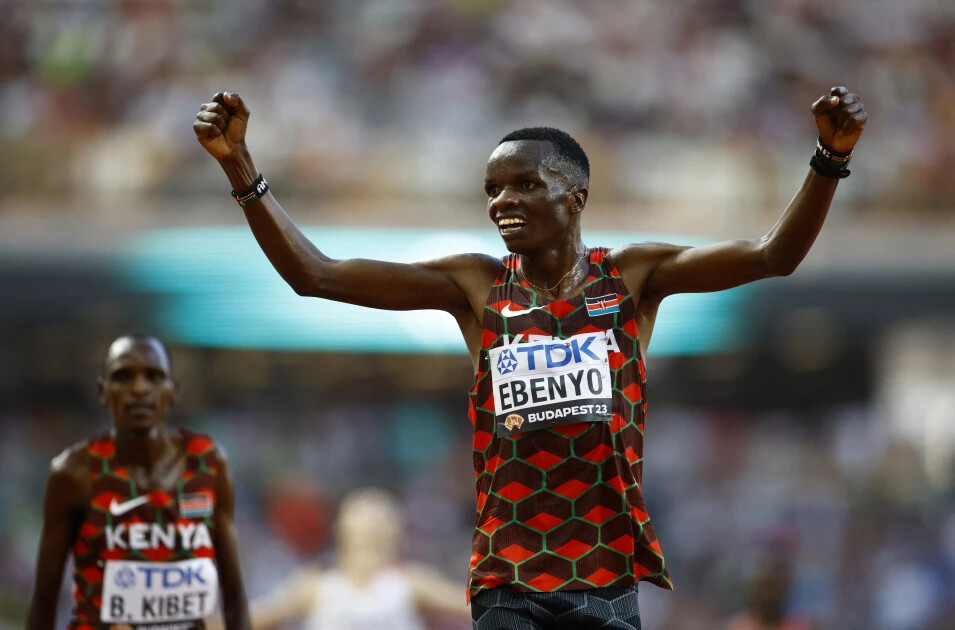
The World 10,000m silver medalist faces competition from fellow Kenyan Benard Biwott and Ethiopian Haymanot Alew, both aiming for strong finishes and setting their sights on the Paris Olympics. Another Kenyan, Leonard Barsoton holds the men's event record with a time of 1:12:49.
The women’s race will feature Ethiopian Yalemzerf Yehualaw, the 10K world record-holder, who will be making her debut in the women's 25K.
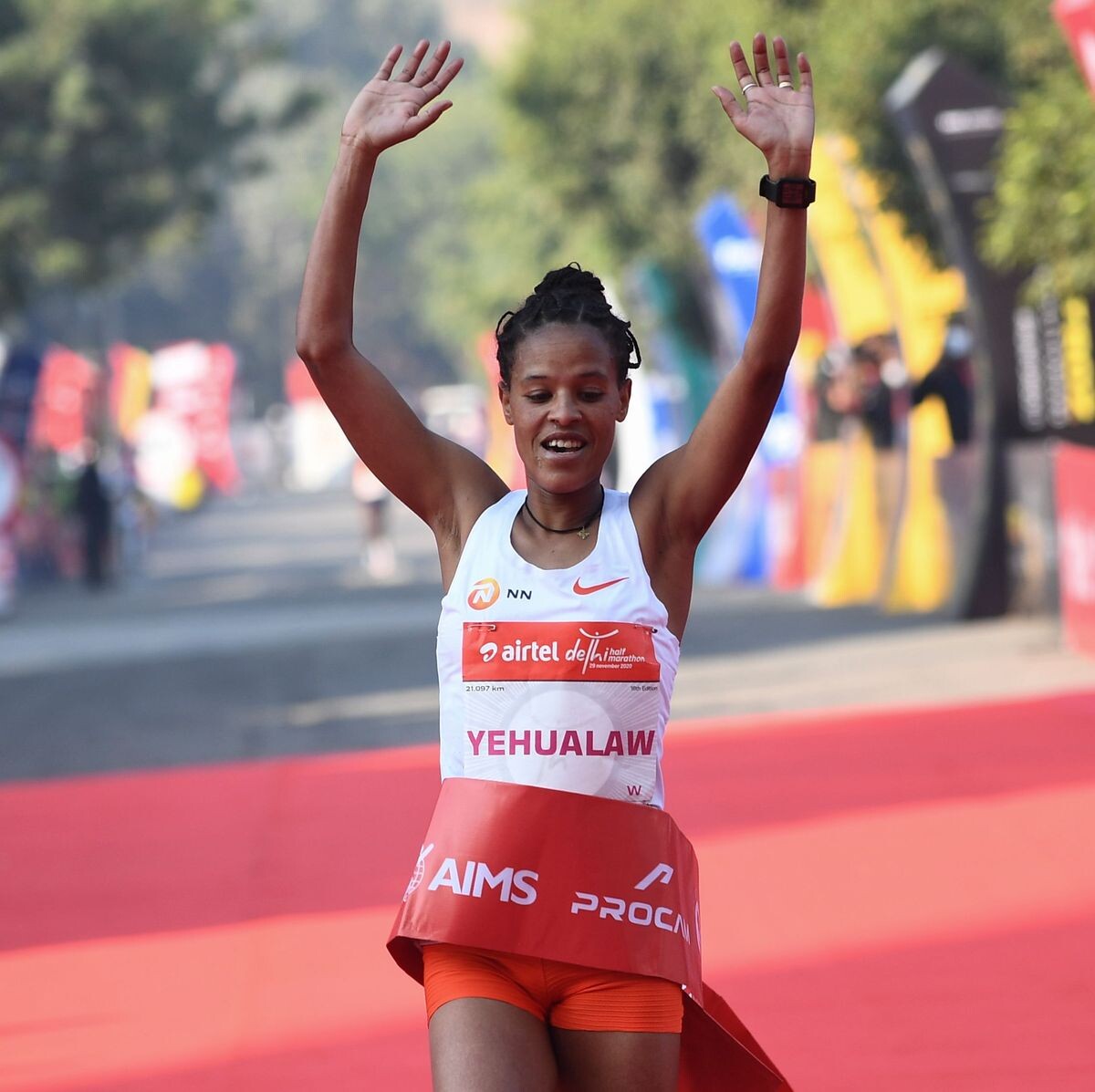
The Ethiopian faces competition from Uganda's Mercyline Chelangat and Kenya's Betty Chepkemoi Kibet.
Chelangat will be returning to India for the second time after finishing third in last year's race and aims to improve her performance. Bahrain's Desi Jisa holds the women’s course record of 1:21:04.
The race, offers a total prize money of Ksh 15,553,420, with equal awards for the male and female winners. This is just over $100,000US.
As reported by the race organizers, the top three finishers in each category will receive Ksh 1,166,506.50, Ksh 777,671.00, and Ksh 544,369.70 respectively. There will also be an additional bonus of Ksh 466,602.60 for athletes who break records.
(12/16/2023) ⚡AMPby Abigael Wuafula
Kolkata 25k
In Kolkata, a city rich in history, culture and custom, the third Sunday in December is a date that is eagerly anticipated. The Tata Steel Kolkata 25K (TSK 25K) has become synonymous with running in eastern India since it began in 2014. India’s first AIMS-certified race in the unique 25 km distance, the TSK 25K went global in its fourth...
more...Hellen Obiri reveals her main motivation towards Paris 2024 Olympics
Boston and New York Marathon champion Hellen Obiri has revealed the main reason she is determined to represent Team Kenya at next year’s Olympics in Paris
Boston and New York Marathon champion Hellen Obiri is determined to represent Kenya at the Paris 2024 Olympics as it will give her the chance to win the only gold medal still missing in her collection.
Obiri, who has successfully transitioned from track to road, has gold medals in indoor and outdoor, having won at World Indoor Championships, two at World Championships as well as Cross-Country but she had never won at the Olympics, only managing silver twice in 2016 and 2020, both in 5,000m.
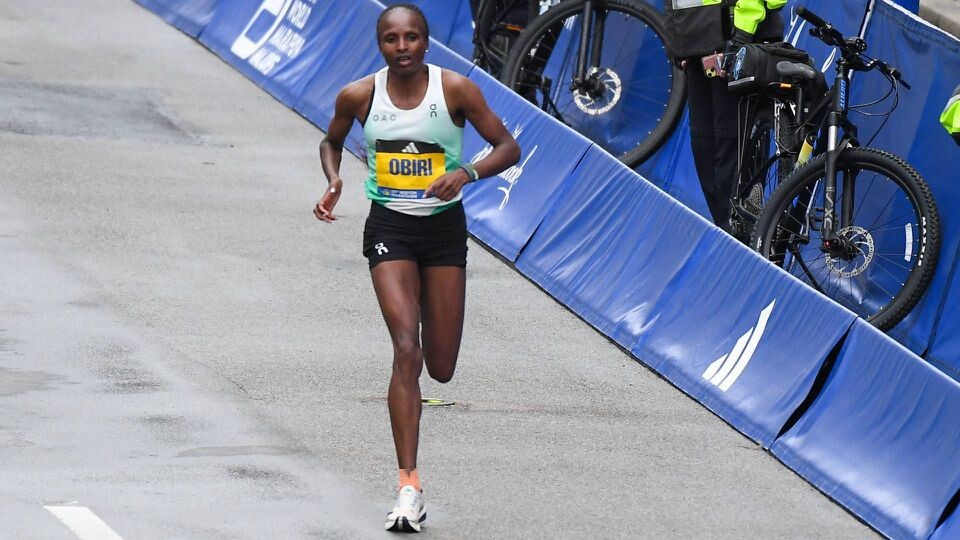
She, however, has a chance to do that in Paris next year, having been named in a formidable provisional Team Kenya and she cannot wait even if the final team of three has not been unveiled.
“I’ve won gold medals in World Championships, so I’m looking for Olympic gold,” Obiri told World Athletics. “It’s the only medal missing in my career.”
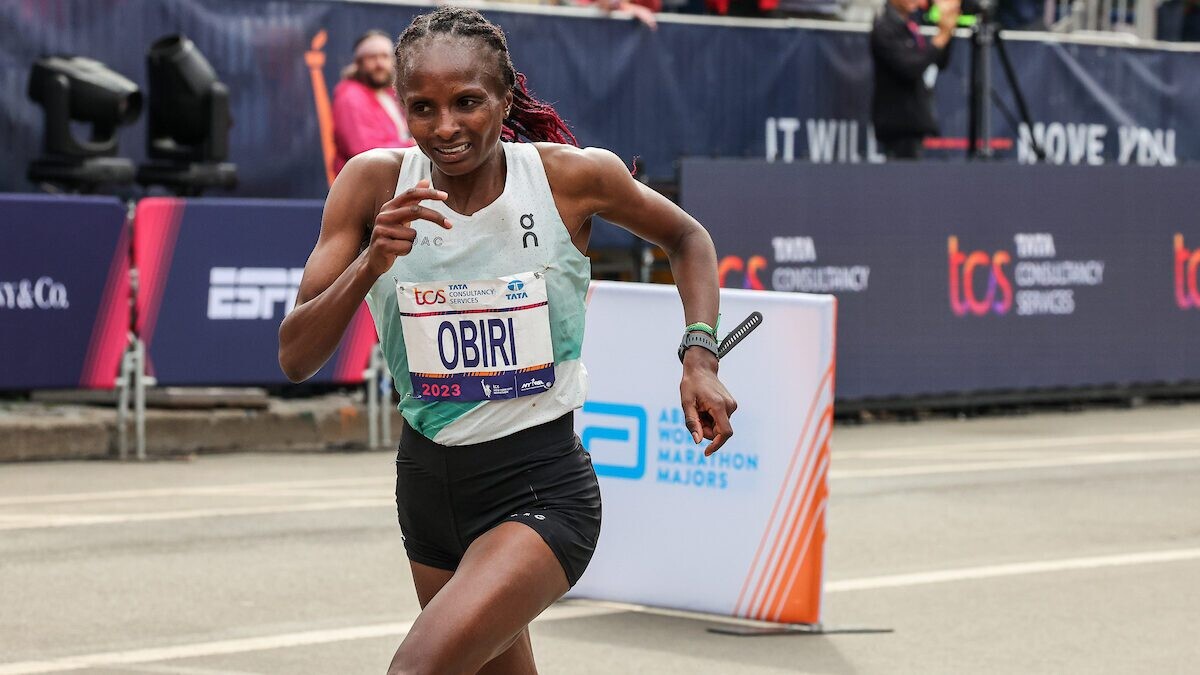
Obiri made the list alongside defending champion Peres Jepchirchir, former world record holder Brigid Kosgei, winner in London in 2020, Tokyo Marathon champion Rosemary Wanjiru, former world champion Ruth Chepng’etich, former world half marathon record holder Joycilline Jepkosgei, Sheila Chepkirui, Judith Jeptum Korir, Selly Chepyego and Sharon Lokedi.
The two-time world 5,000m champion says she has now mustered the road after winning this year’s Boston and New York marathons having received a rude awakening on her marathon debut in New York last year.
“My debut here last year was terrible,” she added. “I didn’t want to come back. But sometimes you learn from your mistakes. I made a lot of mistakes last year.”
One of those mistakes, she confessed, had been running out of fuel – accustomed, as she was at the time, to doing 20-mile training runs in Kenya without any water, gels or electrolytes. “Now I take four sips every 5km,” said Obiri.
The other thing Obiri has mustered is how to execute a tactical marathon race as witnessed in New York this year when she timed her kick to perfection, sprinting away from Letesenbet Gidey and defending champion Lokedi in the final 400m.
She crossed the finish line six seconds clear of Gidey in 2:27:23, with Lokedi a further four seconds back in third place.
“I learned from my mistake in New York,” she confessed. “I used to run from the front in track races and I thought I could do the same in the marathon.”
“That cost me a lot because in the marathon, you can’t do all the work for 42km. What I learned from New York is patience – to wait for the right time to make your move.”
(12/16/2023) ⚡AMPby Joel Omotto
Paris 2024 Olympic Games
For this historic event, the City of Light is thinking big! Visitors will be able to watch events at top sporting venues in Paris and the Paris region, as well as at emblematic monuments in the capital visited by several millions of tourists each year. The promise of exceptional moments to experience in an exceptional setting! A great way to...
more...Brigid Kosgei destroys Abu Dhabi Marathon Course Record
Christmas comes early for Brigid Kosgei with millions earned in Abu Dhabi win.
2019 Chicago Marathon champion Brigid Kosgei will be making merry this festive season after her big harvest at the ADNOC Abu Dhabi Marathon.
Kosgei won the race after clocking a course record time of 2:19:15. The Ethiopian duo of Hawi Feysa and Ethlemahu Sintayehu finished second and third in respective times of 2:24:03 and 2:25:36.
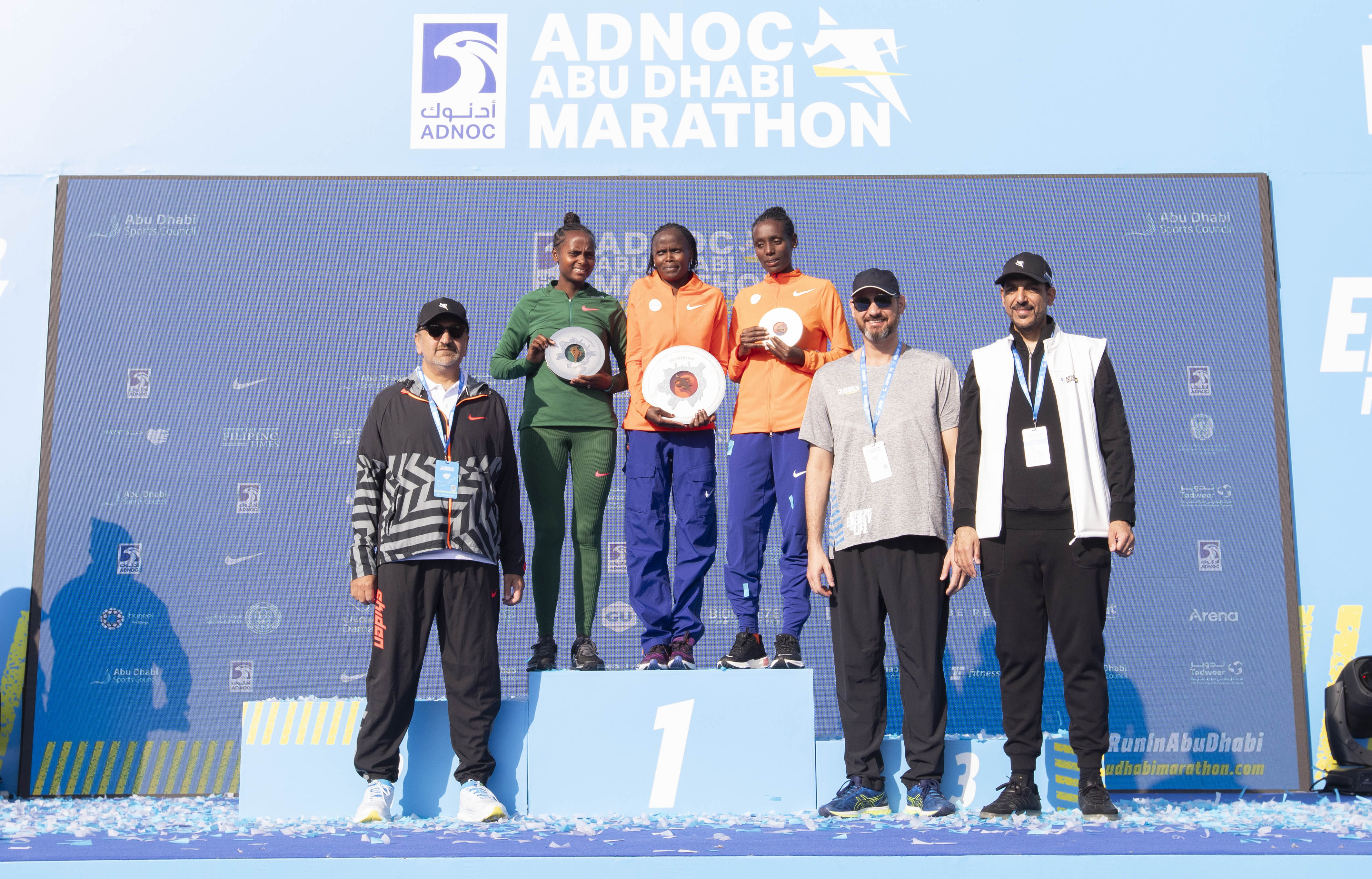
The men’s race was dominated by debutants, with Samson Amare of Eritrea winning the race in a time of 2:07:10. Leonard Barsoton finished second in 2:09:37 while another debutant, Ilham Tanui Özbilen completed the podium in 2:10:16.
According to the race organisers, the winners of the race, in both the men’s and women’s races, will pocket Ksh 7,677,500.

The athletes to cross the finish line first and clock sub 2:20:41 will be awarded a bonus of Ksh 4,606,500. This means Kosgei will pocket Ksh 12,284,000 in total for her dominant exploits.
For the men’s race, a bonus of Ksh 4,606,500 will also be awarded to athletes who win and clock sub 2:04:40.
The athletes who finish second, third, and fourth in the race will walk away with Ksh 3,071,000, Ksh 1,535,500, and Ksh 921,300 respectively. Those who finish fifth, sixth, and seventh will pocket Ksh 460,650, Ksh 383,875, and Ksh 307,100.
The race organisers have also set aside Ksh 230,325, Ksh 153,550, and Ksh 76,775 for the athletes who finished eighth, ninth, and 10th respectively.
Meanwhile, the athletes who finish second and clock sub 2:05:40 (men) and 2:21:41 (women) will be awarded a bonus of Ksh 767,750.
Those who finish third and clock sub 2:06:40 (men) and 2:22:41 (women) will also walk away with a bonus of Ksh 767,750.
(12/16/2023) ⚡AMPby Abigael Wafula
ADNOC Abu Dhabi Marathon
The Abu Dhabi Marathon is shaping up to being first class marathon for both elite runners and average runners as well. Take in the finest aspects of Abu Dhabi's heritage, modern landmarks and the waters of the Arabian Gulf, at this world-class athletics event, set against the backdrop of the Capital's stunning architecture.The race offered runners of all abilities the...
more...YouTube Star Casey Neistat Completes Dream Sub-3-Hour Marathon
It took 17 years and 24 marathons, but he hit the milestone at the Tucson Marathon alongside his coach.
It was a feat 17 years and 24 marathons in the making, but for filmmaker Casey Niestat, persistence finally paid off with a major milestone.
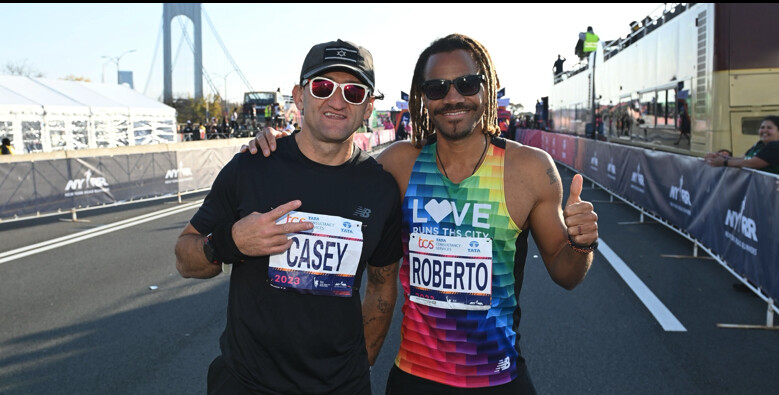
Niestat, fresh off of running the New York City Marathon last month, finally achieved his goal of running a sub-3-hour marathon at the Tuscon Marathon in Arizona this past weekend.
With the help of his coach, Roberto Mandje, also the New York Road Runners’ senior advisor on engagement and coaching, Neistat powered through the course to finish at 2:57:34. The two triumphantly crossed the finish line simultaneously.
“What a ride, we did the damn thing,” Mandje said in a reply to the caption.
Neistat, a long-time New Yorker, has become a fixture at the New York City Marathon, making his seventh appearance in the race last month, narrowly missing his goal then with a time of 3:01:27. The time was his personal best on the course by nearly two minutes. Earlier this year, the YouTube star ran in the Brooklyn Half alongside a few other notable participants.
So what’s next for Neistat? If past races are any indication, plenty of video footage from the event will be posted to his YouTube channel. As for racing, one commenter already suggested he aim higher next time. “Congrats brother! Next stop, sub-2:30.”
“I failed my first 24 attempts. Today, I did it,” he said in a post to Instagram. “Thanks @robertomandje, for being the best coach and yelling at me at mile 24 to go faster.”
(12/16/2023) ⚡AMPby Runner’s World
How You Can Incorporate Taylor Swift’s Workout Into Your Own Running
Like Taylor, I run when I sing—and you should, too.
I never knew it, but Taylor Swift is my workout doppelgänger. Like Taylor, I’m a singer (mezzo soprano in my chorus), and I run and lift weights.
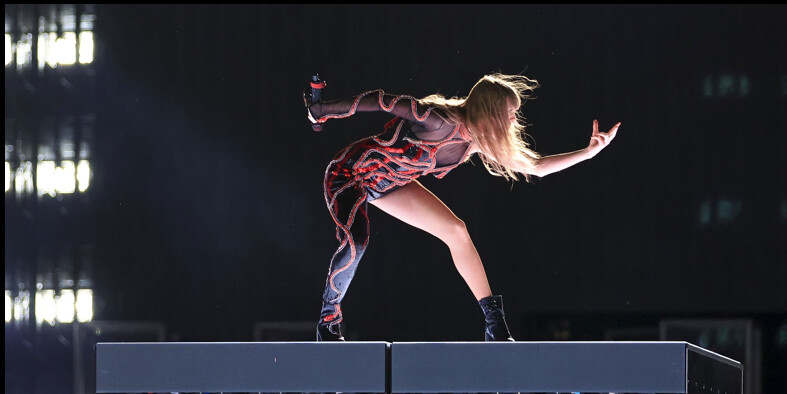
So I was excited to learn that, like me, Taylor sings when she runs. In fact, music is my fuel, and all of my neighbors have heard me sing on my runs. I have no shame (and a pretty good voice).
When she was named Person of the Year, Taylor told Time magazine that to prepare for her Eras tour she ran on a treadmill while singing her three-plus hour set list. The internet—and runners and their coaches—had thoughts.
“It was a great idea for her to pair running and singing to build her endurance for the Eras tour,” Julie Sapper, a Level 2 RRCA-certified coach and cofounder with Lisa Levin of Run Farther & Faster in Hamilton, New Jersey tells Runner’s World. “I hope she took walks and hydration breaks, though, because without them, three hours on a treadmill could cause injury.”
While we don’t know the exact details of Taylor’s run and strength training workouts, which she did at The Dogpound, a very exclusive gym with NYC and L.A. locations, we do know that all of us can adapt some of Taylor’s habits to our own training. Including—that’s right—singing.
Sing more to help you run better
If you’ve ever run with a friend and tried to hold a conversation for more than a few minutes, but ended up huffing and puffing, then you have used the “talk test” to help determine the intensity of your run. Essentially, if you can talk while you run then you’re running “easy,” but if you can’t talk and need to catch your breath, you’re running “hard.” These metrics, though, don’t tell you anything about pace or time, which makes some runners doubt the validity of the test.
This also relates to running and singing. “If you are running at the right intensity, you should be able to sing without pausing for breath,” Alethia Mongerie, also known as Coach Mekela, a Level 2 RRCA-certified coach in Robbinsville, New Jersey, tells Runner’s World. “You should be able to complete a verse or sentence without halting.”
In fact, singing may even be better than talking to determine your intensity while you run because the lyrics and melody need to come out smoothly and without gulps of air. In order to do this, you need to take deep breaths, then let the air out in a continuous exhale so that when you start the phrase,“And it’s new, the shape of your body…” you can get to “It’s a cruel summer/With you” without losing your breath or rushing the words.
Mongerie suggests pairing your singing with zone 2 running. There are five running “zones,” all of which are based on your heart rate. Zone 2 is essentially 60 to 70 percent of your maximum heart rate and should feel like a light effort. “If you can run and sing in zone 2, you are doing it right,” Mongerie says.
Taylor Swift mentioned she used her set list to determine her treadmill pace, often walking during slow songs and speeding up to running during the fast tunes. Consider this another way to incorporate a Fartlek run into your treadmill workouts, which can boost the fun as you surge and slow down at different points throughout your run. Plus, put Taylor on the playlist and you know all too well the range of emotions that’ll help push you through each of those intervals.
Add strength and conditioning workouts, like Taylor’s, to your schedule
While she gave no specifics, Taylor also did what she called “strength and conditioning work” before her tour. “Strength and conditioning are very different and are both important,” explains Sapper. Strength work is lifting heavy with appropriate rest in between sets, while the purpose of conditioning is to work with no (or very little) rest at lighter loads to maintain a higher heart rate.
Here are two examples:
Strength: 3 to 4 sets of 4 to 6 squats with a heavy weight where the last rep feels super hard, and with 3 to 5 minutes of rest in between sets
Conditioning: 5 sets of jumping rope for 30 to 45 seconds, followed by 10 push-ups with no breaks between exercises or sets
Both sequences strengthen your legs, while the second also offers cardio benefits, and it’s important to add both types of training to your workout schedule.
Of course, anyone can see that it’s not just Taylor Swift’s legs that are strong. She holds an eight-pound guitar during part of the show and while, yes, she uses a strap, it’s still an added weight to her upper body. A strong upper body has been shown to improve running economy, too, according to a systemic review with meta-analysis published in a 2021 issue of Sports Medicine. So it’s smart to get your arms in on the action during strength workouts, too.
Recover right (just maybe don’t stay in bed all day)
There is one significant difference between Taylor’s training and performance and that of most runners, and it doesn’t only come down to our paychecks. Taylor hits one city and performs a few days in a row while the rest of us should leave more time for rest and recovery between our workouts, Sapper says.
In fact, in her Time interview, Taylor said she takes to her (hotel) bed for a full day of rest after a stretch of shows. “My daughter, a Swiftie, and I actually discussed this after she saw the show,” Sapper says, “How does she have the stamina to do one concert, much less a few in a row? Unlike athletes, she’s not periodizing her training. The key has to be her recovery and that’s true for any athlete.”
According to the National Academy of Sports Medicine, periodization comprises training phases and cycles to reach strength and performance goals. Taylor, though, is doing essentially the same show on most nights for months. That’s exhausting both physically and mentally. To recover, she told Time, she lies in bed for a day, resting her entire body, including her voice.
Most of us can’t—and probably shouldn’t—do that because active recovery leads to better results. Active recovery means walking, getting a massage, or doing other light activities to keep your muscles moving without straining them.
Create your own playlist for improved performance
All of us are impressed by the musicians—Taylor (now 34), Bruce (72!), and Beyonce (42)— who put on two- to three-hour shows, but we aren’t surprised. That’s because music can lessen the perceived effort of running.
In fact, according to a 2021 study published in the Journal of Functional Morphology and Kinesiology, listening to music improves performance in endurance, sprints, and resistance exercise, but it’s important to listen to music you like, not just the music piped into a gym. In fact, if you don’t like the playlist, you might even be discouraged from exercise.
So even if you aren’t a Taylor fan, turn up the volume on a playlist you like (or find one from the Runner’s World archives) and start your stride. You might not reach pop star status, but the beats will keep you running toward your goals.
(12/16/2023) ⚡AMPby Runner’s World
Eliud Kipchoge takes a step into coaching
Eliud Kipchoge, who has dominated running for nearly two decades, winning countless awards, medals and accolades, is stepping into a coaching and mentorship role with the U20 World Athletics Athlete Refugee Team (ART). According to World Athletics (WA), Kipchoge will take a mentorship and assistant role, using his experience in the sport to educate and inspire upcoming refugee athletes.
The World Athletics Athlete Refugee Team is comprised of athletes who have fled violence, conflict and injustice in their home country. The team was founded in 2016 and has since evolved into the world’s only year-round elite refugee team program. The Refugee Olympic Team made its first competitive appearance at the 2016 Olympic Games and has competed at most WA events since then.
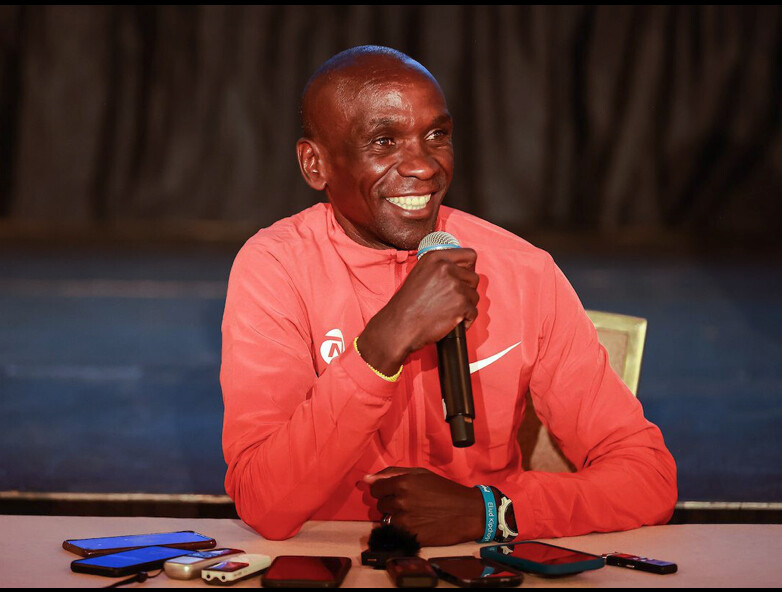

Kipchoge and the team’s head coach, Janeth Jepkosgei, former world 800m champion, will mentor the U20 team through to the 2024 World Athletics U20 Championships in Lima, Peru, next August.
The two-time Olympic champion’s mentorship will begin in January, per WA: “Kipchoge will motivate the team members by sharing his knowledge and discipline in the sport while encouraging them to pursue their education and read books, which is one of his passions,” said the press release.
Note that Kipchoge’s new role does not mean is he stopping his running career anytime soon. The 39-year-old still has aspirations to win every Abbott World Marathon Major (he is missing only New York and Boston) and potentially a third Olympic marathon title next year in Paris.
Having Kipchoge as a coach is an incredible opportunity for any runner. He has 11 Abbott World Marathon Major victories to his name and four Olympic medals to go along with it. We are confident he knows a thing or two about running, and can provide some inspiration with his Kelly Clarkson pump-up music.
(12/16/2023) ⚡AMPby Running Magazine
Starting pistol under the gun at U.S. high school track program
A high school in Seattle, Wash., is aiming to lead a movement in track and field by advocating for the elimination of starting pistols from high school and university-level track meets.In November 2022, a shooting inside the hallways of Ingraham High School resulted in the tragic death of a 17-year-old and left teachers and students traumatized. Now, the school’s track coach and athletic director, Mike Wentzel, is looking to make a change.
According to Seattle’s NBC K5 News, Wentzel recognized that the starter pistol used for track and field meets, which fires high-calibre blanks, could potentially be traumatizing for the young athletes. “The idea that we would fire off a gun over and over during the track meet, which can be heard throughout the entire campus and neighbourhood, to me is just unacceptable,” said Wentzel.Wentzel and Ingraham High School are urging every high school in their district and state to adopt an electronic starting system that triggers a tone and flashes lights instead of firing pistol blanks. The cost for one system per school is estimated to be around USD $7,000.“The electronic starting systems are such that at the time you push the button that triggers the tone, it also starts the timing system, so the timing would be precise,” Wenzel explained to NBC K5 News.
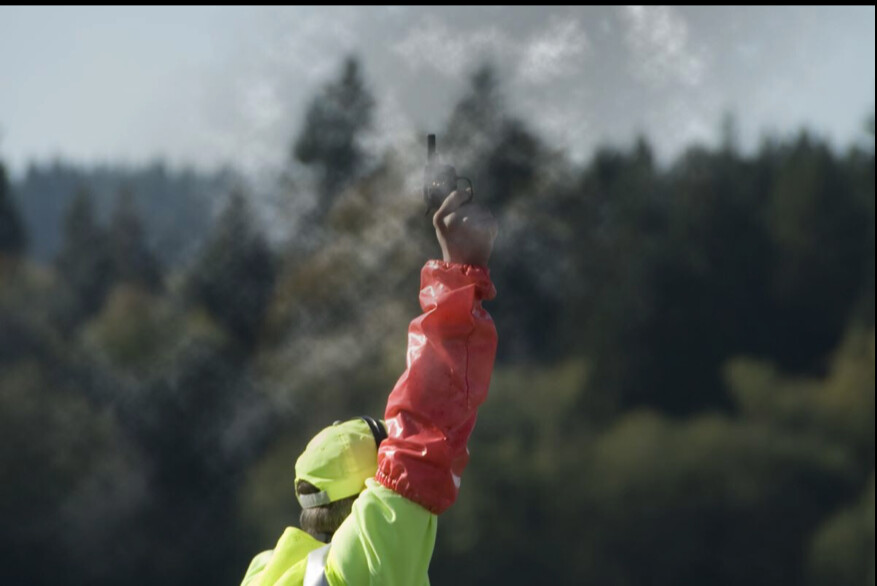
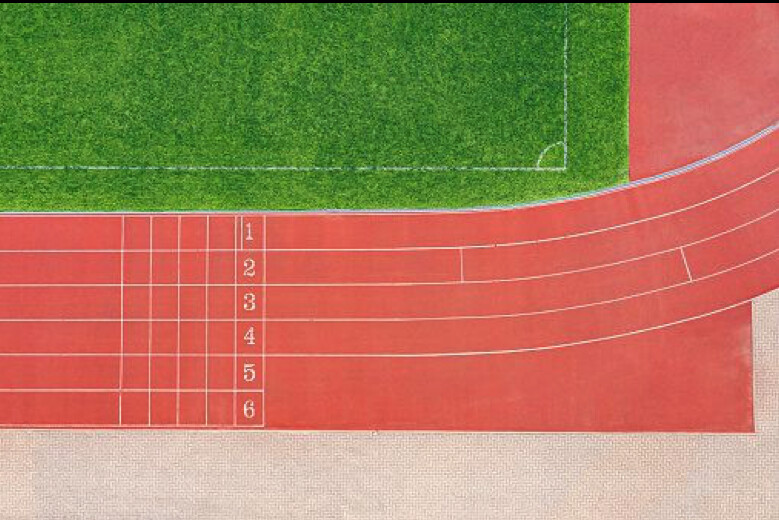
The electronic system plays a simulated gunshot sound broadcasted through speakers. While World Athletics and the Olympics have been using electronic systems since 2012, most U.S. high school and NCAA collegiate meets still use starting pistols. The Ontario Federation of School Athletic Associations (OFSAA) and B.C. School Sports transitioned to electronic starting systems nearly five years ago. Wentzel, along with Ingraham High School students, are actively raising funds to have the new system in place across the district by spring. They have currently raised $7,000 of their $27,000 goal.
(12/16/2023) ⚡AMPby Running Magazine
James Mwangi Wangari slapped with eight-year ban for doping offense
The Athletics Integrity Unit has banned 29-year-old James Wangari for violating an anti-doping rule.
The Athletics Integrity Unit has slapped James Mwangi Wangari with an eight-year ban for violating anti-doping rules.
The AIU reported that his ban backdates to December 21, 2022, and will run for eight years. The Kenyan has been banned for the Presence/Use of a Prohibited Substance (Norandrosterone). His results from November 6, 2022, have also been disqualified.
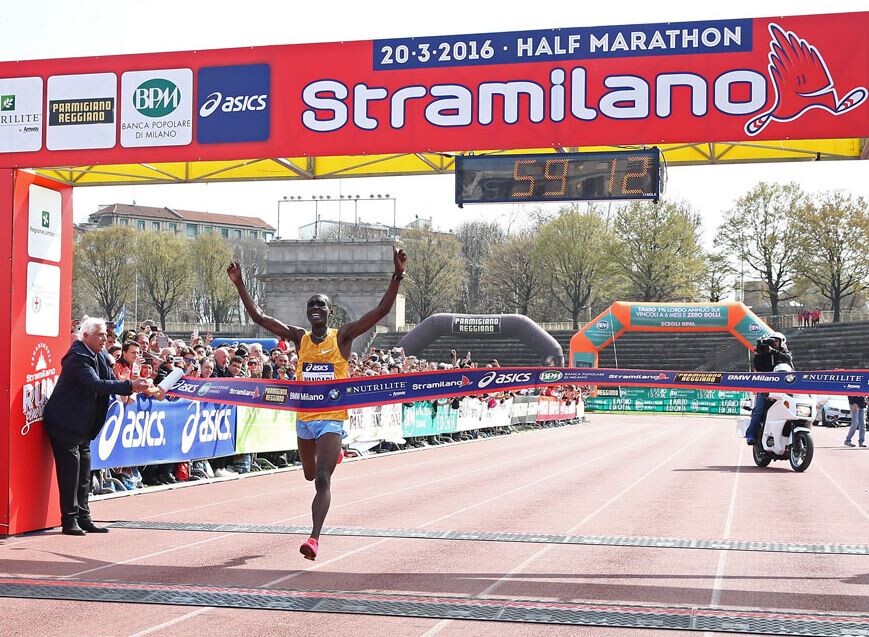
The AIU disclosed that Wangari had written to them explaining that he did not dope intentionally and requested a retest.
However, Wangari noted that he could not conduct the retest and therefore, the AIU charged him with an anti-doping rule violation.
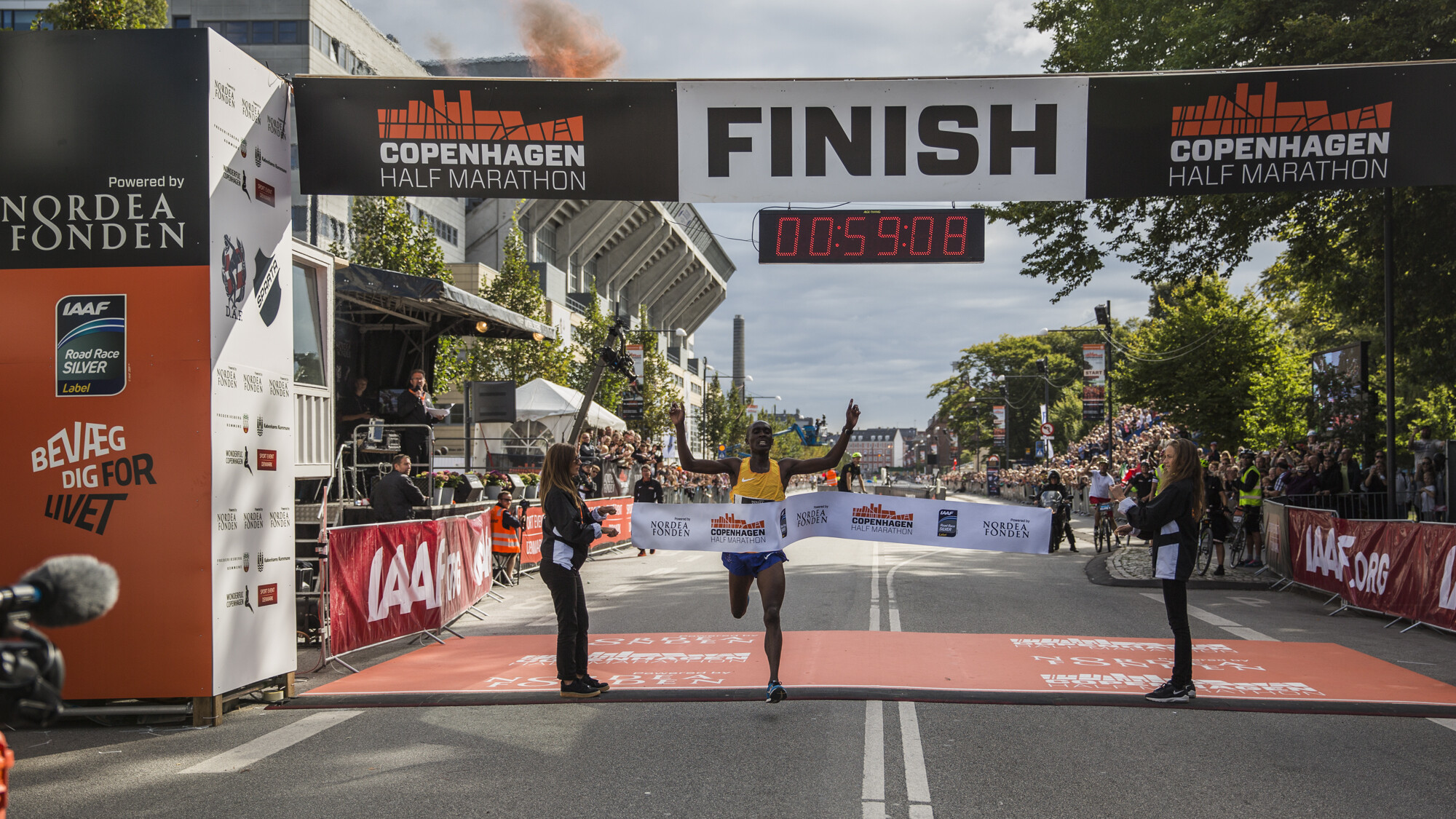
However, in February this year, the athlete requested a hearing and the matter was referred to the Disciplinary Tribunal. However, after a series of meetings with the AIU, it was ruled that he had committed the offense.
Meanwhile, others to join the list of shame include Joyce Chepkemoi Tele who has been banned for 18 months, from June 27, 2022 for the Presence of a Prohibited Substance (triamcinolone acetonide). Her results from April 3, 2022, have been disqualified.
Another Kenyan, Rebecca Jepchirchir Korir has also been banned for 2 years, from November 2, 2023, for the Presence of a Prohibited Substance (methylprednisolone).
Also, Sitora Khamidova of Uzbekistan has been suspended for the Presence/Use of Prohibited Substances Dehydrochloromethyl-testosterone, heptaminol, and octodrine.
(12/15/2023) ⚡AMPby Abigael Wuafula
Four ways runners can take care of their mental health this season
For some runners, the holiday season is a challenging time of year. Societal expectations can make those who don’t want to be particularly festive feel like they must either put on a good front or stay home. Whether you celebrate or not, this time of year can be hard to navigate and can leave runners (and everyone) dealing with complicated feelings.
The Canadian Mental Health Association (CMHA) website shares that more than half of Canadians report feelings of anxiety, depression and isolation at this time of year. Here are a few ways runners can protect their mental health during the holiday season.

1.- Festive flexibility
Give yourself the gift of flexibility in your running routine. Acknowledge that the holiday season can be hectic, and recognize that it’s OK to adjust your training plan temporarily. Be adaptable, allowing room for extra rest days and shorter runs, when needed. You’ll maintain a positive relationship with running and reduce unnecessary pressure on yourself. Missing a few runs over the holidays is not going to have an impact on your long-term running goals (but beating yourself up for doing so might).

2.- Connect with your community (if you want to)
The holiday season can be especially tough if you are feeling lonely. Your local running community can be a positive place to connect with other runners, and chances are, others are experiencing similar feelings. Signing up to volunteer at your local parkrun, or heading out for a run with your local running community may give you a much-needed boost. If you’re not feeling up to running and don’t feel like socializing, that’s also OK. CMHA suggests doing something special for yourself: cooking your favourite foods, going to a movie or starting a holiday project.
3.- Go for a run (if that helps)
For many of us, running is a daily pick-me-up. If running is supporting your mental health and is something that helps you tackle everyday life challenges, don’t be afraid to make it a priority. Need to press pause on making holiday treats with the fam to fit in a few stress-relieving miles? Consider this your reminder that you never need to apologize to others for taking care of your physical and mental health needs. Your family and friends will benefit from the healthier, happier post-run you, and you’ll be able to savour the family antics while feeling relaxed.
4.- Don’t be afraid to seek help
While seeking therapy and talking about mental health is becoming less stigmatized, it can still be really hard to tell others that you are feeling low. Canadian Olympian middle distance champ Gabriela DeBues-Stafford recently shared about her own struggles on Instagram and encouraged others to seek help. “If you’re struggling, please reach out, and don’t lose hope,” DeBues-Stafford wrote. “I know it’s hard now, but the world is a better place with you in it.”
For a variety of reasons, many of us may not be comfortable sharing what we are going through with those closest to us. There are resources available if you need help navigating the challenges you are facing, or simply need to talk. Bigger Than The Trail is a non-profit that uses trail running as a platform to advocate for mental health, and will provide three months of online counselling through Betterhelp to anyone seeking help.
(12/15/2023) ⚡AMPby Keeley Milne
Texas man breaks Guinness World Record for fastest marathon in football equipment
Suiting up in any costume and attempting a marathon can’t be comfortable, especially when you’re wearing an additional 20 lbs of football equipment. Brian Goldsmith, a 37-year-old fitness instructor and ticketing representative for the Arlington Renegades of the XFL, ran 3:29:30 at Sunday’s BMW Dallas Marathon in full football equipment to set the Guinness World Record.
According to Dallas Morning News, Goldsmith initially aimed for a Boston Marathon qualifying time when he signed up for the BMW Dallas Marathon. However, a colleague’s suggestion to run the race in an Arlington Renegades shirt sparked an idea—why not fully suit up in gear and go for the Guinness World Record?
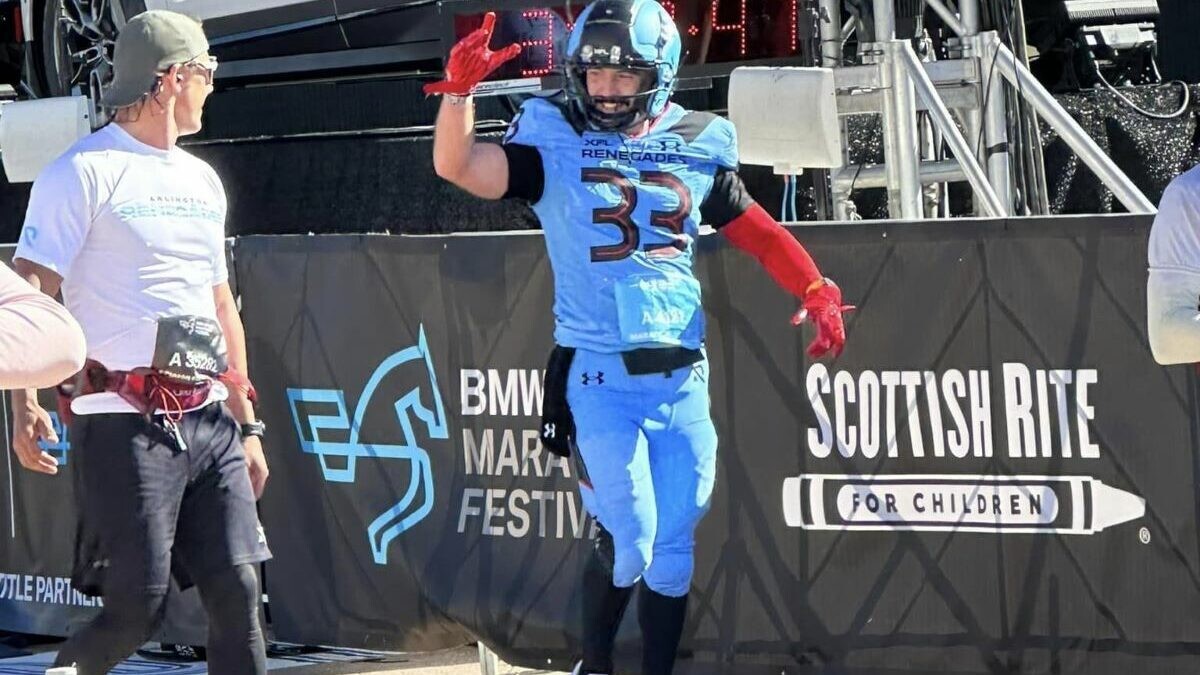
Goldsmith mentioned on his Instagram page that he trained his body to get comfortable in football gear by wearing it around the office all day. While this might cause a ruckus in 99.9 per cent of offices, Goldsmith is fortunate to work for a football team. He is also reportedly the first person ever to set a world record while wearing an Arlington Renegades uniform, according to Dallas Morning News.

He beat the previous record of 3:33:42 set in 2019 by Australia’s Alistair Kealty by four minutes. This wasn’t his first attempt at a Guinness World Record. Goldsmith previously tried to run the fastest half-marathon dressed as a piece of fruit, sporting a banana costume, but he fell short of California’s Melvin Nyairo, who clocked 1:15:35 at the 2019 Toronto Waterfront Marathon.
The Arlington Renegades are one of eight teams in the XFL, a minor professional football league for development players in the U.S. The Renegades are owned by Dwayne ‘The Rock’ Johnson and are the most recent champions in the XFL.
(12/15/2023) ⚡AMPby Marley Dickinson
BMW Dallas Marathon
The BMW Dallas Marathon is the result of the efforts of a pioneering group of brave Dallas runners, who had the foresight to establish an annual 26.2-mile race more than 40 years ago. In 1971, Tal Morrison – the official founding father of the marathon – placed a $25 ad in Runner’s World beckoning runners from around the country to...
more...Ferdinand Omanyala wants to do both the 100m and 200m at Paris Olympic Games
Ferdinand Omanyala has disclosed that he will be adding the 200m to the cart next season as he looks to double at the Olympic Games.
Commonwealth Games 100m champion Ferdinand Omanyala is considering adding 200m to his roster as he gears up for the Olympic Games in Paris, France, next year.

Omanyala, who just changed coaches recently told the Olympics' official portal that his new coach, Geoffrey Kimani wants him to run a couple of 200m races and even the 400m if possible.
He will be competing in the half-lap race in a couple of meets to gauge his form and see if he could double on the global stage.
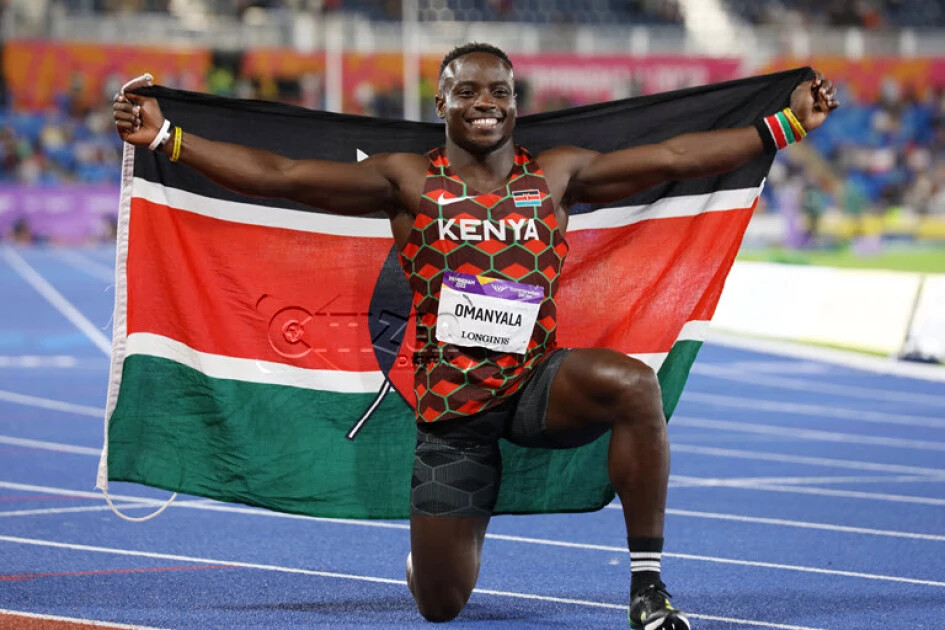
“My current coach says we must do the 200m and he also mentioned the 400m somewhere…I don’t know how that will turn out.
"I’m looking at the 200m next year and I’ll do a couple of meets and then see where I am but you know…we shall make that decision when I run a couple of 200m races. If I’m too comfortable, then I’ll push it through,” Omanyala said.
Meanwhile, the 27-year-old has competed in a couple of 200m races but is yet to make a mark in any premier global competition.
During his international outings, he competed in the 200m at the 2022 Castiglione International Meeting, Stadio Zecchini in Italy, and won the race.
Omanyala also competed at the 2021 3rd MoC Grand Prix where he finished third and also won the 2022 ASA Athletics Grand Prix 3.
(12/15/2023) ⚡AMPby Abigael Wuafula
Paris 2024 Olympic Games
For this historic event, the City of Light is thinking big! Visitors will be able to watch events at top sporting venues in Paris and the Paris region, as well as at emblematic monuments in the capital visited by several millions of tourists each year. The promise of exceptional moments to experience in an exceptional setting! A great way to...
more...A one-hour speed boost to revitalize winter legs
While most runners concentrate on establishing a solid base or maintaining fitness during the cooler months, injecting occasional bursts of speed can significantly benefit our legs. Longer, easy runs play a crucial role in gradually building mileage, but as our legs fatigue and our focus wavers, the risk of sloppy form increases. Running at a faster pace naturally tightens and improves running form.
Incorporating speed sessions periodically, even in your base-building season, is a strategic way to keep our racing legs and racing minds sharp and snappy.
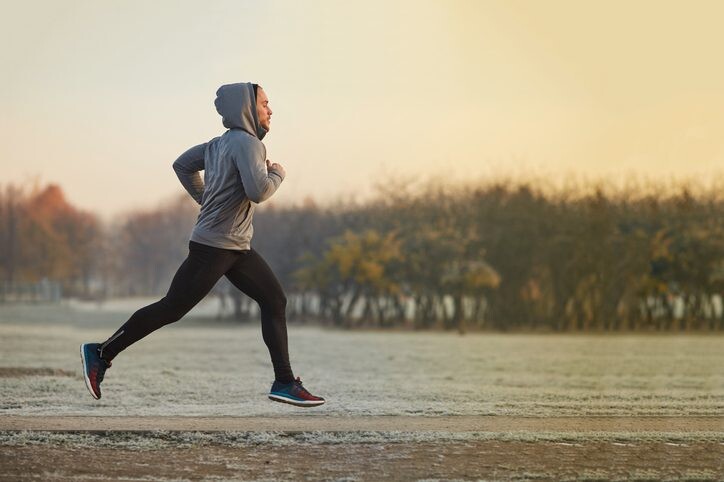
Investing in an occasional speed session now can yield pleasant surprises in your performance when you transition into racing gear in the spring. This one-hour session is an ideal addition to your training routine whenever your legs crave a pick-me-up. Aim for an effort level that is challenging yet sustainable in the two-minute intervals—avoid forcing intensity. Feel free to adjust the effort based on how your mind and body are responding. If you’re short on time, limit the warmup to 10 minutes and do fewer intervals; you’ll still reap the rewards.
The workout
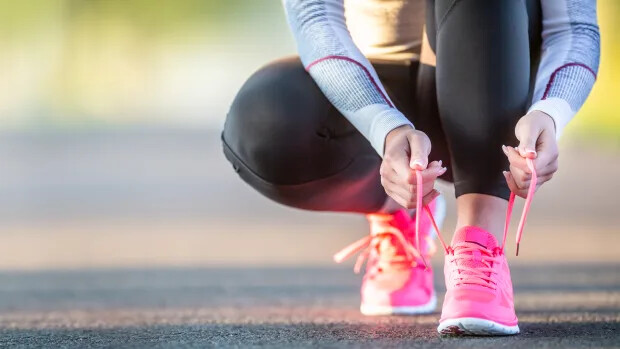
Warm up with 20 minutes of very easy running. Start at a very easy pace and gradually pick up speed toward the end of the warmup with a few accelerations, strides or dynamic stretches as an optional addition.
Run 7 x 2 minutes of hard effort, followed by 2 minutes of easy recovery. While you can adjust the pace and effort level to suit your needs, strive for consistent, smooth pacing during the hard section.
Cool down with a very easy 10-minute jog.
Make sure to follow a speedwork or harder-effort day of running with a very easy or rest day.
(12/14/2023) ⚡AMPby Keeley Milne
Cynthia Limo wins marathon debut after seven-year break plagued by depression and grief
Resilience defines Cynthia Limo's marathon debut win, overcoming loss and adversity with a powerful performance that inspires and uplifts.
The 2016 World Athletics Half Marathon Championships silver medalist Cynthia Jerotich Limo added another extraordinary chapter to her remarkable journey as she clinched victory in her marathon debut at the Honolulu Marathon on Sunday.
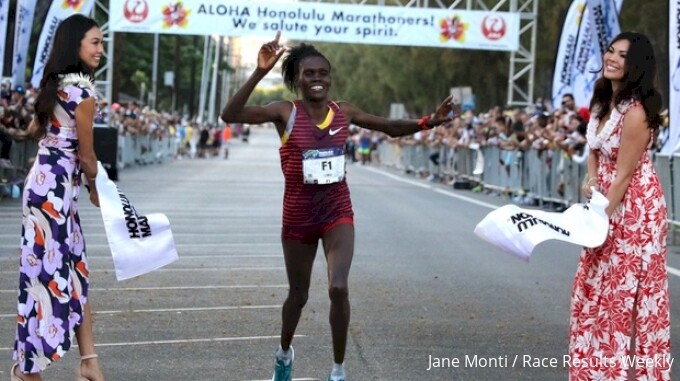
Limo's marathon journey began with a strategic approach that showcased her discipline and meticulous planning.
Running alongside Ethiopians Sintayehu Tilahun Getahun and Kasu Bitew Lemeneh, she patiently waited through the early stages of the race, hitting the 5km mark in 18:17 and slightly picking up the pace through the 10 km mark in 35:59.
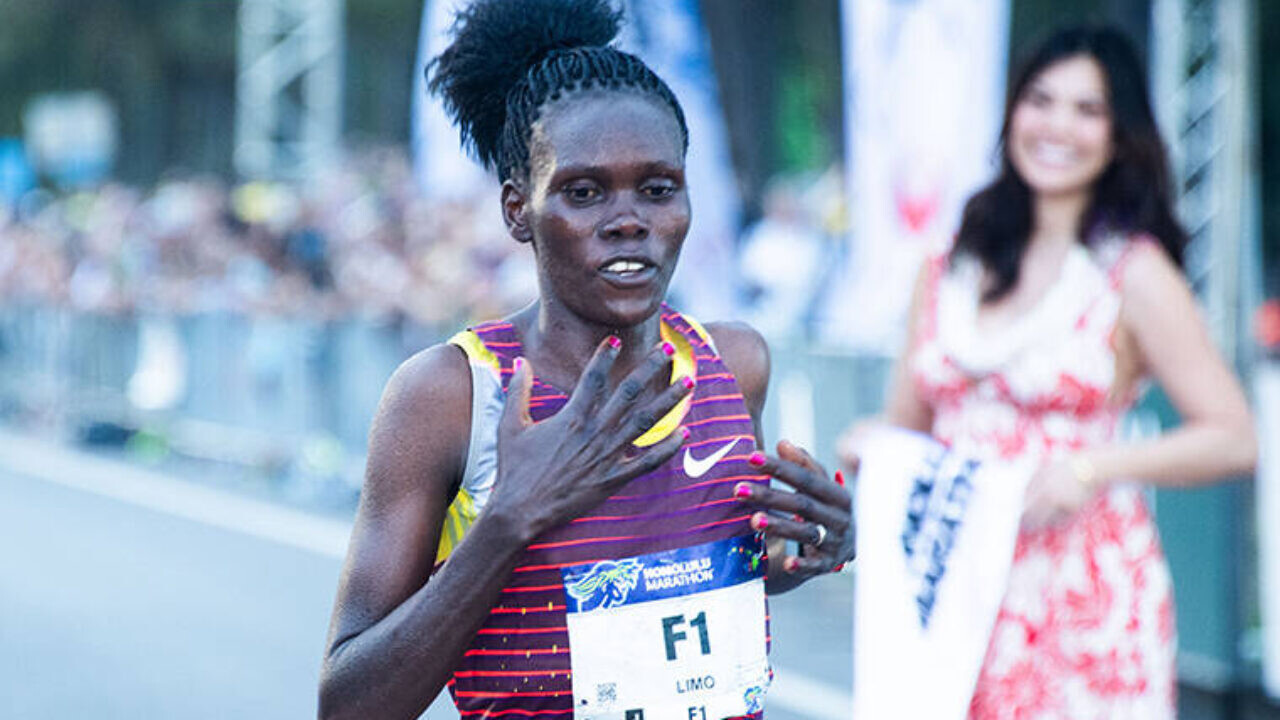
The halfway point came and went with no significant changes (1:16:43), and the 30 km mark passed in 1:50:05.
It was after the 30km aid station that Limo began to pull away, leaving Lemeneh behind.
Limo and Getahun then ran together for the next 5km segment, showcasing the incredible endurance they had built over time.
At 35km Limo made her move, steadily increasing her lead. By the time she reached the 40km mark, her lead had ballooned to a commanding one minute and 38 seconds.
Limo finished strong in 2:33:01, running the second half of the race slightly faster than the first and leaving Tilahun in her wake, who finished in 2:35:16.
In her own words, Limo described the decisive moment, saying, "When we got to 35 kilometers, I felt that I was still strong and I knew it was only seven kilometers that remained, so I had to do it by myself. I tried to push and push. I am so pleased."
Limo's impressive marathon debut can be attributed not only to the high mileage she logged during her training in Kenya but also to the speed she honed while competing in various American road races throughout the year.
These included notable wins at the Cooper River Bridge Run 10km in Charleston, South Carolina, the Carmel Half-Marathon in Indiana, the Toledo Half-Marathon in Ohio, and Philadelphia's Broad Street Run 10 Mile.
Reflecting on her marathon success, Limo emphasized the importance of mental fortitude, stating, "I can say that it was not really so hard to do the marathon. It is a matter of making up your mind that you can do the training. And I am so happy that I did that."
What makes Limo's victory even more remarkable is the adversity she has overcome to reach this point.
She took a seven-year hiatus from competitive running, during which she faced the unimaginable loss of a child and battled depression.
It seemed like a comeback was out of reach, but her determination to support her family and her unwavering spirit kept her pushing forward.
From 2012 through 2016, Limo dominated the racing circuit, finishing first or second in an astonishing 43 out of 51 races.
Her list of accomplishments includes numerous victories in races ranging from four miles to 20 kilometers, with 2014 standing out as a year of exceptional success when she won 12 out of 13 races.
Limo's roots are firmly planted in Iten, Kenya, where she resides with her husband, who is a teacher, and their daughters Ann, four, and Rebekah, two.
Tragically, their eldest daughter, Blessed, was born with a spinal birth defect and passed away before her second birthday.
In 2023, Cynthia Jerotich Limo returned to the world of competitive running, putting in the hard work and dedication to regain her form in Kenya.
(12/14/2023) ⚡AMPby Festus Chuma
Honolulu Marathon
The Honolulu Marathon’s scenic course includes spectacular ocean views alongside world-famous Waikiki Beach, and Diamond Head and Koko Head volcanic craters.The terrain is level except for short uphill grades around Diamond Head. ...
more...Tirunesh Dibaba to battle Brigid Kosgei at Abu Dhabi Marathon
Three time Olympic champion Tirunesh Dibaba will battle former world marathon record Brigid Kosgei at the 5th edition of the ADNOC Abu Dhabi Marathon slated for December 16, 2023 in Abu Dhabi, United Arab Emirates.
Dibaba who came back this year to running after five years of no active competition due to maternity leave of her third child, has competed once at the Houston Half Marathon in January where she finished a distant sixteenth. The 38 year-old who is also the five time world champion, comes to this race with the second fastest time on paper of 2:17.56 that she got at the 2017 London Marathon where she finished in second place.
Kosgei who is fresh from finishing in fourth place at the New York Marathon last month with a time of 2:27.45, will have a difficult time as she faces Dibaba who has not raced this season due, as her body has not yet fully recovered from the torture of the hilly course of New York.

The two most accomplished athletes of our time will have to get past the 2019 All-African Games 5000m Silver medallist Hawi Feysa of Ethiopia who holds a personal best of 2:23.38 that she got three years ago at the Standard Chartered Dubai Marathon and last year’s winner of Enschede Marathon, Maurine Chepkemoi from Kenya.
The race organisers have put together a strong female elite field to chase the race course record of 2:20.41 set two years ago by Eunice Chumba from Bahrain.
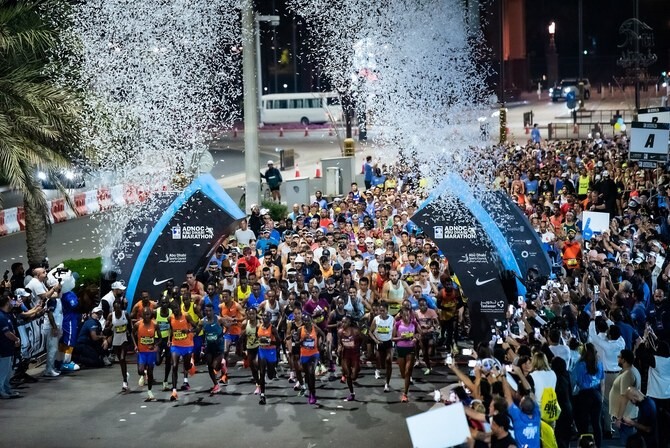
Suhail Al Arifi, Executive Director of the Events Sector at Abu Dhabi Sports Council, said: “We are thrilled to welcome a group of top international runners for the upcoming fifth edition of the ADNOC Abu Dhabi Marathon this month. Their participation highlights the event’s significance locally and globally. The presence of well-known runners in this year’s line-up reaffirms Abu Dhabi’s and the ADNOC Abu Dhabi Marathon’s success in gaining international recognition in long-distance running.
Al-Arifi added, “We’re delighted to invite people from all walks of life and diverse backgrounds to join us in celebrating physical fitness. Regardless of your fitness level, there’s a distance tailored just for you. We encourage everyone to be part of this enriching sports day on the streets of Abu Dhabi, the global capital of sports.”
Participants who register for the race after November 30th can collect their race packs from the Marathon Village between the 12th and 15th December. The race pack will not be available for collection after this period.
(12/14/2023) ⚡AMPby John Vaselyne
ADNOC Abu Dhabi Marathon
The Abu Dhabi Marathon is shaping up to being first class marathon for both elite runners and average runners as well. Take in the finest aspects of Abu Dhabi's heritage, modern landmarks and the waters of the Arabian Gulf, at this world-class athletics event, set against the backdrop of the Capital's stunning architecture.The race offered runners of all abilities the...
more...Usain Bolt sparks speculations of making sensational return to sprinting
Fans across the world are speculating that Bolt could make a comeback in the 2024 Paris Olympics.
World’s fastest man ever Usain Bolt has sent tongues wagging over a possible return to the track going by his latest post on his social media platforms.
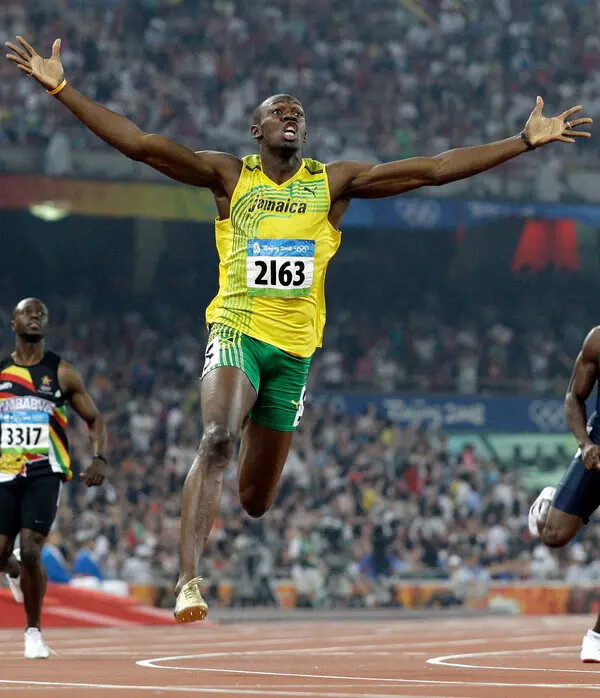
Bolt was last in action back in 2017 when he competed at the Kingston Racers Grand Prix clocking 10.3 to win the race.
In a post on his Instagram handle, Bolt posted a video of himself going through the paces as he ran up the staircase of a stadium.
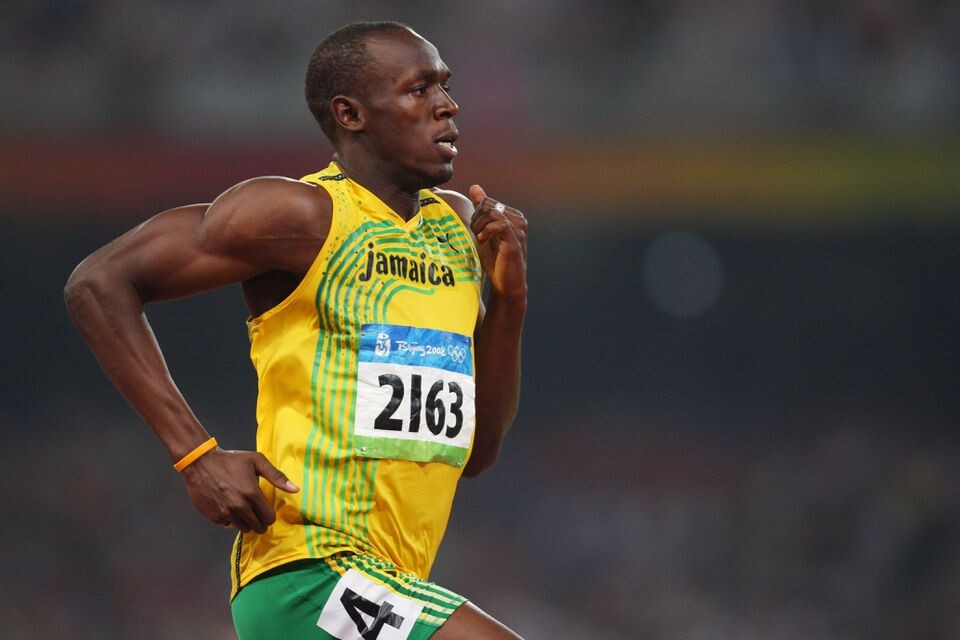
The speed demon accompanied the video with the caption, ”What we been through is more than tongue can tell.”
The post left a number of fans speculating whether Bolt is gearing up for the 2024 Paris Olympics after he was a surprise inclusion in the torch-bearing ceremony.
“Come on man! One more Olympics!!,” read one of the comments on the post. “What? Usain bolt coming in 2024 Olympics,” commented another Instagram user.
One of the users pinpointed to financial implications of Bolt’s return to the sport as the user called for the Olympic committee to hand him an active role in the games.
“His return even fa (for) one race would sell out any stadium but a deal would have work out tickets sale would have to split 50/50 plus tv network I believe the Olympic committee should have this man as a commentator are have something to do with sport,”
Bolt became a household name during his 13-year career that saw him etch his name into the annals of history, winning an impressive eight Olympic gold medals and 11 World titles.
The 37-year-old’s maiden World Championship gold medal will forever live in his memory and that of athletics enthusiasts after clocking a 100m record in a time of 9.58.
Since his retirement, Bolt has dipped his toes in a number of sports including football where he haboured the dream of signing for Manchester United.
The sprinter also once played NBA All-Star Weekend Celebrity Game and had an offer to join cricket side Melbourne Stars owing to his love for the sport from a young age.
(12/14/2023) ⚡AMPby Imran Otieno
The Dubai Marathon opening the athletics year on January 7
Distance runners looking to qualify for the Paris Olympics in midsummer next year get two early opportunities in the United Arab Emirates, with the Dubai Marathon opening the athletics year on January 7, followed by the Ras Al Khaimah half-marathon, now under the same management, on February 24.
Heading the Dubai women’s entries so far are Haven Hailu Desse of Ethiopia and Betty Chepkwony of Kenya. Hailu Desse scored two notable victories in the last 18 months, taking the Rotterdam title in 2022, in 2hr 22min 01sec, and the Osaka Women’s Marathon two months ago in 2:21:13; while her best remains 2:20:19 from Amsterdam 2019. Chepkwony made her breakthrough on the international marathon scene by winning in Rome nine months ago in a personal best of 2:23:02.
In the men’s field, Ethiopians Workineh Tadese Mandefro and Kebede Tulu Wami lead the way with the former’s personal best of 2:05:07 coming in Hamburg 2022. Tulu is only a few seconds slower, his best of 2:05:19 earned him second place Seville in nine months ago.
Traffic restrictions in downtown Dubai last year saw the first post-pandemic marathon staged around Expo City, where the COP 28 climate conference has just concluded. But next month’s race sees a return to the flat, fast, coast-hugging course, which has proved such a hit in the past. Peter Connerton, race director for the organising company PACE Events, says, “The athletes are excited about the event returning to the flat course around Umm Suqeim, the Burj Al Arab and the Jumeirah Beach Road, which is renowned for delivering fast times. The elite field is looking strong with several more names to be confirmed in the coming days”.
The Dubai Marathon was inaugurated in 1998, and the Ras Al Khaimah ‘half’, in one of the smaller, coastal emirates half a dozen years later. Both races have become celebrated for fast times, with the latter results regularly under 59 minutes.
For the first time, both races come under the umbrella of PACE Events, who are adding an RAK international 10k to the programme. Race Director Connerton says, “We are honoured to be entrusted with organising the Ras Al Khaimah Half-Marathon. Over the years, the race has produced some fast times and world-class winners; and with 2024 being an Olympic year, we expect to have an even better field. Similarly, by adding a 10k to the schedule we aim to make race day in RAK bigger and better than ever”.
(12/13/2023) ⚡AMPDubai Marathon
In its relatively brief history (the race was first held in 2000), the Dubai Marathon has become one of the fastest, most respected and the most lucrative marathon in the world in terms of prize money. Each year thousands of runners take to the roads in this beautiful city in the United Arab Emirates (UAE) for this extraordinary race starting...
more...American legend Michael Johnson left puzzled by World Athletics’ Awards decision
Johnson is puzzled by the decision to name six different individuals as World Athletes of the Year for the first time in history.
American sprint legend Michael Johnson has criticised World Athletics’ decision to hand the Athlete of the Year award to six different individuals terming it “a bad idea”.
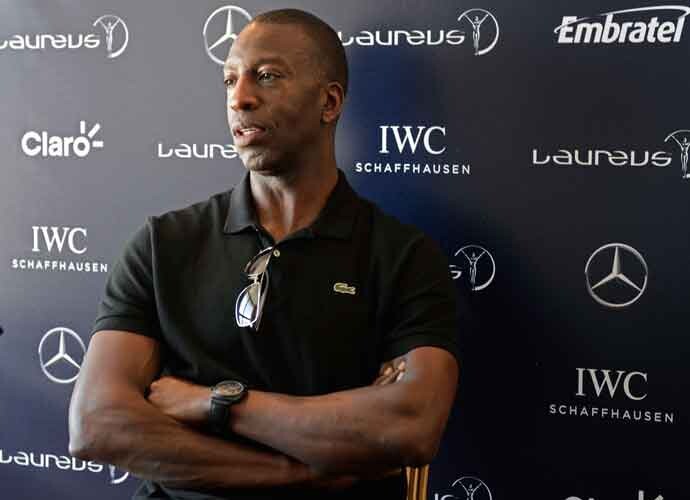
The organisation made an odd decision to have six different categories, rather than the usual holistic award given to the best athlete of the year in both the male and female categories regardless of specialty.
The adaptation of the World Athlete of the Year honours awarded this year follows feedback received during the voting process.

When it came to compiling the votes, athletes, fans and World Athletics Family members commented that it was incredibly hard to limit the vote to just one athlete, because of the various disciplines and the vast differences in skill sets required.
As a result, the 2023 World Athlete of the Year awards have been divided into three event categories: track, field, and out of stadia.
This has generated plenty of debate and division of opinions among many track and field runners, and Johnson, a four-time Olympic champion and eight-time world champion, remains puzzled by the decision.
“Am I the only person who thinks having six athletes of the year is a bad idea? Am I missing something?” Johnson wrote on X (formerly Twitter).
The 56-year-old has however admitted that there is some sense behind the decision having seen that the award recognises different categories.
“Just saw it is track, field, and out of stadia categories. So maybe it makes sense.”
Tigist Assefa, Mondo Duplantis, Kelvin Kiptum, Faith Kipyegon, Noah Lyles and Yulimar Rojas were the six individuals announced as World Athletes of the Year for 2023.
Assefa, Duplantis, Kiptum and Kipyegon set world records in their respective events in 2023, while all six World Athletes of the Year secured world titles or major marathon wins.
(12/13/2023) ⚡AMPby Mark Kinyanjui
World Athletics faces backlash for last-minute change to Athlete of the Year Awards
After months of discussion and voting on World Athletics’ social media pages for their prestigious World Athlete of the Year Award, the governing body of running/track and field did something no one could have predicted at the awards night on Monday in Monaco. For the first time in 35 years, the award was given to three men and three women, and fans across the sport are outraged.
Instead of giving out a men’s and women’s World Athlete of the Year award, as they’ve done in the past, they divided it into three categories: Track Athlete of the Year, Field Athlete of the Year, and Non-Stadia Athlete of the Year. Faith Kipyegon and Noah Lyles won the Track award, while pole vaulter Mondo Duplantis and triple jumper Yulimar Rojas won the Field award. Non-Stadia accolades went to the men’s and women’s new world record holders, Kelvin Kiptum and Tigist Assefa.
Online comments
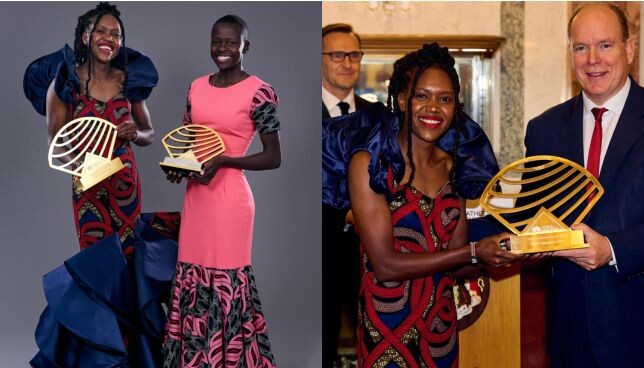
The Internet was not impressed with World Athletics changing the format at the last minute (after the voting). Many thought deserving athletes like Kipyegon, Lyles and Kiptum were robbed of their glory and success. “What is the point of having finalists if everybody wins some category that wasn’t announced prior? It should have been clear you have categories from the start, not on the final day,” a fan tweeted.
“Such a useless ceremony,” tweeted another fan. Track and field sprint legend Michael Johnson even tweeted, “Am I the only person who thinks having six athletes of the year is a bad idea? Am I missing something?”
World Athletics’ reasoning

World Athletics said its decision to divide the award into three categories came from fans and council members, who commented that it was “incredibly hard” to limit the vote to just one athlete. That is what people say when they have a tough decision to make, meaning that World Athletics chose highly deserving finalists–not that they want to split the award. World Athletics president Sebastian Coe took it differently: “The depth of talent and the outstanding performances in our sport this year more than justify the expansion of the World Athletics Awards to recognize the accomplishments of these six athletes across a range of disciplines. It is only fitting that they be recognized as the athletes of the year in their respective fields,” Coe said in a press release.
Poor communication from World Athletics
When World Athletics named the 10 nominees for the award in late October, they did not indicate they were planning to divide the award three ways. Even when they narrowed it down to five finalists, there was no indication it would be split. Most fans would have been OK with three AOTY awards if they had known during the voting process that that would be the case.
In a sport that is always looking to grow and garner more attention, going against the grain of the community and fan votes is not a way to attract new people to the sport, especially heading into an Olympic year. Although it’s easy to understand World Athletics’ reasoning for splitting the award–it’s hard to compare athletes of different disciplines, especially since a pole vaulter like world champion Duplantis can only win accolades in one discipline, whereas Lyles or Kipyegon could win medals in two or three events. Still, World Athletics had three opportunities to inform the public they would be splitting the awards this year, and I am sure fewer fans would be disappointed in the outcome.
Imagine watching the Super Bowl and seeing them hand out an offensive, defensive and special teams MVP. It would make the award meaningless.
(12/13/2023) ⚡AMPby Marley Dickinson
Kipchoge becomes U20 refugee team mentor as World Athletics makes Global Refugee Forum pledge
Kenya’s two-time Olympic marathon champion Eliud Kipchoge is to mentor the U20 World Athletics Athlete Refugee Team (ART), using his great experience in the sport to educate and inspire upcoming athletes.
Kipchoge will motivate the team members by sharing his knowledge and discipline in the sport, while also encouraging them to pursue their education and read books, which is one of his own passions. Committed to helping the underprivileged, the former world record-holder will also share life skills as part of the role, which he will hold through to next year’s World Athletics U20 Championships Lima 24.
Confirmation of Kipchoge’s mentorship, which will begin in January, coincides with the announcement of the Multistakeholder Pledge on Sport for Inclusion and Protection of Refugees, a commitment signed by more than 100 organisations represented at the Global Refugee Forum 2023, which gets under way today (13) in Geneva. As one of the signatories, and as part of the Sport for Refugee Coalition which it joined earlier this year, World Athletics reaffirmed its commitment to use sport to help improve the lives of stateless people around the world.
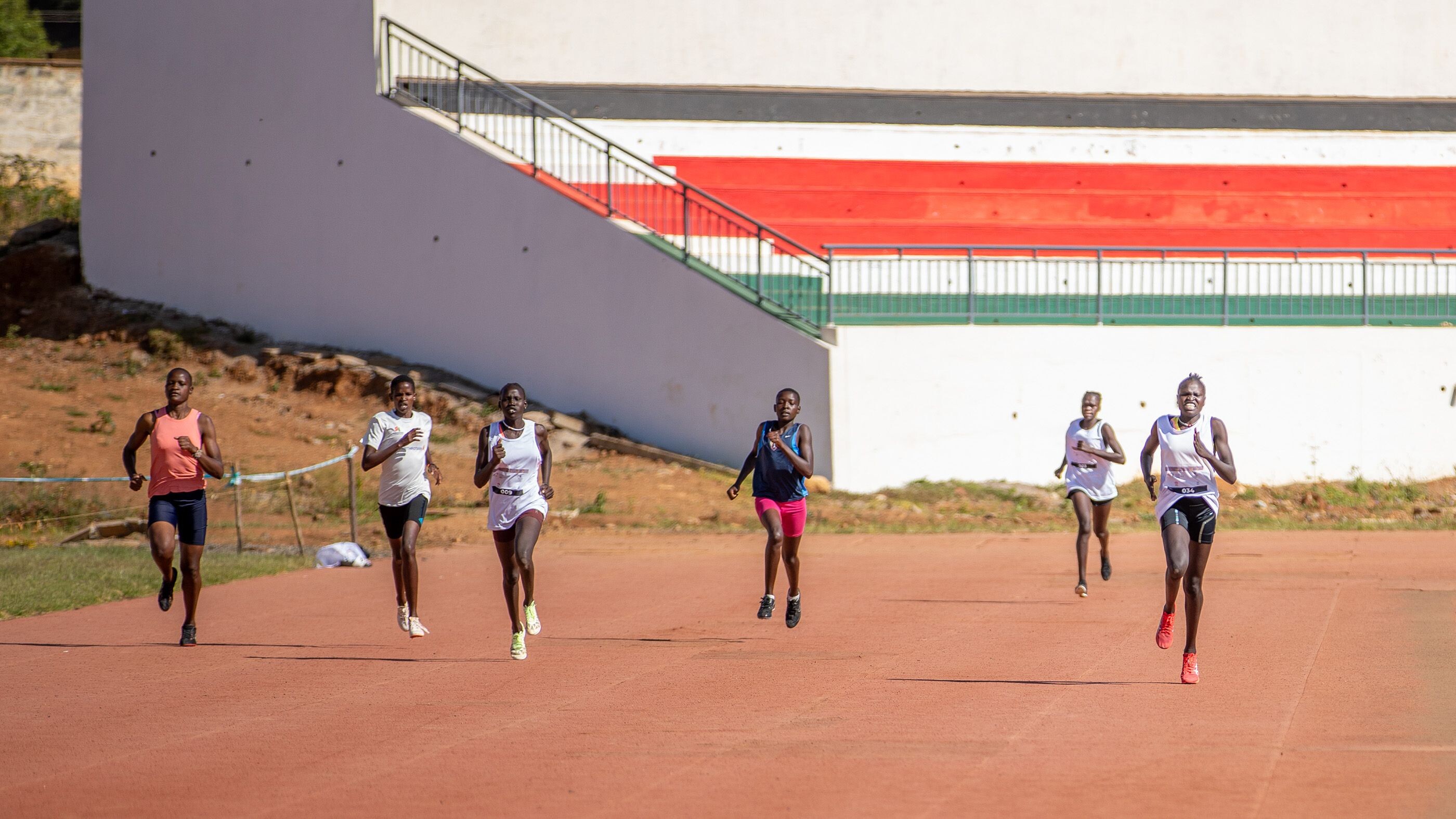
Held every four years, the Global Refugee Forum is the world’s largest international gathering on refugees. It is designed to support the practical implementation of the objectives set out in the Global Compact on Refugees: ease pressures on host countries, enhance refugee self-reliance, increase access to third-country solutions and improve conditions in countries of origin.
World Athletics’ pledge outlines the role that sport can play in improving the lives of refugees, including through sport programming, policy change, skill development, and communication and advocacy efforts.
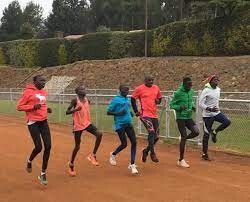
The World Athletics Athlete Refugee Team, composed of athletes who have fled violence, conflict and injustice at home, was founded in 2016 and has since evolved into the world's only year-round full-time refugee team programme. The team made its first competitive appearance as part of the Refugee Olympic Team at the 2016 Olympic Games and has competed at nearly every World Athletics Series event since.
The U20 team was formed as a pilot in 2022, with the objective of presenting a well-prepared U20 ART for the World Athletics U20 Championships Lima 24.
Kenya’s 2007 world 800m champion Janeth Jepkosgei is head coach of the U20 ART, which is partly based at Kakuma Refugee Camp, located around 100km from the South Sudan border in east Africa, and Kapsabet, Kenya. Swiss educator Barbara Moser-Mercer leads the programme, supported by coach Arcade Arakaza, himself a refugee from Burundi, and now Kipchoge.
Earlier this month, World Athletics was part of a delegation including the United Nations High Commissioner for Refugees (UNHCR), Olympic Refugee Foundation (ORF), National Olympic Committee of Kenya (NOCK) and African Higher Education in Emergencies Network (AHEEN) that visited the Kakuma and Kalobeyei refugee camps in Kenya. World Athletics was invited to be part of the delegation by the ORF, recognising the work that World Athletics is doing in this domain.
Global Refugee Forum pledge: Sport for Inclusion and Protection of Refugees
“In its capacity as world governing body of athletics, World Athletics pledges to mobilise its sphere of influence to support the inclusion of refugee athletes in athletics events around the globe. We commit to providing them safe sport, promoting gender parity in our selection, educating them on safeguarding and offering academic and sport scholarships. Through our sponsor, Asics, they will benefit from our value in kind kit provision and will be eligible like any other athlete to win prize money.
“Together with our stakeholders, we will pursue and advocate for more World Athletics certified refugee coaches and support staff. We will offer media training courses for refugee athletes. In collaboration with the Athletics Integrity Unit (AIU), we will be diligent on the wellbeing of refugee athletes under our programme and advocate running clean in the spirit of fair play.
“During our World Athletics Series (WAS) events, refugee athletes will be treated like their fellow elite athletes, and we will maximise their presence by offering them ambassadorial opportunities to promote the sport and share its impact on their lives. All expenses to our World Athletics Series events will be covered by World Athletics.
“World Athletics will serve as the team’s member federation, and the team will compete under the Athlete Refugee Team flag.”
(12/13/2023) ⚡AMPby World Athletics
Four lessons to learn from back-of-the-pack runners
Let’s be honest–most of us won’t find ourselves standing on a podium anytime soon. While much of our attention is directed toward the feats of race leaders, their training regimens and the hurdles they overcome, we regular runners have accumulated invaluable experiences and insights that might escape those tearing up the front of the race course.
Back-of-the-pack runners merit acknowledgment. Spending more time traversing a race or event should not diminish one’s status as a runner. Here are three noteworthy skills that those bringing up the rear excel at–and that all runners can derive wisdom from.

1.- Resilience and tenacity for the long haul
Back-of-the-pack runners demonstrate unmatched resilience, confronting identical course challenges and distances as their swifter counterparts but enduring for more minutes, hours, and, in the case of ultras, sometimes even days. The commitment to persevere and triumph over long periods of time underscores a special tenacity. While those on the podium may appear impressive as they swiftly navigate the course, enduring for extended hours to systematically navigate the same obstacles represents a distinctive and courageous achievement.

2.- A special spirit of camaraderie
In the rear of the pack, a unique camaraderie flourishes. This isn’t to diminish the incredible sense of community among front-runners, but the nature of swift racing often limits interactions like talking or cheering on fellow runners. When the goal is completing the distance rather than setting a record pace, runners find themselves more able to provide support, encouragement and understanding – a connection that often extends well beyond race day. The camaraderie shared among back-of-the-pack runners captures the essence of the running community. After all, it’s during these moments, not when pursuing a personal best, that you truly get to know your fellow runners.
3.- Appreciation for the journey
For runners at the back of the pack, the significance of the journey often surpasses that of the finish line–a sentiment that might sound cliché, but that resonates profoundly with those who’ve experienced it. Prioritizing a distance goal grants the freedom to immerse oneself in the process, enabling you to savour special race moments, relish the scenic beauty and appreciate the sheer joy of moving forward. This approach to running underscores the beauty of the journey, imparting a valuable lesson for everyone to seek fulfillment in the ongoing experience itself.
4.- Golden hour is the best hour
Many ultras celebrate something known as the golden hour–the race’s final hour, when back-of-the-pack runners are pushing themselves to cross the finish line. By this time, the leading runners have often returned to lend their support, and the crowds that gather are often larger than at any other point in the race. Witnessing these athletes harness every ounce of remaining strength to complete the race is a poignant experience, bringing tears to the eyes of everyone involved–from race directors and commentators to fans. The golden hour is a celebration of the unique skills and wisdom that the last runners have drawn upon to endure long hours and reach the finish line.
(12/13/2023) ⚡AMPby Keeley Milne
Spanish elite runner sacrifices result to aid Kenyan runner
In a heartwarming display of sportsmanship at the 2023 Málaga Marathon in Spain on Sunday, Ricardo Rosado of Madrid, poised to become the first Spanish finisher, sacrificed a top-five finish to assist his competitor, Evans Kimtai Kiprono of Kenya, in crossing the finish line.
As Rosado approached the final few meters, he refrained from overtaking Kiprono, who was struggling with physical exhaustion and trying to stay on his feet. Instead, Rosado assisted Kiprono, slowing his pace and grabbing his rival by the waist. Rosado accompanied Kiprono through the last steps, ensuring he completed the marathon ahead of him, in fifth place. Rosado finished sixth.
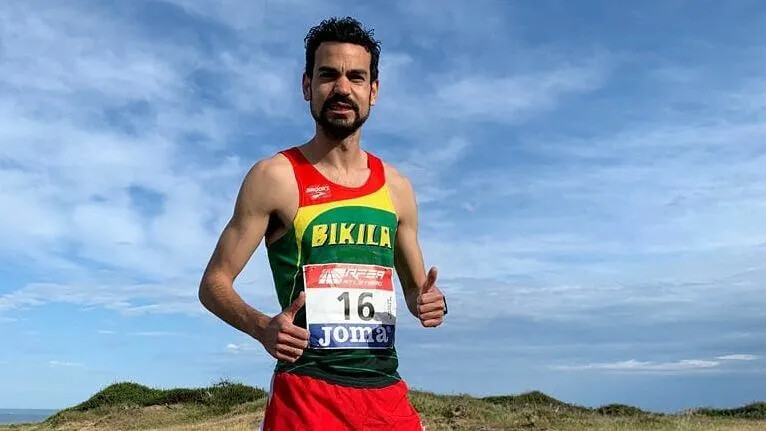
While Rosado was awarded €1,000 for being the top Spanish finisher in 2:14:23, he sacrificed an additional €500 for fifth place to aid Kiprono. In an interview with Málaga Hoy, Rosado had no hesitation, stating, “The marathon is an experience, and he has been better than me throughout the day, so I thought he deserved to be fifth at the finish line. You identify with your rival; I would do it again.”
Race officials commended Rosado’s gesture. Javier Aguirre de Cárcer, Generali’s director of communication, said, “The gesture by Rosado just meters from the finish line to help a Kenyan athlete demonstrates the solidarity and values that make this sport great and with which we feel identified.”
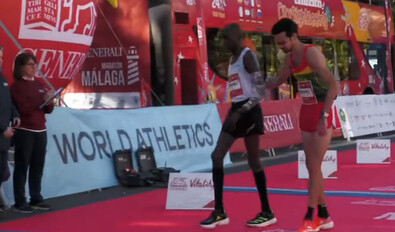
According to El Mundo, Kiprono was immediately escorted to the hospital after finishing the race in 2:14:22, due to dehydration.
The race organizers acknowledged Rosado’s sportsmanship by awarding him the €500 corresponding to fifth place, even though he finished sixth. This was in addition to the €1,000 that he won for being the top Spanish finisher.
(12/12/2023) ⚡AMPby Marley Dickinson
Zurich Malaga Marathon
If like many other runners from the north of Europe you are searching for a great winter escape and a race set in a beautiful location then Maratón Málaga may be what you are looking for. This annual road running event is held in December in the city of Málaga, Spain, the capital of Costa del Sol. Malaga marathon...
more...Boston Marathon unveils Olympic-inspired 2024 Celebration Jacket
On Friday, Adidas and the Boston Athletic Association (B.A.A.) unveiled the highly anticipated Celebration Jacket for the 2024 Boston Marathon. And as they say, beauty is in the eyes of the beholder.
The jacket, designed by Adidas, is a tribute to the historic marathon and holds symbolic significance for the 2024 Olympics in the French capital. According to the B.A.A., the colour scheme is a harmonious blend of red, white and blue, drawing inspiration from the French flag and the upcoming Paris Olympic Games in August.
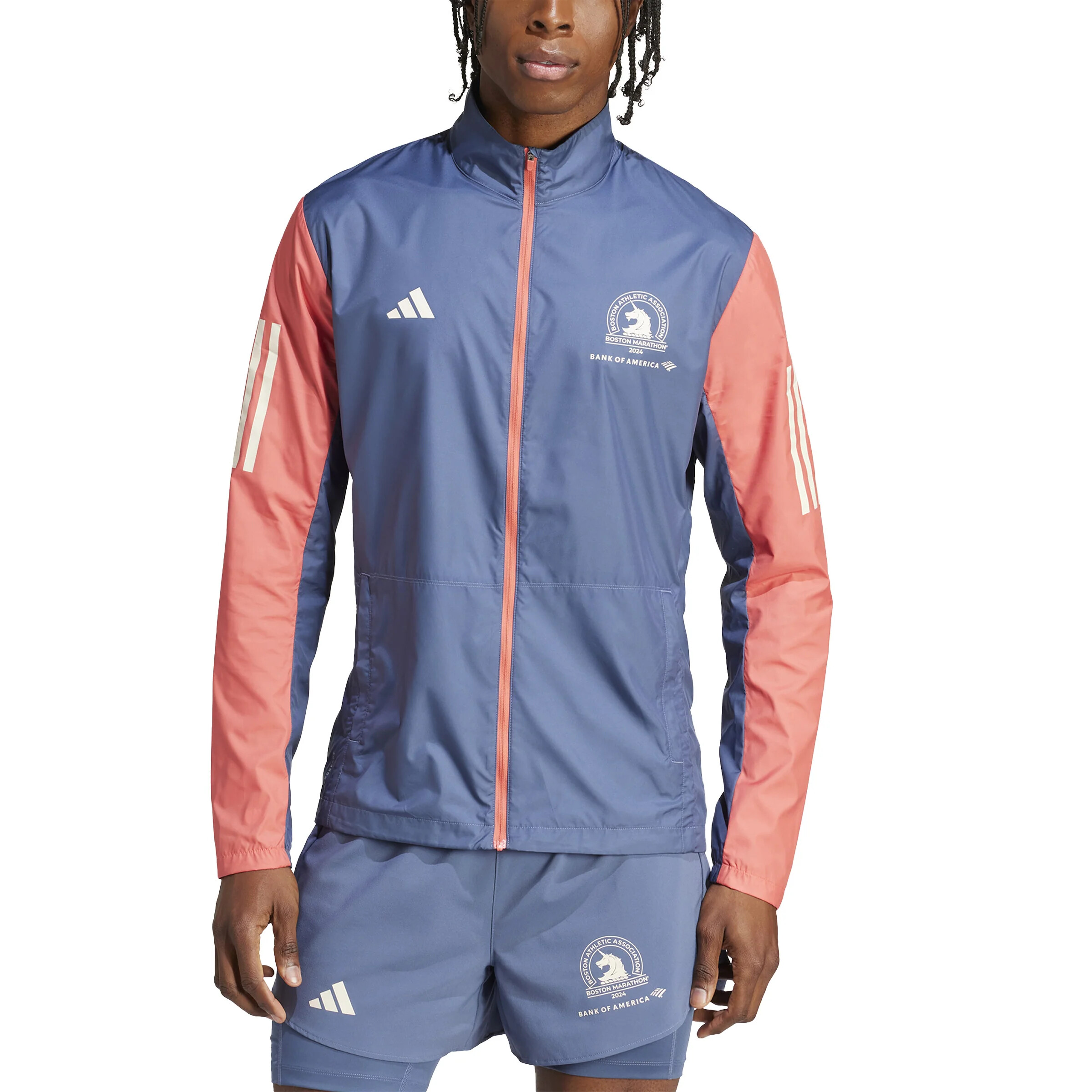
The 2024 jacket is different than some of the more recent and traditional Boston Marathon designs with its unconventional tri-colour look, showcasing two contrasting colours on the sleeves and body. Rather than drawing direct inspiration from the French flag or the upcoming Paris Olympics, we think the jacket bleeds the vibrant styles of the 80s. This is also the first year the new title sponsor, Bank of America, is featured on the jacket–below the B.A.A. logo crest.
Adidas points out that they’ve incorporated softer shades of red and blue, complemented by the B.A.A.’s distinctive blue and gold colours. This infusion of Boston-centric colours adds a “local touch” to the design, celebrating the achievements of the marathon runners. The Celebration Jacket will be released online exclusively at www.adidas.com on December 15 (U.S. only).
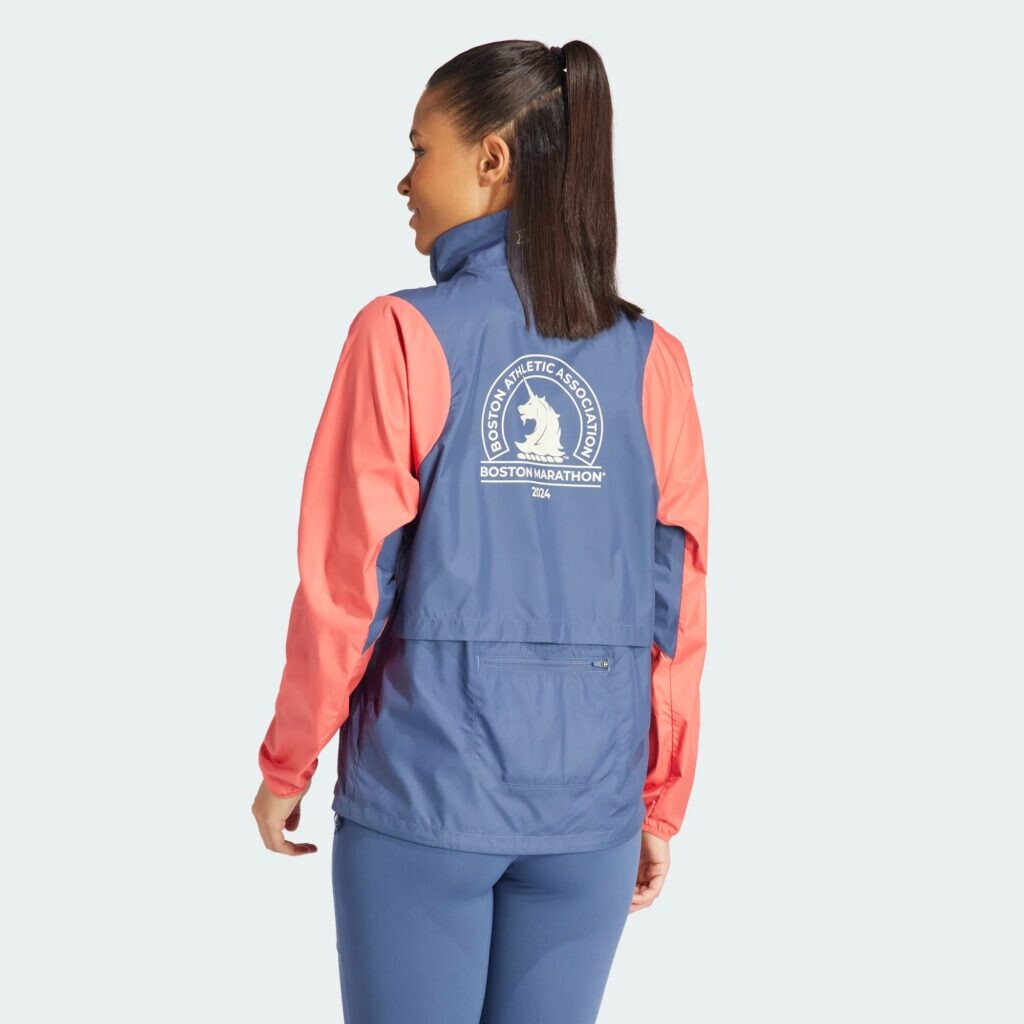
“The Boston Marathon is a pinnacle moment in the sports world,” Jennifer Thomas, VP of global sports marketing at Adidas. “We wanted to honour the marathon while nodding to what will undoubtedly be a pinnacle moment in not just running but sport this summer, as thousands of athletes make their way to Paris.”
We are almost four months from the 128th running of the prestigious Boston Marathon, scheduled for Patriot’s Day on Monday, April 15. An astounding 33,058 qualifiers applied to get into the 2024 race, setting a new record, which led to the largest cutoff time in Boston Marathon history (in a non-pandemic year), at five minutes and 29 seconds.
(12/12/2023) ⚡AMPby Marley Dickinson
Boston Marathon
Among the nation’s oldest athletic clubs, the B.A.A. was established in 1887, and, in 1896, more than half of the U.S. Olympic Team at the first modern games was composed of B.A.A. club members. The Olympic Games provided the inspiration for the first Boston Marathon, which culminated the B.A.A. Games on April 19, 1897. John J. McDermott emerged from a...
more...Kelvin Kiptum delivers acceptance speech in Swahili after clinching World Athlete of the Year award
Kiptum achieved his world record in Chicago back in October which boosted his chances of winning the maiden World Athlete of the Year Outside Stadia award.
World marathon record holder Kelvin Kiptum delivered his speech in Swahili after winning the World Athlete of the Year for out of stadia events award.
Kiptum achieved his world record in a World Athletics Platinum Label road race, running 2:00:35 at the Chicago Marathon in October.
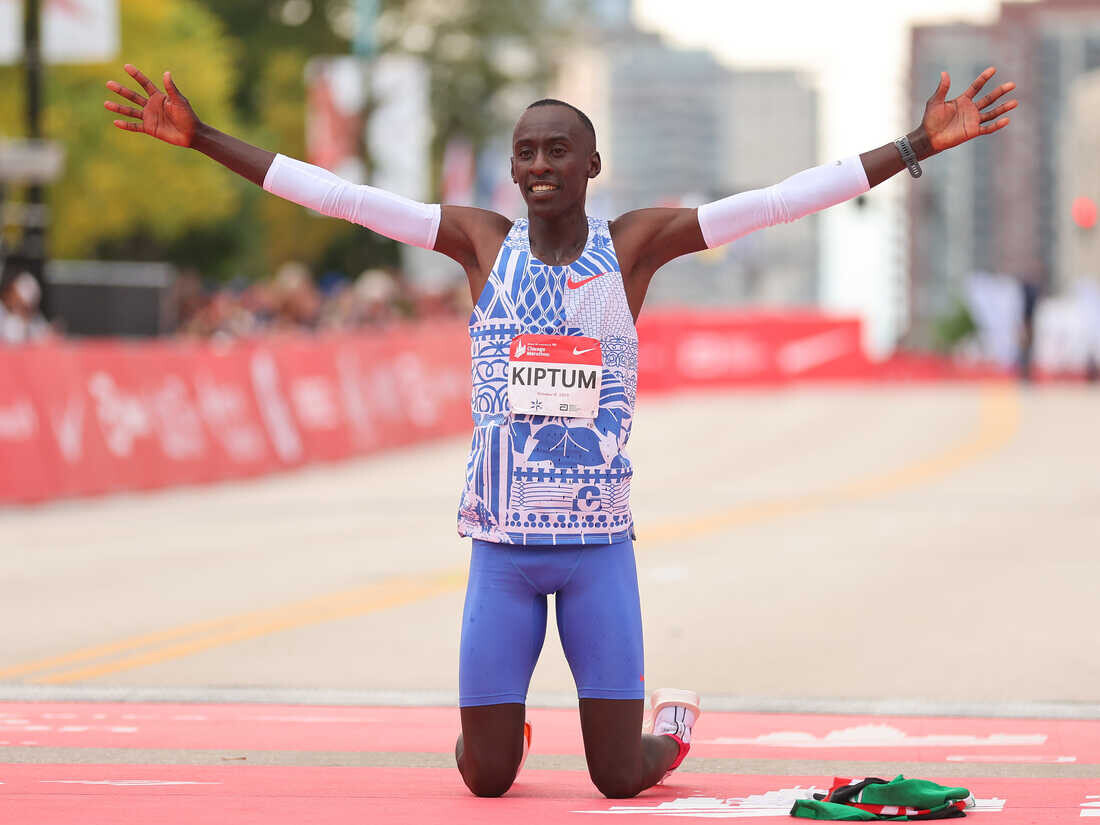
Becoming the first athlete to break the 2:01 barrier in a record-eligible marathon, the 24-year-old Kenyan won the race by almost three and a half minutes and took 34 seconds off Eliud Kipchoge’s previous world record.
Just one year on from his marathon debut, Kiptum now has three of the seven fastest times in history to his name having also won the London Marathon in April in 2:01:25.
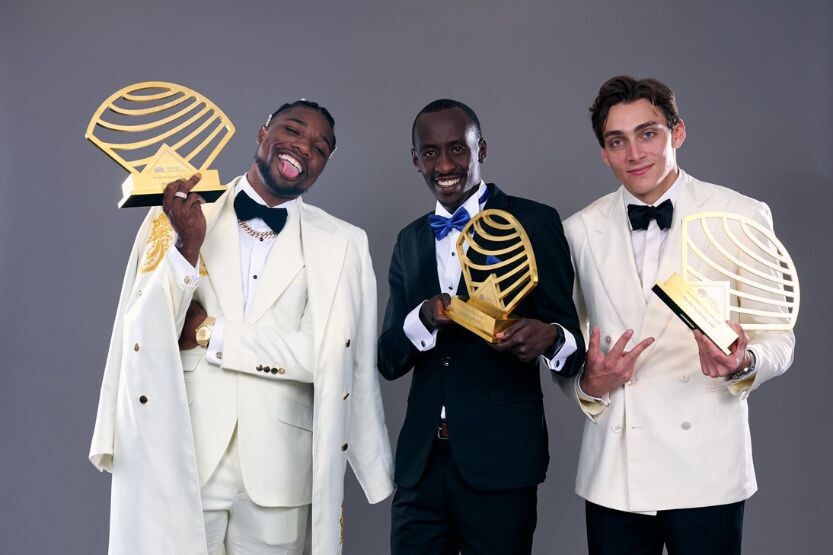
Speaking in Swahili upon receiving the award, Kiptum thanked his fans for voting for him as the athlete of the year.
“First of all, I would like to thank my fans for voting for me,” Kiptum told World Athletics.
“I have been awarded the World Athlete of the year and I want to thank you all so much.”
At the age of 18, in October 2018, Kiptum won the Eldoret Half Marathon with a time of 1:02:01
He then debuted internationally at the Lisbon Half Marathon in March 2019, finishing fifth with a new personal best of 59:54.
In December 2020, he set a significant consecutive best in the event at 58:42, placing sixth at the Valencia Half Marathon.
In 2021, he ran 59:35 and 59:02 half marathons in Lens, France (first), and Valencia (eighth) respectively.
Kiptum ran his debut marathon in Valencia, Spain, on December 4, 2022.
With what was then the quickest closing half ever (60:15), he finished first with the current Course Record time of 2:01:53, becoming the third man in history to break 2:02.
He beat the 2022 world marathon champion Tamirat Tola, a pre-race favorite, among others.
In his debut at a World Marathon Major on April 23, 2023, Kiptum triumphed decisively at the London Marathon. Falling 16 seconds short of the World Record.
(12/12/2023) ⚡AMPby Mark Kinyanjui
Faith Kipyegon named World Track Athlete of the Year
On Monday night at the 2023 World Athletics Awards in Monaco, Kenya’s Faith Kipyegon took home top honours, capping off her nearly flawless season. The double world champion was named World Female Track Athlete of the Year, a title awarded to her by the public, her peers and the World Athletics Council.
Kipyegon made headlines by breaking three world records in the 1,500m, mile, and 5,000m events, in addition to clinching two world championship titles at the 2023 World Athletics Championships in Budapest. She successfully defended her world title in the 1,500m and won her first world championship over 5,000m, facing one of the deepest fields in the event’s history.
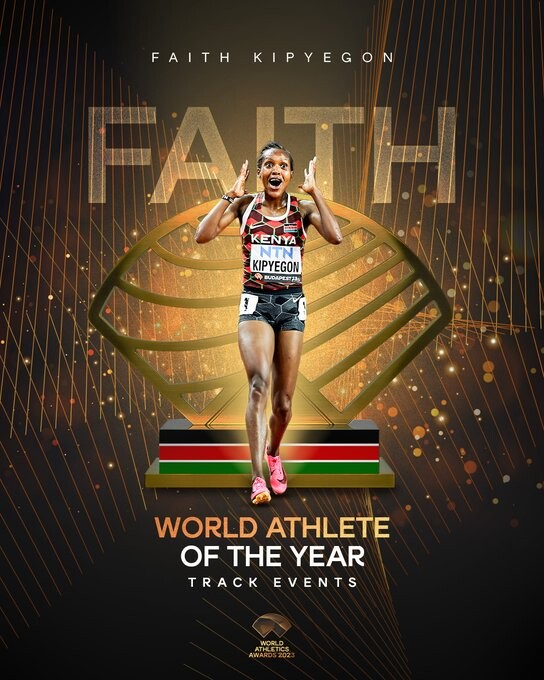
This historic achievement marks the first time a Kenyan woman has received the prestigious award since its inception in 1988. The previous winner was U.S. 400m hurdler Sydney McLaughlin-Levrone in 2022.
Throughout 2023, the 29-year-old mother pushed the boundaries of distance running, accomplishing feats that fans of the sport considered nearly impossible. Kipyegon became the first woman to complete the 1,500m in under three minutes and 50 seconds (3:49:11) and achieved another milestone by also becoming the first woman to run a sub-4:10 mile, clocking in at 4:07.64 at Monaco Diamond League in July.
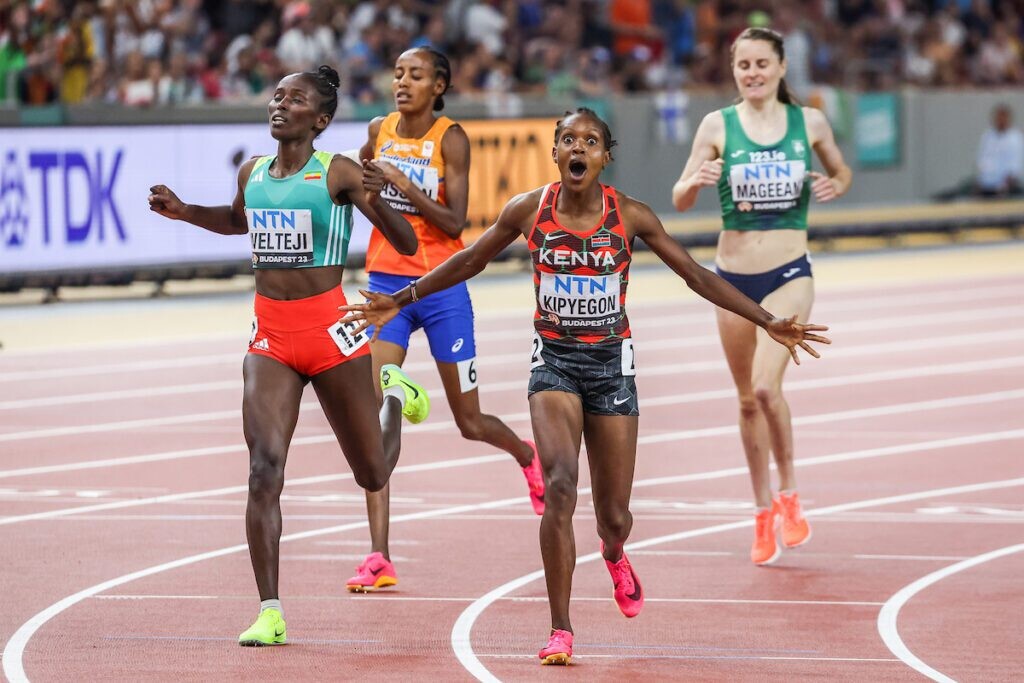
For the first time ever, World Athletics split the Athlete of the Year award into three disciplines: track, field and non-stadia.
Yulimar Rojas of Venezuela won the Women’s Field Athlete of the Year, winning her fourth consecutive world championship title in the women’s triple jump and her third-straight Diamond League title. New women’s marathon world record holder Tigist Assefa of Ethiopia won the non-stadia award. Assefa shattered the women’s world marathon record at the 2023 Berlin Marathon, running an unbelievable 2:11:53, breaking the previous record by nearly two and a half minutes.
World Athletics said in a press release that their decision to divide the award into three categories came from fans and council members when they commented that it was “incredibly hard” to limit the vote to just one athlete.
(12/12/2023) ⚡AMPby Marley Dickinson
Solidify strength and speed with these go-to workouts for every runner
Running workouts don’t have to be complex to yield results. If you’re not in the mood for navigating through a workout with varying splits and paces, consider pulling one of these straightforward, go-to sessions from your arsenal.
Whether you’re new to running, or a seasoned athlete with a collection of medals, you can customize the interval lengths to match your skill level. If you’re looking for even more intensity, increase your effort or extend the duration of the more challenging segments, or alternatively, reduce the recovery periods.
Simple interval repeats
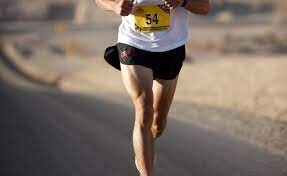
Warm up with five-10 minutes of easy running or fast walking, and insert some dynamic running drills after your legs are warm (all levels).
For beginners::
Run at a sustainable pace for one minute, followed by two minutes of brisk walking to recover (always feel free to extend the recovery time to three minutes, or shorten your running time to 30 seconds).
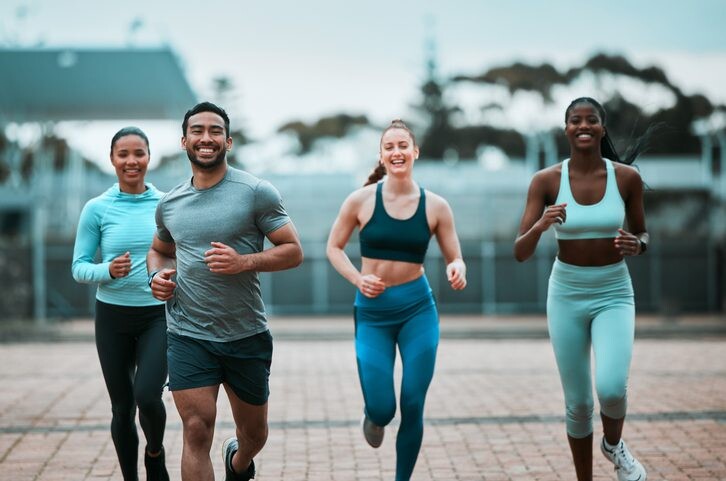
Repeat for 20-30 minutes.
Intermediate:
Run at a moderate pace for two minutes, followed by one minute of easy running.
Repeat for 20-30 minutes.
Advanced:
Run at a hard pace for three minutes, followed by one minute of easy recovery running,
Repeat for 20-30 minutes.
Cool down with five-10 minutes of easy running (all levels).
Heart-pounding hill workout
Warm up with five-10 minutes of easy running or brisk walking (all levels).
For beginners:
Find a gentle slope and briskly walk uphill for one minute, and walk downhill for recovery.
Repeat for 15 minutes.
Intermediate:
Run uphill for one minute at an effort that leaves you out of breath, and walk downhill to recover.
Repeat for 15 minutes.
Advanced:
Sprint uphill for 30 seconds, and jog or walk downhill for recovery.
Repeat for 15 minutes.
Cool down with five to 10 minutes of easy running or walking (all levels).
Everyone, from newbie to advanced, should follow a harder training day with a day of easy running or rest.
(12/11/2023) ⚡AMPby Keeley Milne
Kenya’s Bernard Kipkorir broke the course record at the 5th edition of the Mersin Marathon held on Sunday in Mersin, Turkey
The 27 year-old led a 1-2-3 Kenyan podium finish as he erased the old course time of 2:10.12 set five years ago by his compatriot Kenneth Kiplagat with a new course record of 2:09.33.

Kipkorir was followed in second place by Asbel Rutto who also ran under the old course in 2:09.46 with Hillary Kipchumba closing the podium three finishes in 2:10.11.
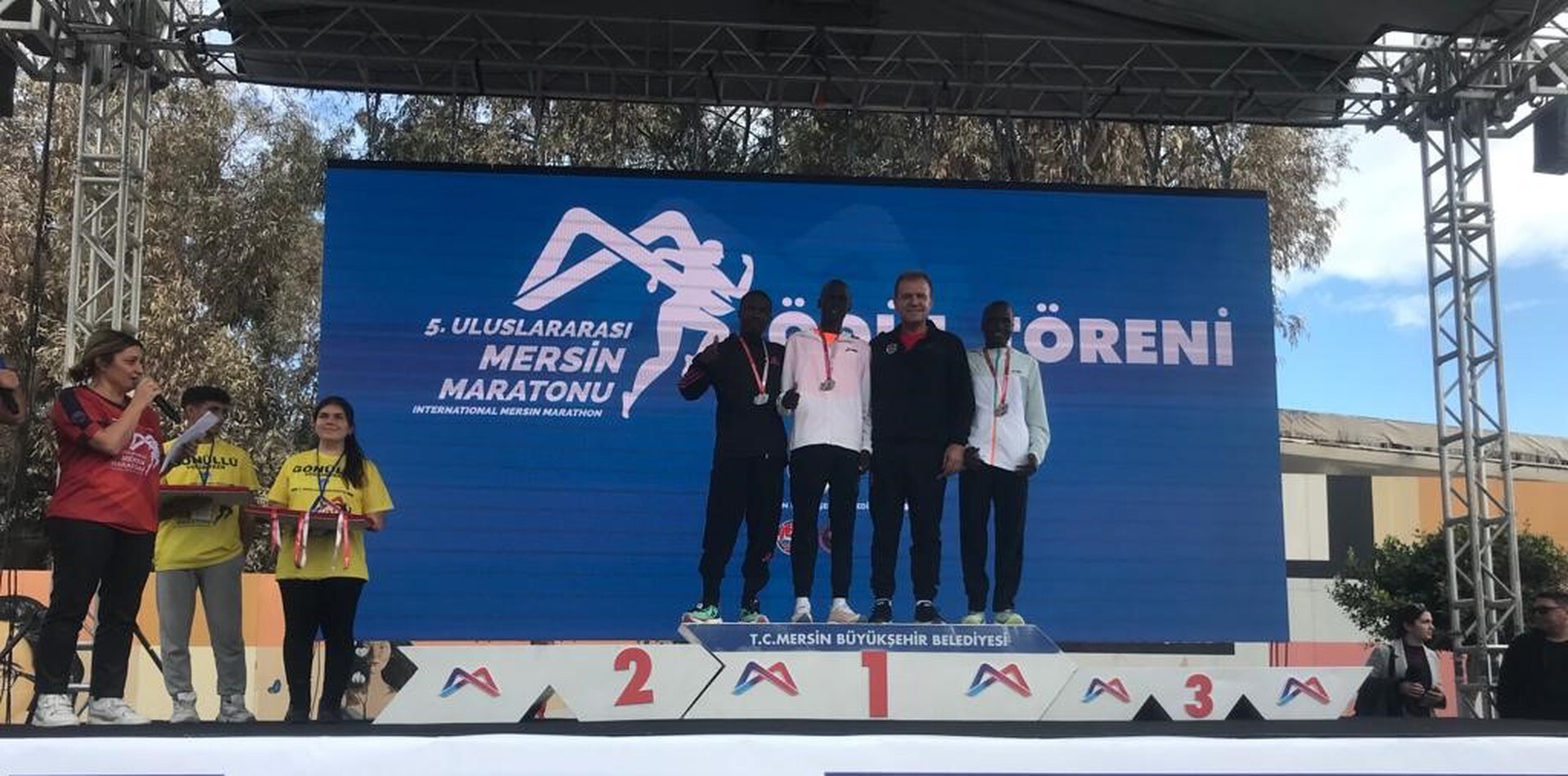
Hammington Kipchumba and Isaac Cheluko finished in fourth and fifth place in a time of 2:10.58 and 2:11.04 respectively.
(12/11/2023) ⚡AMPby John Vaselyne
International Mersin Marathon
The Mersin Marathon is an annual road running event over the marathon distance, which is held in December in Mersin in Mersin Province Turkey. The event also features a 15-kilometer race. Mersin Marathon was established in 2015 and it is hosted by the Mersin Metropolitan Municipality....
more...Double delight for Kenya as Charles Mneria and Pamela Jepkosgei win men’s and women’s Malaga Marathon
Kenyan runners Charles Mneria and Pamela Jepkosgei triumph at the Malaga Marathon in Spain.
There was double delight for Kenya at the 2023 Malaga Marathon as Charles Mneria and Pamela Jepkosgei Rotich won the men’s and women’s races respectively.
Mneria entered the race with an impressive resume and did not disappoint.

With the second-fastest time on paper and a lifetime best of 2:09.07 achieved at the Münster-Marathon just months ago, Mneria was a force to be reckoned with from the start.
From the initial gun, Mneria led a formidable group of nine athletes, showcasing his impeccable form and race strategy.
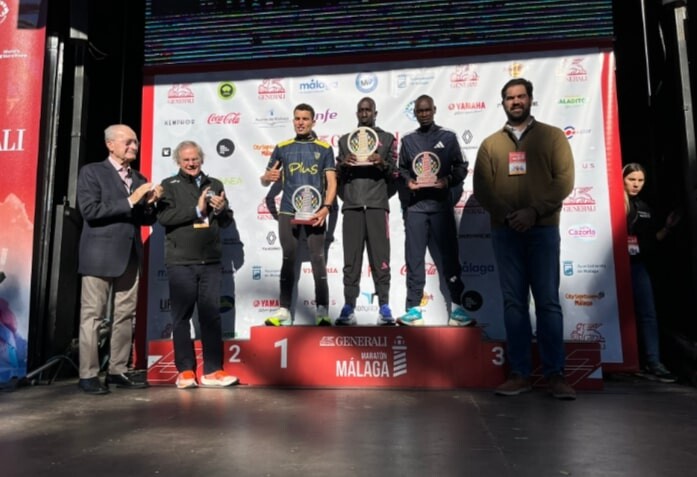
They cruised through the 5km and 10km marks in a blistering 15:03 and 30:03, a pace that threatened the existing course record of 2:07.36 set two years prior.
However, it was at the 33km mark that Mneria unleashed his true potential.
With calculated precision, he made his move, leaving the leading pack behind and charging ahead solo for the remaining 9km.
The spectators watched in awe as Mneria crossed the finish line, securing not only the victory but also a new personal best of 2:08.54.
It was a stellar performance that added another title to the 27-year-old Nairobi Marathon champion ever-growing list of achievements.
Morocco's Abdelilah El Maimouni, the fastest athlete on the entry list with a time of 2:09.48, had to settle for second place.
Maimouni displayed remarkable determination but could not match Mneria's surge in the closing stages. Crossing the line in 2:09.48, he secured a hard-fought second place.
Musa Kiprop Mitei, another Kenyan talent, completed the podium, finishing third with a time of 2:11.31.
The race also featured top runners from around the world, with Jonathan Akankwasa of Tanzania and Spain's Ricardo Rosado Villaverde claiming fourth and fifth places in times of 2:12.34 and 2:14.23, respectively.
In the women's category, it was a Kenyan masterclass once again as Pamela Jepkosgei Rotich claimed the top spot with a time of 2:33:52.
Her performance was nothing short of extraordinary, as she exhibited unwavering determination throughout the grueling race.
Lilia Fisikovici of Moldova put up a fierce fight, finishing just seconds behind Rotich in 2:34:12, securing the second position.
Sweden's Hanna Lindholm displayed her prowess, capturing third place with a time of 2:34:50, while Vanessa Carvalho clocked 2:38:34 to secure fourth place.
Adding to Kenya's glory, Beatrice Jepkemei Cheburet crossed the finish line in fifth place with a commendable time of 2:42:47.
(12/11/2023) ⚡AMPby Festus Chuma
Zurich Malaga Marathon
If like many other runners from the north of Europe you are searching for a great winter escape and a race set in a beautiful location then Maratón Málaga may be what you are looking for. This annual road running event is held in December in the city of Málaga, Spain, the capital of Costa del Sol. Malaga marathon...
more...Kenyans Paul Lonyangata and Cynthia Limo win Honolulu Marathon
Kenyans Paul Lonyangata and Cynthia Limo patiently waited before making decisive moves to earn convincing wins at today’s Honolulu Marathon in challenging conditions. High humidity and long stretches of strong winds, combined with the course’s notorious hills, led to slow finish times in the 51st running of this race, the fourth largest marathon in the United States.
The race began in the darkness at 5:00 am local time with a fireworks display. Dickson Chumba of Kenya, the designated pacer, set an aggressive early pace for men’s leaders, coming through 5-K in 15:17, which projects to a sub-2:09 time. (The course record is 2:08:00.) In his wake were Lonyangata, fellow Kenyan Reuben Kiprop Kerio, Ethiopian Abayneh Degu and a pair of U.S.-based Eritreans, Filmon Ande and Tsegay Weldlibanos.
Through 10-K, the pace was picking up, with Chumba –a three-time winner of World Marathon Majors races– in front at 30:25. Kerio had drifted back and was 19 seconds behind. But the pace started to lag on an uphill section between 13-K and 14-K and Kerio quickly regained contact with the pack. Meanwhile, Weldlibanos, who had been fighting the flu in the week leading up to the race, was the first casualty, dropping out around 15-K.
During a long stretch along Kalaniana’ole Highway the pace was lagging in the 5:20 per mile range and it was clear that this would be a tactical battle. “This is the graveyard of fast times,” Honolulu Marathon Association president Dr. Jim Barahal, riding in the lead vehicle, lamented of this notoriously windy stretch. “But it means we’re going to have a great finish.”
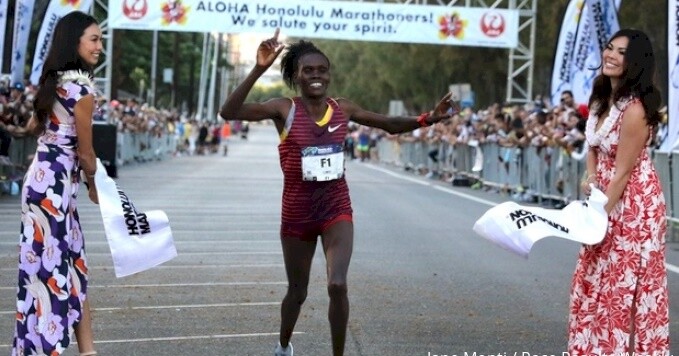
Indeed, the halfway point was reached in a modest 1:07:19. Chumba stepped off just before 25-K and moments later Lonyangata briefly surged ahead. The field came back to him within minutes, but as the course entered a less windy section, he made what would be the day’s decisive move. His pace quickened dramatically as he covered the 18th mile in 4:49. By 30-K (1:35:51) he had built a five-second lead over Kerio, with Ande another five seconds back. (Degu had dropped out some time after halfway, leaving only three men in the elite field.)
Lonyangata –who had finished second in his previous appearance in Honolulu in 2014, and owns a personal best of 2:06:10 from the 2017 Paris Marathon– continued to press the pace. Ande and Kerio were waging a back-and-forth duel for second place, and by 35-K, they were 21 seconds behind Lonyangata (1:52:14).
Lonyangata continued to look back for signs of danger, but a strong uphill surge as the course passed the Diamond Head volcanic crater for the second time kept him out of reach of his pursuers. “The hills you must run as hard as you can, you push uphill even if it’s hard,” he said.
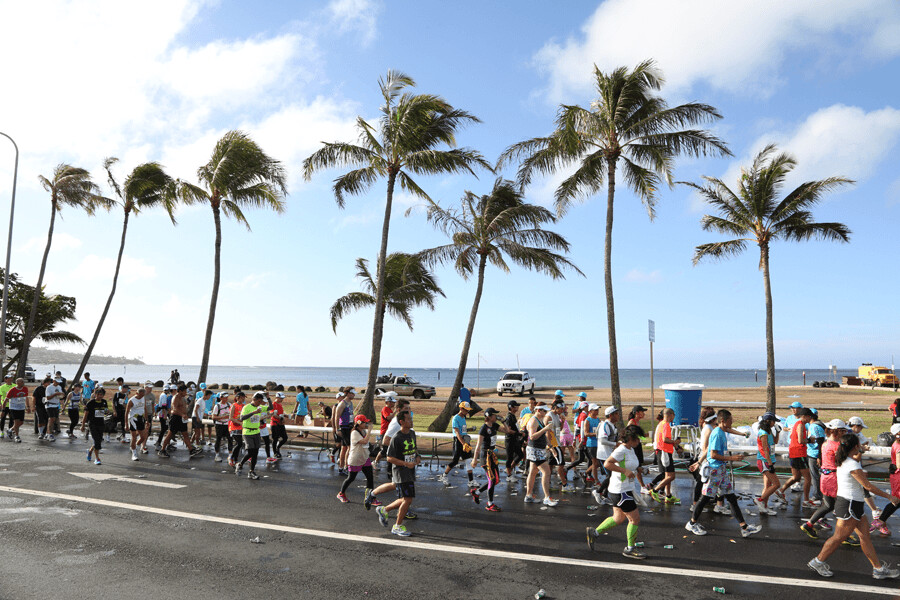
He crossed the finish line in Kapiolani Park in 2:15:42. “When you prepare for everything you know you are ready,” said Lonyangata, who was cleared to compete again on May 25 after serving a 19-month suspension for using a banned diuretic (the Honolulu Marathon has drug testing). “And when you decide when to make the move, you have to go hard.”
Ande made up some ground in the final miles, despite dealing with pain in his foot, and finished 19 seconds back in 2:16:01.
Kerio, who finished second here in 2018 and has served as the pacer four other times (including last year), came home third in 2:17:32.
In the women’s race, Limo was making her marathon debut, and decided to wait slightly longer to make her move. For the early going she ran alongside Ethiopians Sintayehu Tilahun Getahun and Kasu Bitew Lemeneh, who was running her fourth marathon of the year. They hit 5-K in 18:17, then picked up the pace slightly through 10-K (35:59). There was no change at halfway (1:16:43) and 30-K (1:50:05).
Finally, after the 30-K aid station, Lemeneh began to slip behind. Limo and Getahun forged ahead, running together for the next 5-K segment. Finally, at 35-K Limo started to pull away. By 40-K her lead ballooned to a minute and 38 seconds. She cruised home in 2:33:01, running the second half slightly faster than the first and finishing more than two minutes ahead of Tilahun (2:35:16).
“When we got to 35 kilometers, I felt that I was still strong and I knew it was only seven kilometers that remained, so I had to do it by myself,” said Limo, the 2016 World Athletics Half Marathon Championships silver medalist. “I tried to push and push. I am so pleased.”
In addition to the high mileage she logged in Kenya during her build-up to this race, she credited the speed she sharpened while competing in numerous American road races this year, including wins at the Cooper River Bridge Run 10-K in Charleston, South Carolina, the Carmel (Indiana) Half-Marathon, the Toledo (Ohio) Half-Marathon and Philadelphia’s Broad Street Run 10 Mile. “I can say that it was not really so hard to do the marathon,” she said. “It is a matter of making up your mind that you can do the training. And I am so happy that I did that.”
Bitew (2:36:04) held on for third, and Japan’s Yukari Abe, who finished tenth in her country’s Olympic trials in October, took fourth (2:47:32).
Lonyangata and Limo earned $25,000 for their victories, along with a flashy gold medal worth nearly $15,000. They both credited hearty support from fans along the course as well as the throngs of mass-race runners, who were going in the opposite direction on the out-and-back course. (One enthusiastic participant encouraged Lonyangata with an enthusiastic cheer of “Go get that money!”)
“The other runners were so good,” a smiling Limo noted. “They were cheering, they were making us move faster.”
There were 15,594 starters this year, up from 14,645 in 2022.
The companion Start to Park 10-K was run contemporaneously with the marathon, with 6,976 starters and 6961 finishers. Joshua Williams was the fastest athlete in 32:02, but not far behind him was Molly Seidel, the 2021 Olympic bronze medalist in the marathon. Seidel clocked 32:25 and was the fastest woman on the day. She, and training partner Jessa Hanson, were using the race as part of their humidity training for February’s U.S. Olympic Team Trials Marathon in Orlando, Florida.
“It’s so cool to come out and have the whole energy of the marathon around you,” said Seidel, who finished eighth at the Chicago Marathon two months ago. “This is such a fun vibe. I love to come out and race in Hawaii. Honestly, we wanted to get some good humidity racing, get a nice quicker tempo and then settle in. Coming out today was exactly what we needed. I love racing in humidity.”
(12/11/2023) ⚡AMPby Steve Soprano
Honolulu Marathon
The Honolulu Marathon’s scenic course includes spectacular ocean views alongside world-famous Waikiki Beach, and Diamond Head and Koko Head volcanic craters.The terrain is level except for short uphill grades around Diamond Head. ...
more...Homefield advantage leads Joseph Hale to second BMW Dallas Marathon win in three years
Home-field advantage played a crucial role in Joseph Hale’s victory in the 52nd running of the BMW Dallas Marathon on Sunday.
The 30-year-old resident of West Dallas made up half of a one-minute deficit at White Rock Lake, and three miles from the finish line made a final move to win for the second time in three years in 2 hours, 24 minutes and 53 seconds. All times are unofficial until certified.
“I’ve run that loop around White Rock so many times, so I know every single step,” said Hale, who grew up in Grapevine and attended Dallas Baptist.
“I knew it was downhill after Mile 23, and when I looked back a mile later, I couldn’t see anybody.”
Hale, the eighth consecutive American men’s winner, credits his sister Sarah for being the role model who influenced him to run.
“She ran in high school and I wanted to be like her," he said.
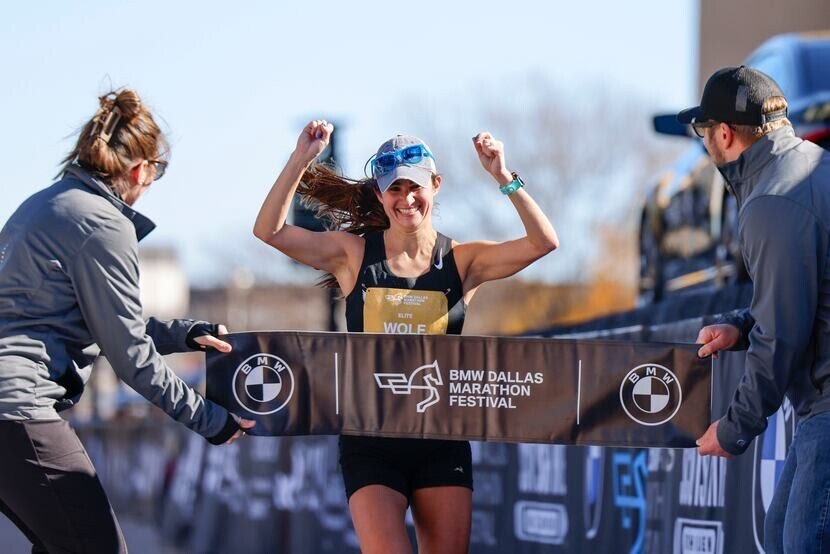
A week earlier, Hale ran a marathon in Sacramento, Calif., and was disappointed with his performance.
“I was hungry for more today,” he said.
Women’s marathon champion Jill Wolf manages to train every day despite owning a pet supply business with five locations, none of them closer to Dallas than 130 miles. That translates into a lot of travel time.
All of the training has helped Wolf whittle 50 minutes off her time since 2017, and led to a personal-best 2:51:47 on Sunday, almost eight minutes faster than the next runner.
Originally from Cleveland, Wolf has called Dallas home the last seven years and got married two months ago.
“I thought I might have a chance today," Wolf said. “The weather was the best we’ve had for running. I trained hard for it."
There was some confusion after the race because a time faster than Wolf’s had been electronically recorded, but after further investigation and some anxious moments Wolf was declared the winner.
(12/10/2023) ⚡AMPBMW Dallas Marathon
The BMW Dallas Marathon is the result of the efforts of a pioneering group of brave Dallas runners, who had the foresight to establish an annual 26.2-mile race more than 40 years ago. In 1971, Tal Morrison – the official founding father of the marathon – placed a $25 ad in Runner’s World beckoning runners from around the country to...
more...Why Do I Get So Itchy When I Run?
Here’s what experts say about the causes of that uncomfortable, tingling sensation and how to cope with it.
As a runner, you try to prepare for everything: You have a waterproof jacket for that 60 percent chance of rain, anti-blister socks, and a supply of gel packs for Saturday long runs. However, something that you may be less prepared for is relentless itching and tingling.
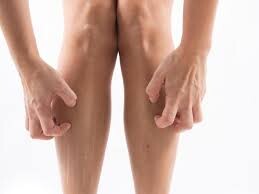
Known as “runner’s itch,” this sensation makes hitting the road uncomfortable for many runners, especially those just starting out or getting back into a running routine.
“Runner’s itch wasn’t something that was particularly researched and documented before the 1950s, but it’s been consistently described in literature in some way since about the 70s,” says Braden Romer, Ph.D., an associate professor of exercise science at High Point University in High Point, North Carolina. “We’ve seen the prevalence go up as there are more individuals taking part in physical activity. I run into it quite often when dealing with athletes.”
If you want to run more but can’t stand the urge to stop and scratch, here’s what to know about runner’s itch and how to soothe it.
What causes runner’s itch?
The causes of runner’s itch may range from minor inconveniences to more serious health conditions. Although more research is needed to fully understand what triggers this sensation, here are five potential causes.
1. Dry or Irritated Skin
Both humidity and dryness in the air can lead to runner’s itch.
“If you sweat a lot or if it’s very humid or raining, and your clothes get wet, you run the risk of skin irritation or itchiness,” says Melissa Kendter, C.P.T., a Philadelphia-based United Endurance Sports Coaching Academy (UESCA) running coach.
Meanwhile, another common cause is dry air and dry skin. Friction from running can exacerbate this and cause unpleasant itching.
“Some research has suggested hydration is a factor as well,” says Romer. “If you’re not drinking enough water, your skin gets dry and itches. When you begin to workout, especially with workout clothes, that may trigger an effect as well.”
Running can also exacerbate eczema, a group of inflammatory skin conditions that lead to issues like itchiness and dry skin.
“If you’re prone to eczema, exercise might make it worse,” says Minneapolis-based William Roberts, M.D. chief medical officer of the American College of Sports Medicine and former director of the sports medicine program at the University of Minnesota Medical School. “If you notice a skin rash, talk to your doctor.”
2. Histamine Release
A predominant theory behind runner’s itch is a histamine release at the onset of exercise, says Romer. Aerobic or endurance exercise can generate a localized anaphylactic reaction within the exercised muscle tissue, which causes histamine release, per a 2017 study in Exercise and Sport Sciences Reviews.
“There’s some research to suggest that the itching may be related to histamine release at the onset of exercise, particularly in high-intensity exercise,” Romer explains. “If somebody hasn’t been working out or running, or they haven’t warmed up and jump right into a high-intensity workout, that may be triggering a greater histamine release from within the muscle cells.”
This histamine release, in turn, could cause that uncomfortable and itchy feeling.
2. Blood Vessel Expansion
When you run, blood flow increases to your tissues, causing vasodilation (the widening of blood vessels). One theory is that the increased size of your capillaries causes an itching sensation.
“The capillaries start to expand, which may send a triggering response to some of the nerve fibers around that area,” says Romer. You may be more prone to this if you haven’t run for a while or are just starting out.
“This typically can happen for newer runners or ones getting back into the routine of running, because their bodies aren’t adept at this process,” says Kendter. “If your fitness routine has been put on the back burner for some time, you have a higher risk.”
However, this theory does have its skeptics. Romer adds that there are multiple pathways that have been proposed for runner’s itch and the symptom is not well understood. This was evident even in the differing opinions among the experts we spoke to—Roberts, for instance, has doubts that vasodilation could cause itching.
The bottom line: Though runner’s itch could potentially be related to blood flow, more research is needed to fully understand the mechanisms behind this process.
4. Exercise-Induced Urticaria
In more rare cases, allergic responses to exercise can cause severe symptoms. Exercise-induced urticaria is a rare clinical condition that causes flushing, itchiness, and hives after a workout, per a March 2022 single case study in Cureus. A minority of patients can even develop anaphylaxis, which is a severe, life-threatening allergic reaction.
“Exercise-induced anaphylaxis can cause a fast heart rate and potentially the swelling of the throat and blocking of the airways,” says Roberts.
About 30 to 50 percent of exercise-induced anaphylaxis is food dependent, meaning it only occurs with the combination of a specific food and exercise, per another single case study, published in 2017 in Canadian Family Physician.
Many different types of food have been found to have a triggering effect, including wheat, shellfish, nuts, tomatoes, peanuts, fish, pork, beef, mushrooms, hazelnuts, eggs, peaches, apples, milk, and alcohol.
If you suspect you’re experiencing urticaria, it’s important to see your physician to start a treatment program. This could include taking antihistamines before you run and carrying an EpiPen with you. If you do experience allergic reactions, it’s best to run with a buddy who knows how to help if you have a reaction.
People with severe cases of exercise-induced urticaria may need to avoid certain types of exercise and foods (or, rarely, exercise altogether).
5. Cholinergic Urticaria
Another condition that could be the cause of itching is cholinergic urticaria, which is characterized by itching and/or a stinging pain, redness, and bumps.
Think of this as a heat-triggered reaction: Symptoms develop after an increased body temperature has been stimulated repeatedly, such as through exercise, per a 2023 review in the American Journal of Clinical Dermatology.
“This is also pretty rare,” says Roberts. “It’s a response to the skin warming that occurs with running.”
Cholinergic urticaria is often associated with serious symptoms like anaphylaxis and severe pain. This condition comes on very quickly and may also involve an antihistamine treatment plan. Your doctor may conduct testing to confirm that you’re experiencing cholinergic urticaria, which may involve raising the body temperature through exercise on a treadmill or stationary bike.
Who’s most prone to runner’s itch?
When it comes to everyday runner’s itch that’s not related to a more serious medical condition like exercise-induced urticaria or cholinergic urticaria, runners who are just starting out or who haven’t exercised in a while may be more likely to experience it.
“I’ve seen this with athletes who have taken time off,” says Romer. “My wife also struggles with runner’s itch quite a bit. If she takes some time off from high-intensity runs for a bit, especially in the winter, it really gets after her for the first few workouts.”
If the itching is due to dry skin, factors like age, climate (think desert-like climates with low humidity or cold climates with heavy wind), genetics, or health conditions like eczema or diabetes can play a role, per the Cleveland Clinic. You may also experience more dry, itchy skin during the winter or if you’re not drinking enough water.
How can you sooth runner’s itch?
For many people, runner’s itch will fade away with regular exercise, unless it’s a symptom of a more serious condition. “It generally subsides relatively quickly after several workout sessions or modifying hydration intake,” says Romer.
You can also aim to soothe runner’s itch by properly easing into your run.“Do a good warmup so your body has a gradual increase in temperature and the blood gets flowing to the muscles in advance, rather than a rapid increase,” says Kendter.
Try to keep running throughout the year: Although the first couple of weeks may feel uncomfortable, if you stay consistent and allow your body to adapt to your routine, you’re less likely to experience the itch.
Staying properly hydrated and using a moisturizer to soothe dry skin can also help. Roberts recommends moisturizing creams like Vanicream, which is available over the counter.
All of this said, talk to your doctor if runner’s itch continues for you or if symptoms are severe—say, it’s accompanied by rash or hives, is extremely painful, or continues/worsens over time.
“If it becomes a chronic response, where you’re not seeing a diminished response even if you’ve been able to regularly exercise, see a physician,” says Romer.
(12/10/2023) ⚡AMPby Runner's World
6 Tips for Runners Who Are Sick of Stressing About Food
For many runners, taking the stress out of eating means changing the way you think about food and your body.
n a culture that’s obsessed with thinness—and a sport that tends to idealize leanness—it can be hard to know what a healthy relationship with food even looks like. There’s no shortage of self-proclaimed “wellness experts” touting habits like intermittent fasting, clean eating, and macro counting, as the keys to health (read: weight loss). And while these methods may work for certain individuals under specific circumstances, for most of us, especially runners, they’re often unsustainable and unhealthy.
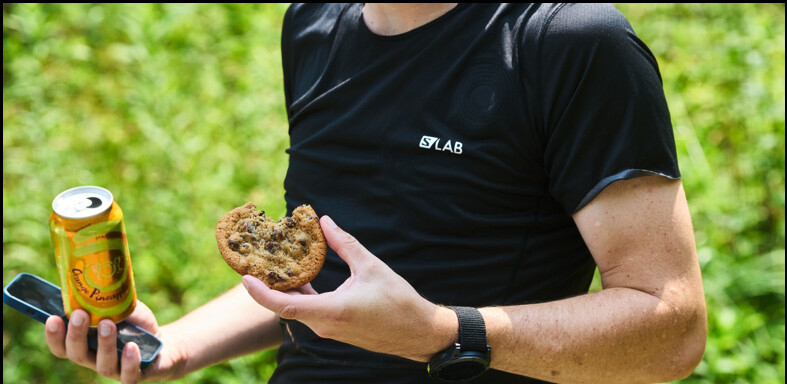
While these behaviors are generally considered normal and even admirable, it’s a “slippery slope” toward disordered eating at best, and an eating disorder at worst, says Jill Merkel, a registered dietitian specializing in sports nutrition and disordered eating. According to the National Eating Disorder Association, 35 percent of dieters will become pathological dieters, and of those, up to a quarter develop an eating disorder.
So what’s a runner to do? We talked to experts to find out what it means to have a healthy relationship with food, why it matters, and how to get there.
What does it mean to have a healthy relationship with food?
A healthy relationship with food is one where you base your food choices not on rules, restrictions, or how you want to look, but instead on how you want to feel. That means eating enough to satisfy your your hunger cues and fuel your training, choosing the types of food that support your overall health and wellness, and feeling free to eat in social situations—even if you’re not necessarily hungry.
Honoring your hunger cues is key, says Stephanie Roth-Goldberg, a psychotherapist whose specialties include sports psychology and eating disorder recovery. At the same time, there are plenty of times where it makes sense to eat even when you’re not hungry.
Fueling for performance means eating before, after, and sometimes during long and/or intense workouts, regardless of hunger. And regardless of your training volume or intensity, there are times your schedule should take precedence over your appetite. If, for example, your job requires you to work through a meal, taking care of your health means eating before your shift begins, regardless of whether you’re hungry at that time, says Roth-Goldberg.
It’s also important to eat in a way that supports your overall health. What that looks like is different for each of us, but Roth-Goldberg suggests focusing not on the scale but on factors like your sleep quality and energy levels, and metrics such as blood pressure, blood sugar, and cholesterol levels.
At the same time, one of the keys to mending (or maintaining) your relationship with food is giving yourself permission to fully enjoy it. You don’t have to be hungry to enjoy your aunt’s Christmas cookies, your grandmother’s latkes, or a slice of birthday cake among friends—and you don’t have to work out to “make up for them,” either.
Meanwhile, “it’s been proven that socializing is really important for mental health,” Roth-Goldberg explains. “So having the freedom and flexibility to say yes to an invite to a dinner party or brunch with your friends supports health in a more global way.”
Why should runners care about developing a healthy relationship with food?
A healthy relationship with food makes life more enjoyable, full stop. “When food isn’t a stressor, we can be present with our friends and family,” says Roth-Goldberg. In addition to creating stress around social activities involving food (as in, practically every gathering), fixating on food often means underfueling—which can seriously interfere with your running and your mental and physical health.
Underfueling puts you at risk for performance issues, including difficulty completing workouts, going into workouts feeling sluggish, postworkout soreness that lingers longer than usual, and experiencing a plateau or even a backslide in performance, says Merkel.
But it’s not just your running that suffers, says Merkel. Underfueling can mess with your hormones, resulting in issues like sleep disturbances, injuries, and illness. For women, an irregular period or the loss of your period is often a sign that you’re not getting the calories you need to support your training.
Strategies for Making Food Less Stressful
If you love the idea of making peace with food but aren’t sure how to get there, here are some pro tips to get you started. Keep in mind, if you suspect you have a disordered relationship with food or an eating disorder, it’s important to seek treatment. A registered dietitian and/or psychologist can help you address any struggles you experience.
1. Evaluate Your Current Relationship With Food
Before you start changing things up, take stock of your current situation, suggests Merkel. That means taking an honest look at how often you think about food, how much time you spend thinking about or preparing food, and noticing whether food brings you joy or whether you associate it with stress, anxiety, guilt, or shame.
If you find your thoughts about food take over a lot of your headspace and interfere with work or your happiness, it may signal that it’s time to reevaluate your relationship with food, and a professional can help.
It’s also worth looking at how often you weigh yourself and whether that number affects your mood or your eating habits, says Merkel.
If the time and energy you spend trying to manage your food and weight are interfering with your mental health or your quality of life, it may be time to take a new approach. And if you do decide to change things up, if you’re tempted to return to the status quo, this “status report” will serve as a helpful reminder of why your old habits weren’t working for you.
2. Be Your Own Guinea Pig
If you’ve been focusing on weight loss to optimize your fitness, try taking a scientific approach, suggests Roth-Goldberg. That means paying more attention to how you feel during your workouts and less attention to the number on the scale.
For example, if you typically run on an empty stomach, try having breakfast or a preworkout snack, and see what it does for your performance.
Roth suggests looking at energy levels, heart rate, and/or speed, to see how those metrics compare to your fasted workouts. You might be surprised to see how much adding some preworkout nutrition or adding more carbohydrates into your diet throughout the day improves your performance.
Regardless, it’s a good idea to base your fueling strategy on current data rather than assumptions.
3. Tune into Your Self- Talk
“A lot of times, we’re not conscious of how we’re talking to ourselves,” says Roth-Goldberg. To get more familiar with your inner dialogue, suggests writing your thoughts down in a journal so you can look at them—and then challenge them if you need to.
“Ask yourself, ‘would I say that to a friend? Is that, in fact, a helpful, motivating thought?” If the answer is no, find a way to reframe the thought so it’s still true, but also kind (or at the very least, not mean).
For example, you could substitute “I ate a sleeve of Oreos because I have no self-control” with a non-judgmental thought like “I ate a sleeve of Oreos because I was craving something sweet,” or “I ate a sleeve of Oreos and now I feel bloated and tired.”
4. Go into Social Situations With Intention
If restaurants, parties, and other situations where you’re not in control of the menu stress you out, try setting an intention before your next social gathering.
Especially as we enter the holiday season—and all the parties, gatherings, gift baskets, and treats that tend to come with it—try focusing on what you want to experience at your next gathering, rather than the calories you’re going to consume. “Check if any stories you’re telling yourself about food align with that,” Roth-Goldberg says.
If your intention is to enjoy the holiday, ask yourself what that means to you. “Food is so often a part of that,” says Roth-Goldberg. And often, enjoying the holiday means allowing yourself to enjoy food.
If your goal is to connect with and enjoy time your friends and family, but the noise in your head about calories is interfering with your ability to be fully present, coming back to your intention can help you redirect your attention on the present moment rather than your food anxiety.
5. Declutter Your Social Media Feed
If you’re following accounts that feature fitness or weight loss tips, take a hard look at how that content makes you feel, suggests Merkel. If it motivates you to get out and move your body in a way that feels good, or to try a new recipe that looks interesting, great. But if it’s not sparking joy—as in you feel anxious, “less than,” frustrated, jealous, or any other un-fun emotion—it’s time to do some tidying. Go ahead and hit the “unfollow” button.
You can also seek out accounts that inspire you without making you feel icky. Merkel suggests looking for profiles that include words like intuitive eating and health at every size. Other keywords to look for include body neutrality, non-diet, and joyful movement.
6. Ask for Help
If food were just fuel, this whole thing would be easy. But food represents comfort, connection, and so much more. And to make matters even more complicated, we’ve been exposed to conflicting (and often harmful) messages about food our whole lives. Which is all to say, if you’re struggling with your relationship with food, there’s no shame in asking for help.
Working with a trained therapist, dietitian, or intuitive eating counselor means having someone in your corner who has the knowledge and skills to ask the right questions and offer accurate information and individualized support. If you’ve ever worked with a running coach, you probably already know what a difference professional guidance can make.
When you’re searching for the right professional, be on the lookout for certain credentials, says Merkel. “You want to make sure you’re not going to see somebody who is actually reinforcing diet culture behavior,” she explains. Look for someone whose bio mentions experience with disordered eating, eating disorders, or exercise obsession and who is aligned with intuitive eating, health at every size (or HAES), or body neutrality and takes a weight-neutral approach to health and fitness. And remember that you’re worthy of help—even if you don’t meet the criteria for a clinical eating disorder. “You don’t need a specific diagnosis in order to seek help,” says Merkel. Because at the end of the day, as Roth-Goldberg reminds us, “A healthy relationship with food enables us to have a healthy relationship with our bodies.”
(12/10/2023) ⚡AMPby Runner's World
A Marathon Where Victory Isn’t Reserved for the Winners
CJ Albertson and Grace Kahura-Malang won the California International Marathon while dozens more fulfilled lifelong dreams to qualify for the U.S. Olympic Trials in their last chance
If there’s one race where the adage ‘To the victor go the spoils” does not ring entirely true, it’s the California International Marathon (CIM). The commanding wins of CJ Albertson and Grace Kahura-Malang were certainly deserving of celebration. But they shared in the sweet taste of victory with dozens more high-level runners on last Sunday morning.
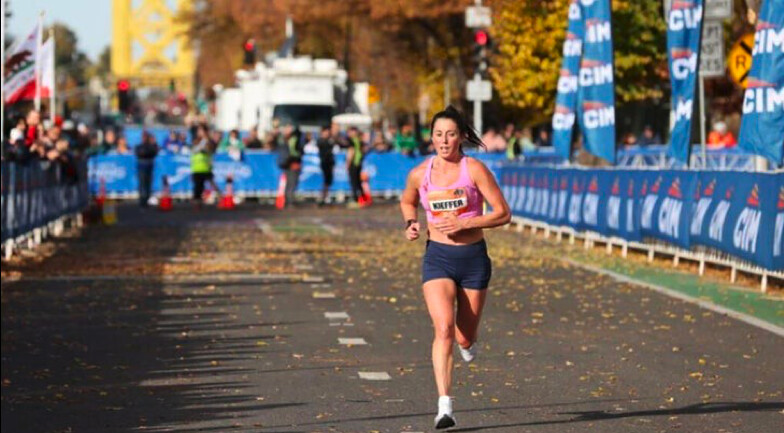
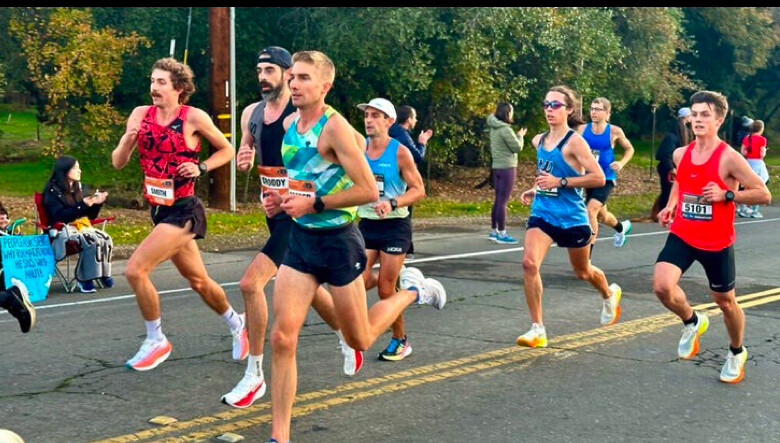
For several minutes after Albertson stormed from behind to take the men’s race in 2:11:09 and Kahura broke the tape in the women’s race with a personal best of 2:29:00, the finish line exhilaration continued to build as numerous runners sprinted their way to the finish line on M Street, adjacent to the California Capitol Mall in downtown Sacramento.
That’s because the winning prizes extended far beyond the $10,000 to something money can’t buy. American runners who could get to the finish line in time earned a qualifying berth for the 2024 U.S. Olympic Trials Marathon on February 3 in Orlando, Florida. That event will determine the six U.S. runners who will compete in next summer’s Paris Olympics, but it’s also a quadrennial benchmark of domestic distance running excellence, and the chance to run in it—especially for those who have no chance at making the Olympic team—is a badge of honor that lasts a lifetime.
Sunday’s CIM was the last opportunity to grab that proverbial brass ring, and as the time ticked down to the cutoffs—2:18 for men and 2:37 for women—41 runners realized dreams that had been several years in the making. That’s a considerably smaller number than the 109 runners who qualified four years ago, but the Olympic Trials are four weeks earlier this time around and many runners opted for earlier races.
To reach the lofty Olympic Trials qualifying (OTQ) standards, many runners had to face their inner demons as they accepted the physical, mental, and emotional challenge of running 26.2 miles faster than they ever have.
“It was very hard-fought,” said Mary Denholm, a Colorado runner who lowered her personal best by more than four and half minutes to finish in 2:36:28 and earned the OTQ time. “During the race, I tried to think as little as possible, but you know those little negative thoughts creep in. I kept saying to myself, Well, you’d be happy with a 2:37 or a 2:38, which is true, but I had to not allow myself to accept that and slow down. Marathoning is so hard. It’s a process. You really have to love the journey.”
Celebrating its 40th year, CIM has developed a reputation as one of the best domestic races for elite and age-group runners seeking personal best efforts, whether that’s chasing an OTQ or Boston Marathon-qualifying time. The race’s point-to-point, net-downhill 26.2-mile course from Folsom to Sacramento amid Northern California’s typically favorably cool, dry early December weather is ideal for running fast for any of the 10,000 participants. But what makes fast times more likely is the communal effort of the large packs of runners at nearly every pace group.
With the Trials-qualifying deadline of December 5 looming, about 200 American runners lined up at CIM to specifically chase the 2024 OTQ marks. While a few have been training with the aid of sponsorships or trying to become professional runners, the majority were amateur runners who work full-time jobs.
For some—like first-time marathoners and twenty-somethings Charlie Sweeney, Christian Allen, Ava Nuttall, and Abbie McNulty—it was the initial opportunity to meet the mark. But it wasn’t the first rodeo for many others who were back after coming up short in previous years, including thirty-somethings Denholm, Noah Droddy, Allie Kiefer, and Chad Beyer. For some who are slowing with age, or on the verge of hanging up their racing shoes for bigger career pursuits, CIM might have been the final shot of their competitive running careers.
In the moments before the race in Folsom, the nervous energy of every elite runner was palpable as they did their final pre-race strides and stretches, each one carrying with them their own long backstory that brought them to the brink of their dreams. After a brief moment of calm on the starting line, the gun went off and the enticing challenge began.
“This was my shot,” said Droddy, a 33-year-old Salomon-sponsored pro from Boulder, Colorado, who had a breakthrough 2:09:09 runner-up performance at The Marathon Project in 2020 but, because of a variety of injuries, hadn’t finished a marathon since. “I qualified on the last day in 2016, and so this was another full-circle moment to try to do it on the last day again.”
For the next two-plus hours, every runner locked into the silent rhythm of their race pace—each with their own goal in mind—holding onto the cadence of the random runners nearby. This is all the while knowing that consistent effort would gradually transition from being smooth and tolerable to eventually becoming extremely difficult by the later miles of the race.
Allen, a marathon rookie from Salt Lake City eager to make his mark, boldly opted to run off the front from the start with New Zealand’s Matt Baxter and Kenyan Milton Rotich, while Albertson, a Fresno-based runner who has been one of the most consistent elite-level marathoners in the U.S. for the past several years, looked calm and content as he ran just off the lead near the front pack.
While many OTQ-seeking American women grouped together in the quest for a 2:33 to 2:37 finish, Kahura-Malang, a 30-year-old Kenyan runner who lives near Boulder, started quickly and tagged along with a much-faster group of men with hopes of breaking 2:30 for the first time.
“I really didn’t know how far I was from the other women, but I didn’t want to focus on that,” she said. “I just wanted to keep running fast.”
Achieving success in a marathon can be a fickle task—one that relies on equal parts sufficient training, optimal fueling, and mental tenacity. But the magic of an elite-level marathon, especially CIM during a pre-Olympic Trials year, can be tied to finding confidence running amid the collective rhythm of a pack of like-minded runners, at least until things get difficult at the crux of the race somewhere near mile 20.
Maintaining race pace and grinding through the final miles is something every runner experiences, each one to varying success. That’s where inspirational mantras, acknowledging motivational words written on an arm, or a variety of other mental tricks come into play.
“We had a great group for a while, and then about 20 miles, it started to thin out,” said Jacob Shiohira, 27, from Bentonville, Arkansas. He sliced seven minutes off his personal best with his 13th-place, 2:16:34 finish to make the OTQ cut. “The last three miles turned into a grind, but everyone’s in the same boat, and that’s what makes it special.”
The 26-year-old Allen, fresh off finishing an All-American track and cross country collegiate career at Brigham Young University, spent the summer racing shorter distances on roads and trails. He stuck with his gutsy strategy to lead the race until his legs began to tighten up at the 23-mile mark. Albertson had let Allen and Rotich get ahead of him on a few of the later hills in the race but patiently stayed within himself and seized the lead late in the race to open up a two-minute advantage before the finish.
Rotich finished two minutes after Albertson in 2:13:04 for second, followed by Charlie Sweeney, a 24-year-old runner from Boulder, who completed a stunning debut marathon with a third-place, 2:13:41 finish to earn the Olympic Trials-qualifying standard. After that, Baxter, a Kiwi runner who runs for NAZ Elite, put down a new personal best of 2:14:08, followed by Eritrea’s Amanuel Mesel (2:14:11). From there, Robert Miranda (2:14:43), Jerod Broadbooks (2:14:58) and Allen (2:15:01) led a parade of 27 American men who celebrated securing their OTQ times.
Droddy made it too, finishing 17th in 2:16:56, to earn one of the celebratory golden OTQ flags CIM handed out to each of the qualifiers.
“I didn’t care about the time at all, just as long as it was under 2:18,” said Droddy, who also qualified in 2016 and 2020. “I was just happy to get it done. It means a lot because now I know I can join my teammates at the Olympic Trials.”
More than four minutes after Kahura-Malang ran away with the women’s title, Kiefer (2:33:26) led the charge of a long string of American women who cruised in under the OTQ cutoff. Once a top American runner, the 36-year-old from Austin, Texas, hadn’t finished a marathon since she placed seventh in New York in 2018. Like a lot of runners, she’s been through a lot of challenges in recent years, including injuries, races she’s dropped out of (including the 2020 U.S. Olympic Trials in Atlanta), relocating to new cities, changing coaches, and general motivation.
“I’m back to the basics of having fun with it,” Kiefer said. “There’s no pressure right now. I just wanted to have a good experience, and it was a great experience. It feels validating to get back to the Trials. It’s just nice to go out there and do the part you love.”
Nuttall, 22, was perhaps one of the positive surprises of the day. A senior at Miami University in Ohio, where she was the top cross country runner for the Redhawks this fall, she finished her debut marathon in third place in 2:35:09. After that it was Kaylee Flanagan, 28 who earned her first OTQ with a strong 2:35:24 effort to join her older sister and Asics pro Lindsay Flanagan in Orlando. After that it was professional trail runners Rachel Drake (2:35:28) and Peyton Thomas (2:35:42), who finished fifth, and sixth, respectively. (Drake is also the mother to 14-month-old son, Lewis.)
Nine more women earned the OTQ time—14 total—including Denholm, who finished 13th in 2:36:28.
But amid the joy of dreams coming true, there was also the heartbreak of near-misses. Tammy Hsieh sprinted to the finish just in the nick of time, crossing in exactly 2:37:00 to make the women’s cut, but moments later Gina Rouse (2:37:10) and Jennifer Sandoval (2:37:11) narrowly missed it and went home disappointed.
On the men’s side, Duriel Hardy dashed across the line in 2:17:56 to become the final men’s OTQ’er, but then Alexander Helmuth came across the line two seconds too late in 2:18:02.
After a record 511 women qualified for the 2020 U.S. Olympic Trials Marathon in Atlanta—nearly double the number of male qualifiers—the women’s standard was lowered by eight minutes, down from 2:45 to 2:37. The new mark equates to a hefty 18 seconds per mile faster, down from 6:18 minute mile pace to 6 minutes flat. Denholm, who qualified in 2020 with a 2:42:02 effort at the 2019 CIM, was one of hundreds of women who spent the past several years trying to make that big leap.
After running a personal best of 2:40:59 at the 2022 Boston Marathon, Denholm hoped to continue her progression and earn her qualifying time months ago. But the marathon is a fickle event because training never goes perfectly and something—injuries, work, life—always gets in the way. And sometimes everything goes right and it’s just not your day on race day.
After dealing with a torn labrum and then going through a divorce, career changes, and a move from California to Colorado, the 36-year-old running coach targeted last summer’s Grandma’s Marathon in Duluth, Minnesota—another domestic race on par with CIM when it comes to providing a competitive platform for elite and sub-elite runners to excel.
But despite a good training block, Denholm struggled in that race and finished in 2:43:19. After that, she refocused her training with the help of coach and three-time OTQer Neely Gracey and set her sights on the September 24 Berlin Marathon, only to come down with COVID after she arrived in Germany. Not wanting to give up, she retooled her training one more time and registered for CIM as a last-ditch effort.
She was on 2:36 pace the entire way, running near-identical 13.1-mile splits of 1:18:17 and 1:18:11, but needed the encouragement of friend, Sofie Schunk, to get her through the final miles. Schunk, 31, of Albuquerque, finished six seconds ahead of her in 2:36:22.
“I went to a really dark place out there and had to fight through that,” she said. “It was awesome to have other women out there to go for it with and encourage along the way. I split some of my faster miles near the end, and I’ve never been able to do that, so that was a huge victory for me. I hope this can be encouraging to other women because I really think everyone is limitless. I’ve just worked really hard to get where I am and I just want others to feel encouraged.”
(12/10/2023) ⚡AMPby Outside Online
Running Through the Night to Confront the Darkness of Substance Addiction
Ultrarunner Yassine Diboun found his own unique way to help those in recovery move through darkness together. It’s working.
Since 2020, Yassine Diboun has made it a point each year to black out one square on his calendar with a Sharpie.


It’s a gesture to signify that on this day, typically set around the winter solstice, this 45-year-old ultrarunner and coach from Portland, Oregon, won’t run during the day, as he does most every other day of the year. Instead, he’ll watch a movie with his daughter, Farah, or cook a meal with his wife, Erica, eagerly waiting for night to fall. Because that is when the action starts.
Diboun has become a fixture in Portland’s trail running scene, a Columbia-sponsored runner and one of the most electric and positive forces in the U.S. ultrarunning scene today. He is also an athlete in active substance addiction recovery since 2004.
And here, at the confluence of endurance and recovery, is where Diboun enacts an annual tradition in Portland called Move Through Darkness. From sundown to sunup, Diboun runs through the evening, covering a route that connects city streets with trails in Forest Park while accompanied by dozens of other runners.
On December 9, Diboun will start his fourth-annual Move Through Darkness run. It may exceed 70 miles. It may not. That’s not really the point, though in some sense it is, for the more miles he runs, the more pledge-per-mile dollars he gains to funnel into future recovery programs, the very support structures that saved his own life two decades prior.
In 2009, Diboun and his wife moved to Portland, where he pursued a career in coaching. One of the first things Diboun did upon arrival was to connect with the recovery community, which led him to The Alano Club of Portland, the largest recovery support center in the United States.
Diboun’s personal history of substance addiction is circuitous and complicated—documented extensively in Trail Runner, The New York Times, Ginger Runner interviews, and others—but what’s most important to know is that it led him down a path that wasn’t his own. Alcoholics Anonymous (A.A.) and the 12-step program threw him a lifeline and he white-knuckled it to shore, reinforced by commitments to a plant-based diet and a healthy dose of body movement. (That’s code for running a ton of miles.)
Such discipline brought him to the highest levels of ultrarunning. He’s a four-time finisher of the Western States 100 Mile Endurance Run (once in the top 10), a three-time finisher of the H.U.R.T. 100, in Hawaii, and he represented the U.S. at the IAU Trail World Championships in 2015. These accolades sit beside countless ultra wins and podiums.
His success story prompted Brent Canode, executive director of the Alano Club or Portland, to reach out to Diboun in 2018 with a proposition. Diboun had, by then, teamed up with mountain athlete Willie McBride, to start Wy’East Wolfpack in 2012. The business offers group functional fitness programs, youth programs, and personal guidance to get people outdoors and on trails.
Under Canode’s leadership, the Alano Club just launched The Recovery Gym (TRG)—a CrossFit-style facility offering courses for those in recovery, and Canode saw running as a natural extension of this program. He asked Diboun to spearhead a new running portion of the gym. For Canode, though models like the 12-step program were widely available and proven effective, he found the diversity of options for community lacking beyond that.
“What we learned was that a lot of folks don’t attend 12-step programs,” Canode says. “They haven’t found a connection anywhere else, and that’s a matter of life or death for a person in recovery.”
Together, the two started regular informal runs called the Recovery Trail Running Series, which evolved into a more formalized wing of the gym: Run TRG. This program quickly took off, offering evening group runs, outings that would often end in post-run dinners and fun gatherings. The groups grew bigger each week.
“We cultivated this community for anybody in or seeking recovery from substance addiction, and it really picked up some good momentum,” Diboun says.
When the pandemic shut everything down in March 2020, including The Recovery Gym and its new Run program, regulars instantly lost the group’s connection. Many relapsed and started using substances again. A few turned to suicide, including a prospective coaching client for Diboun who had met with him just one week prior.
“I know from personal experience that life can get too overwhelming at times and you get too stressed or overwhelmed and you can’t see anything,” Diboun says. “You can’t see any hope, so you just live recklessly, helplessly. In extreme cases, life can feel not worth living anymore.”
While running one evening by headlamp, Diboun thought about the fragility of hope, the pandemic, the recent suicides, and the ever-increasing need for community. The combination of isolation and mental health decline, paired with an uptick in running popularity during the pandemic (Run TRG, once relaunched, tripled in size), created an opportunity for Diboun to leverage his visibility as both a decorated ultrarunner and someone vocal about his addiction history.
An idea was born: Move Through Darkness.
For one night, sundown to sunrise, he would organize a run to crisscross the city, connecting various trail systems and raising visibility of the mental health challenges entangled with isolation and addiction. It would take place around the winter solstice, the longest night of the year.
The initiative would serve three main purposes: First, it would be a personal pilgrimage for Diboun, a reminder of his own ongoing relationship with sobriety. Second, it would offer another way for those in recovery to come closer during difficult times. And third, the event would raise financial support for the Alano Club of Portland, which serves more than 10,000 people in recovery each year through mutual support groups like A.A., peer mentoring services, art programs, harm reduction services, and fitness-based initiatives like The Recovery Gym and Peak Recovery, Alano’s newest program, which provides free courses in split boarding, rock climbing, and mountaineering. Over the last eight years Alano has won four national awards for innovation in the behavioral health field.
December 2020 was the first-ever Move Through Darkness event. About 30 runners participated throughout the night, joining Diboun in various sections of his sinuous route. Given that the invitation was to run upwards of 100K through the night in some of the worst weather of the year, the turnout was impressive. The group eventually made their way to Portland’s Duniway Track to complete a few hours of loops, encouraged onward by music.
One of those runners that first year was Mike Grant, 47, a licensed clinical social worker from Portland. Grant has been in long-term recovery with substance addiction and understands the initial hurdles of getting out there. During the event, Grant completed his first ultra-distance run by covering 50 miles. He hasn’t missed a Move Through Darkness run since.
This year, he’ll be joining again, in large because of Diboun.
“You hang out with Yassine for any length of time, and the next thing you know you’re running further than you ever have before,” Grant says. “He’s one of those people you just feel better when you’re around.”
The Move Through Darkness route is roughly the same every year, but it always starts and ends at the Alano Club, located in Portland’s Northwest neighborhood. This first year, his daughter, Farah, ran with him from Duniway to the Alano Club, which was a particularly special moment to share.
The fundraising component is a pledge-per-mile model, where you can pay a certain dollar amount for every mile Diboun will cover. All funds go to support the Alano Club, specifically the Recovery Toolkit Series. Other recovery-focused gyms are increasingly available nationwide, but The Recovery Gym is the only CrossFit affiliate in the U.S. designed from the ground up, exclusively for individuals in recovery.
Each week, TRG offers six to eight classes free of charge to anyone in recovery. Every coach holds credentials in both CrossFit instruction and peer mentoring for substance use and mental health disorders. An original inspiration for Run TRG was the Boston Bulldog Running Club, a nonprofit established in 2015 to provide running community reinforcement for those affected by addiction and substance addiction.
According to national statistics released earlier this year, 29 percent of U.S. adults have been diagnosed with depression at some point in their lives—the highest rate since such data was measured. Suicides in the U.S. reached all-time highs in 2022, at nearly 50,000 lives—about 135 people per day lost to self-inflicted death. In 2022, 20.4 million people in the U.S. were diagnosed with substance abuse disorder (SUD).
Oregon, specifically, is rated number one in the country for illicit drug use. In 2020, Oregon had the second-highest alcohol and drug addiction rates in the country, while ranking last in treatment options.
Canode says that, after 40 years of researching addiction and effective recovery, the single most important aspect of recovery success is authentic connection to a like-minded community. That’s why both Canode and Diboun are building an all-hands-on-deck approach to recovery through running, to strengthen connections through movement.
“In recovery, we know how to grind,” he says. “We are naturally great endurance athletes. We also know how to consistently move through darkness, which is especially true in the beginning of someone’s recovery journey. It’s often not rainbows and unicorns and lots of positivity. It’s a grind. It’s grueling.”
Annalou Vincent, 42, a senior production manager at Nike, is one of the many people who have reached out to Diboun from all over the Portland community.
“Finding Yassine and Run TRG saved my life,” she says. After starting a running practice in her thirties, she started feeling better and decided to question decisions like drinking alcohol. She eventually dropped booze and became a regular at the Run TRG. Vincent has worked closely with Yassine to develop and promote Run TRG, and has joined Diboun for various legs of Move Through Darkness over the years.
“I can’t imagine my life or my sobriety without running and this program, says Vincent. “Over the years I’ve seen it change the lives of many others. Move Through Darkness is an extension of that. This program and others like it are saving lives.”
Willie McBride, Diboun’s business partner, supports Move Through Darkness each year and has witnessed its evolution and impact.
“I think people really connect with this project because they understand those dark parts of life, and how challenging they can be. Darkness comes in all different forms,” he says. “But also the very tangible act of running all night, literally putting their body out there—coming together as a group sheds light right into that darkness.”
Diboun is reminded daily of his life’s work, to remain sober and offer his endurance as a gift to others, even when it gets difficult.
“I’m coming up on 20 years sober, but I’m not cured of this,” he says. “This is something I need to keep doing and stay on the frontlines.”
With record rainfall aiming for Oregon in December, this Saturday night calls for a 58 percent chance of rain showers, with the last light at 5 P.M. and the first light around 7 A.M. That’s potentially 14 soggy hours of night running. But this forecast doesn’t cause Diboun any concern. He’s used to it, used to running for hours in the dark, used to being drenched. He’s faced that long tunnel and knows that there’s always light at the end, as long as you keep trudging forward, and best when together.
“You keep passing it on,” he says. “You keep giving it away, in order to keep it. Gratitude is a verb.”
(12/10/2023) ⚡AMPby Outside Online
4 short speedwork sessions to sneak in over the holidays
It can be challenging enough to fit running in around the many other obligations we juggle; throw in fewer daylight hours and fast-approaching holidays and it feels near impossible. Each of these quality speedwork sessions can be done in 40 minutes or less. If you need to make these even shorter, adjust the length of your warmup and cooldown.
30-minute fast-finish session
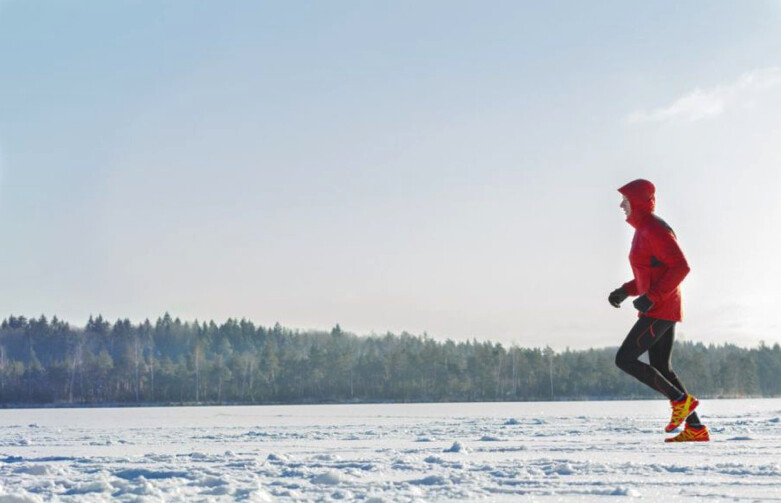
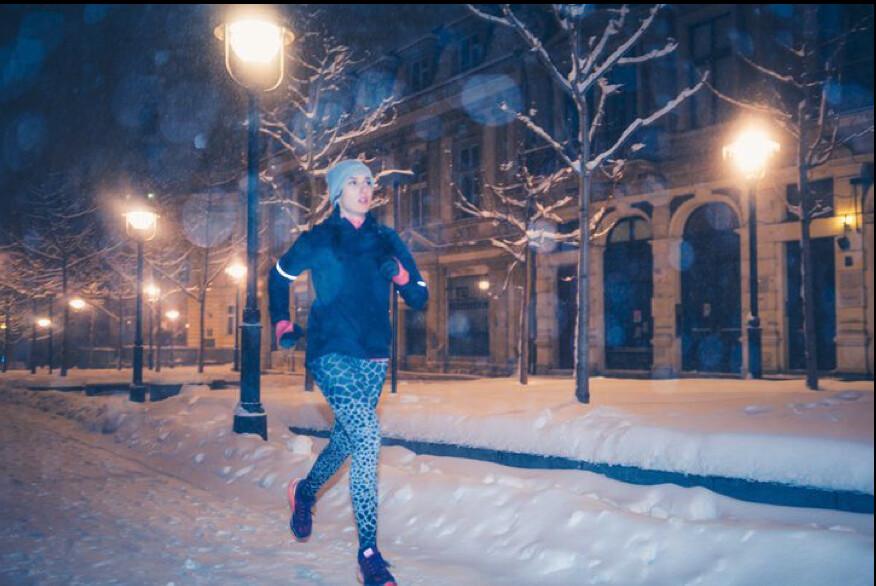
This workout allows you time to adequately warm up before running hard; your effort for the final 10 minutes should be tough, but not hard enough to leave you struggling to finish. You can easily add a five to 10-minute cooldown to the end of this one, if you have time.
Start by running for 20 minutes at a very easy pace or effort.
Pick up the pace for the final 10 minutes of your workout, running at a medium-hard effort. (Yes, it’s that simple.)
Threshold intervals
This interval workout pushes your aerobic threshold–the limit at which your body can work before lactic acid begins building up. Designed to keep your heart rate up for long enough to build strength without causing exhaustion, threshold intervals will make your goal race pace feel easier.
Warm up with 10 minutes of easy running.
Run for two minutes at 80 per cent effort, then two minutes recovery at an easy pace, and repeat eight times.
Cool down with five minutes of easy running.
40-minute hill repeats
For this session you’ll need to find a hill that is challenging enough to make you breathe hard as you move up it, but not so steep that you lose control of your form. Run at a hard effort up the hill, while maintaining a quick cadence and proper running form.
Start with 10 minutes of easy running to warm up.
Run 8-10 x 30 seconds uphill at a hard effort, with 90 seconds recovery jog.
Cool down with 10 minutes of easy running.
Strength-building progression run
The 12 minutes of faster running at the end of the workout will give both your legs and your lungs a workout, and improve overall efficiency.
Warm up with five minutes of easy running.
Run 15 minutes at goal marathon race pace.
Run 12 minutes at a hard pace (try your goal 10K race pace).
Cool down with five minutes of easy running.
Follow any hard workout with easy running or a recovery day, and make sure to hydrate well.
(12/10/2023) ⚡AMPby Running Magazine
A word from Kenenisa Bekele
I pushed my limits at the Valencia Marathon last weekend and thrilled to share the incredibly encouraging results! Finished 4th with a time of 2:04:18 filling me with hope for future races. Couldn't have done it without the amazing support of my fans – your encouragement means the world to me.
Big thank you to my sponsor ANTA for their support. Excited for what's to come!
Valencia, you've been an incredible host, and I never expected to have this much fun. Your warmth and energy have been truly inspiring, and I'm grateful beyond words.
The Valencia course is so comfortable, and I strongly believe it has the potential to witness the breaking of world records in the future.
Thank you all for being a part of this incredible journey. Your unwavering support keeps me going. Here's to aiming high and never giving up on our dreams!
(12/09/2023) ⚡AMPby Kenenisa Bekele
VALENCIA TRINIDAD ALFONSO
The Trinidad Alfonso EDP Valencia Marathon is held annually in the historic city of Valencia which, with its entirely flat circuit and perfect November temperature, averaging between 12-17 degrees, represents the ideal setting for hosting such a long-distance sporting challenge. This, coupled with the most incomparable of settings, makes the Valencia Marathon, Valencia, one of the most important events in...
more...Top US Spring Marathons to Get a 2024 Personal Best
Christmas, New Year, multiple parties, and family gatherings are just around the corner. With the holiday season and the cold weather, planning for your next spring marathon in 2024 is probably the last thing on your mind.
However, there’s no such thing as being too busy or too early when planning your next race. In fact, a solid 20-week-long marathon training plan with some breathing room requires around five months. That’s why “now” is the best time to prepare for your next spring marathon.
From World Majors and massive city marathons to trail runs and small-town races, there are a lot of marathons to choose from this coming spring. But we’ve got you covered. We’ve listed some of the must-try spring marathons across the United States. Check them out here.
In March, Myrtle Beach in South Carolina has an average temperature of 64 degrees, which might feel cool for swimming but is perfect for running a marathon. Hence, before the town gets busy with spring break, it hosts a race by the beach called Myrtle Beach Marathon. This year, it’ll be held on March 2, 2024.
Myrtle Beach Marathon is one of the best spring marathons in South Carolina that you can run all year. It’s a great choice for first-time marathon runners because the course is flat and follows the coast in a loop without many hills. The cool ocean winds also help you stay comfortable and prevent you from overheating while running.
Unlike most races that stick to simplicity, the Little Rock Marathon in Arizona goes all out to make their event extraordinary. They choose a theme every year to make their race as spectacular and entertaining as possible. In this coming race, the planned theme is a touch of prehistoric flair, so expect to see runners in Jurassic Park-themed gear on March 3, 2024.
Another unique feature of the race is their massive and extravagant finisher medals, some of the biggest in the business! Plus, the race will introduce a new course that’s a qualifier for the Boston Marathon. It’s one of the major races that allow betting from different sportsbooks like FanDuel Sportsbook.
While the Los Angeles Marathon may not have the same global recognition as New York, Boston, or Chicago marathons, it stands out as one of the finest city marathons in the USA. What’s more, the vast and diverse landscape of Los Angeles provides a fantastic backdrop for the race.
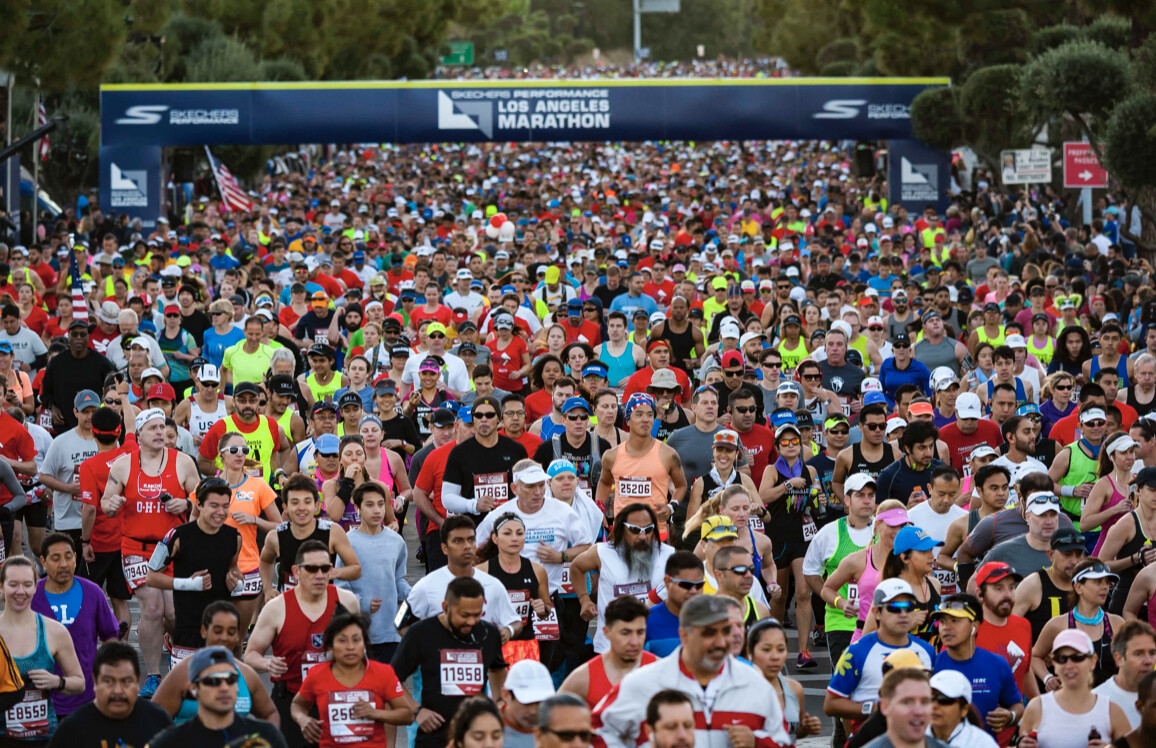
This race will be held on March 17, 2024. The course will begin at Dodgers Stadium, pass through iconic LA spots like Rodeo Drive and Hollywood Boulevard, and conclude on Santa Monica Boulevard. What makes this marathon even more exciting is the chance to run alongside celebrities who often participate in their hometown race.
The Newport, Rhode Island often has two races: one in spring and another in fall. Both promise a scenic and memorable experience, blending natural beauty with a touch of local charm. They offer breathtaking views of the town’s stunning mansions, windy beaches, and rocky coastline. However, they’re managed by different organizations.
The spring Newport Marathon, in particular, is well-known because it coincides with the city’s celebrated blooming of over one million golden yellow daffodils. This year, it’ll be held on April 13, 2024. After tackling the hilly course, you’ll also be treated to a finisher festival with plenty of goodies like a much-needed pizza.
Kentucky Derby Festival Marathon
Experience the thrill of racing through Churchill Downs, not just with horses but also as part of the Kentucky Derby Festival Marathon. It will take place on April 27, 2023, a week before the renowned horse race. This allows you to run through Louisville, including a pass through the iconic home of the Kentucky Derby.
Since the marathon offers a blend of athleticism and the charm of the equestrian world, it’s recommended to turn your marathon into a full-fledged vacation. Consider staying for a week filled with events leading up to a lap around the famous track—a must-try experience for any avid runner!
Surprisingly, Eugene (not Seattle or Portland) hosts the largest marathon in the Pacific Northwest. This means you’ll be part of a sizable running community, enjoy the cheers of enthusiastic spectators, and receive ample support from dedicated volunteers throughout the race.
Next year, the Eugene Marathon will be held on April 28. Its back half takes you along the scenic Willamette River, offering beautiful natural landscapes to admire as you approach the finish line. Although it may sound hard, the race is beginner-friendly and a good start to getting a personal record (PR). It’s also a favorable choice to qualify for the Boston Marathon.
Finding the right race for you involves considering your skills, training needs, and personal preferences. While this highlights marathons offering unique experiences and challenges next spring, it’s incomplete. Take the time to explore various options, ensuring that the chosen marathon aligns with your abilities and allows for adequate training and rest.
(12/09/2023) ⚡AMPLos Angeles Marathon
The LA Marathon is an annual running event held each spring in Los Angeles, Calif. The 26.219 mile (42.195 km) footrace, inspired by the success of the 1984 Summer Olympic Games, has been contested every year since 1986. While there are no qualifying standards to participate in the Skechers Performnce LA Marathon, runners wishing to receive an official time must...
more...Obiri, Kibet expected to defend titles as date for 2024 Ras Al Khaimah Half Marathon is revealed
Kenyan champions prepare to defend titles in the 17th Ras Al Khaimah Half Marathon, featuring new routes and 10km race.
The 17th Ras Al Khaimah Half Marathon has officially announced its date promising an electrifying event on February 24, 2024, against the stunning backdrop of the United Arab Emirates.
The prestigious event, held under the patronage of His Highness Sheikh Saud Bin Saqr Al Qasimi, UAE Supreme Council Member and Ruler of Ras Al Khaimah, is set to make history this year with a new route on Al Marjan Island and the introduction of its inaugural 10km Road Race.
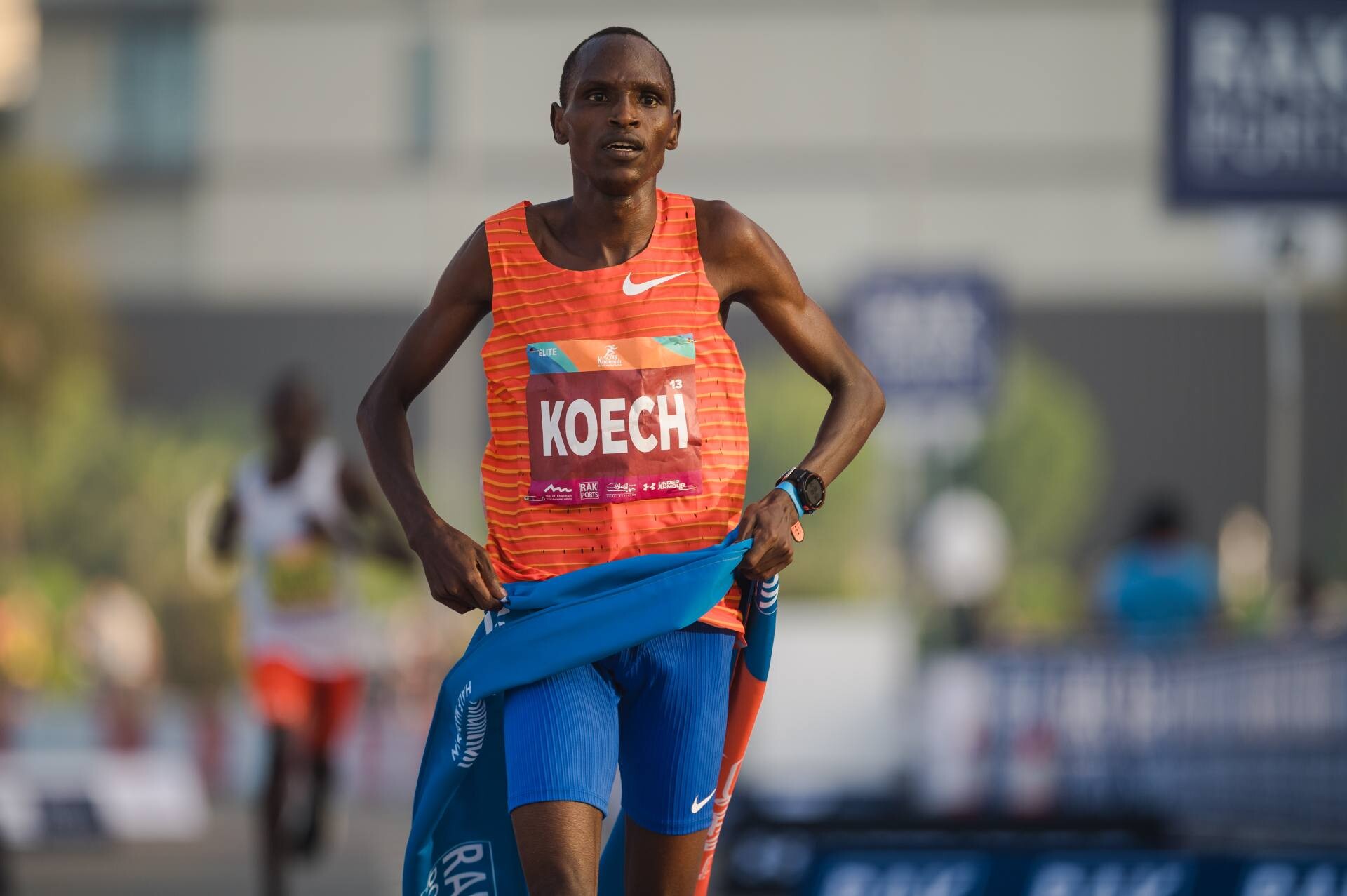
Hosted by the Ras Al Khaimah Tourism Development Authority (RAKTDA), this renowned marathon will once again see elite long-distance athletes from around the globe, while also inviting thousands of passionate runners to participate in the associated 10km or 2km runs.
For the very first time in its illustrious history, the RAK Half Marathon will include a 10km race, a distance that serves as the perfect stepping stone for aspiring runners looking to prepare themselves for the ultimate challenge of a half marathon.
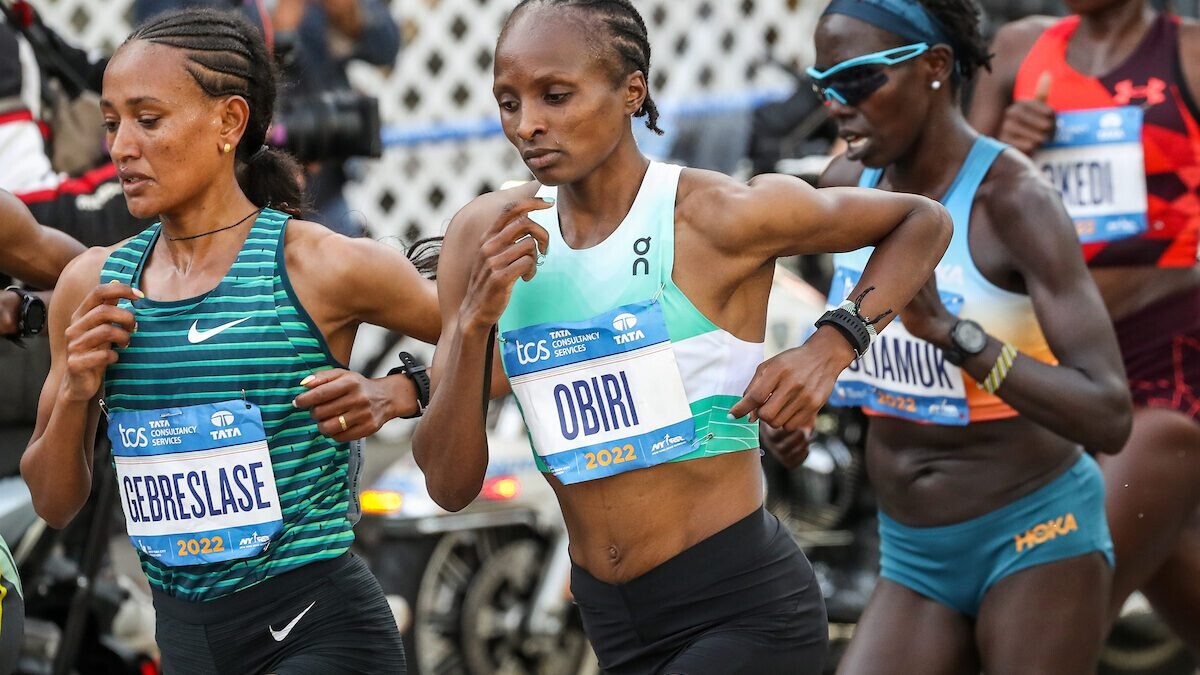
A significant change for this year's race is the introduction of a new route that will see the start and finish line located on Al Marjan Island.
Looking ahead to 2024, all three races will unfold on the scenic roads of this premier destination, a remarkable cluster of four coral-shaped islands within a stunning man-made archipelago.
As per Gulf News Raki Phillips, Chief Executive Officer of Ras Al Khaimah Tourism Development Authority, expressed his enthusiasm, stating, "We are very excited to announce the new date for the iconic RAK Half Marathon.
Since its inception 17 years ago, the event has carved its own niche on the global running stage, shining a bright spotlight on Ras Al Khaimah and attracting spectators and competitors of all skill levels. This annual race continues to produce world-class champions, while fostering a sense of unity between the local and international communities."
The news of the RAK Half Marathon's return has already captured the attention of world-class athletes who are eager to test their mettle in the ideal racing conditions provided by this event.
Many of them see this race as a crucial stepping stone as they prepare for prestigious competitions like the London Marathon and the Paris Olympics.
Reflecting on the previous edition, the 16th Ras Al Khaimah Half Marathon witnessed a Kenyan double win, with Bernard Koech securing the men's elite title and Hellen Obiri dominating the women's event in impressive times of 58:45 and 1:05:05, respectively.
Obiri's victory this year marked a remarkable improvement from her runner-up position in the previous Ras Al Khaimah Half Marathon.
Peter Connerton, Managing Director of Pace Events and Race Director of the Ras Al Khaimah Half Marathon, conveyed his honor and excitement, saying, "We are honored to have been entrusted with organizing the RAK Half Marathon, one of the most prominent sporting and social events in the UAE.
By introducing a 10km Road Race to the schedule as well as the option for team competition through the Corporate Challenge, we aim to make race day bigger and better than ever, while at the same time ensuring that the Ras Al Khaimah Half Marathon continues to attract the world's best distance runners."
The 2023 edition of the event attracted a star-studded lineup, including athletes like Seifu Tura, Daniel Mateiko, Kennedy Kimutai, Brigid Jepchirchir Kosgei, and Gotytom Gebreslase.
(12/09/2023) ⚡AMPby Festus Chuma
Rak Half Marathon
The Rak Al Khaimah Half Marathon is the 'world's fastest half marathon' because if you take the top 10 fastest times recorded in RAK for men (and the same for women) and find the average (for each) and then do the same with the top ten fastest recorded times across all races (you can reference the IAAF for this), the...
more...Jamaican hurdler Rushell Clayton eyes victory at Paris Olympics
The two-time 400m hurdles bronze medallist, seeks Olympic gold, driven by relentless determination, training hard, and setting lofty goals.
Two-time 400 metres hurdles World Championships bronze medallist Rushell Clayton is setting her sights on a golden achievement at the upcoming Paris Olympic Games.
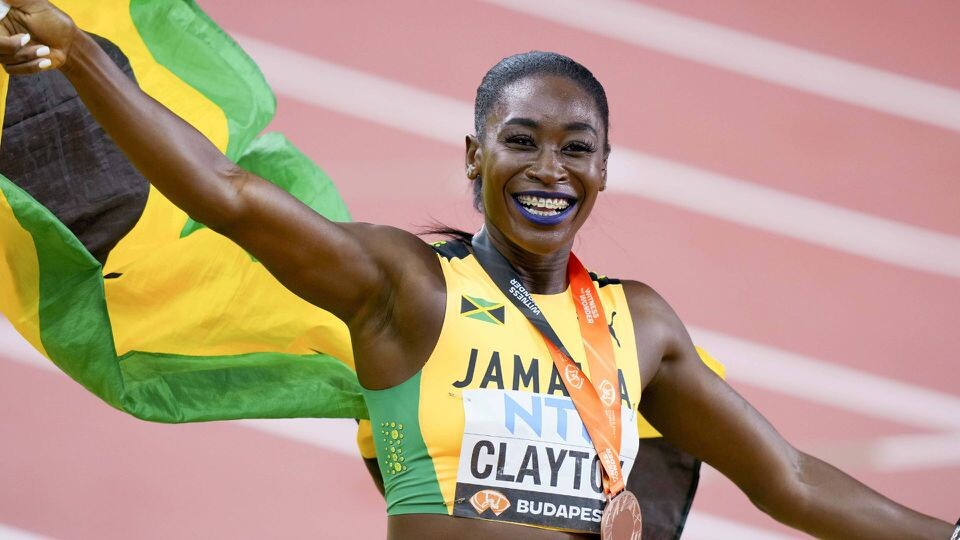
While she takes pride in her impressive professional athletic career, Clayton is determined to break free from the bronze cycle that has defined her major competition achievements.
At the age of 31, she is relentlessly pursuing the elusive gold medal.

"The goal is always to win the gold, so, for me, it's always getting into that top three," she said as per Jamaica Star.
Clayton, a member of the Elite Performance Track Club, had a stellar season marked by numerous personal best times.
She understands that to ascend to the highest step of the medal podium, she must continue to push herself to achieve better times.
With a personal best of 52.81 seconds, set at the World Athletics Championships in Budapest, Hungary, earlier this year, Clayton acknowledges that she might need to clock a time below 51 seconds to secure the coveted gold at the Paris Olympic Games in the next year.
To achieve her ambitious goal, Clayton is leaving no stone unturned, including the quest to dip below the national record of 52.42 seconds set by Melanie Walker.
"Personal records mean you're getting better, so it's always to run fast, and the faster you run, the more you get personal bests," she added.
While Clayton has a time goal in mind, she emphasizes that when it comes to the final race, it is not just about the clock; it is about the medal.
"The work never stops for Clayton," she affirms.
Clayton's hard work and outstanding performances during the last season have not gone unnoticed.
While Clayton has a time goal in mind, she emphasizes that when it comes to the final race, it is not just about the clock; it is about the medal.
"The work never stops for Clayton," she affirms.
Clayton's hard work and outstanding performances during the last season have not gone unnoticed.
(12/09/2023) ⚡AMPby Festus Chuma
Paris 2024 Olympic Games
For this historic event, the City of Light is thinking big! Visitors will be able to watch events at top sporting venues in Paris and the Paris region, as well as at emblematic monuments in the capital visited by several millions of tourists each year. The promise of exceptional moments to experience in an exceptional setting! A great way to...
more...5 Christmas songs to add to your running playlist
Christmas is just around the corner, and there’s no better way to add a little festive cheer to your training than by injecting some holiday songs into your running playlist. We’ve hand-picked five of the best Christmas songs that will have you dashing through the snow, with a playlist that will “sleigh.”
“Run Run Rudolph” by Chuck Berry
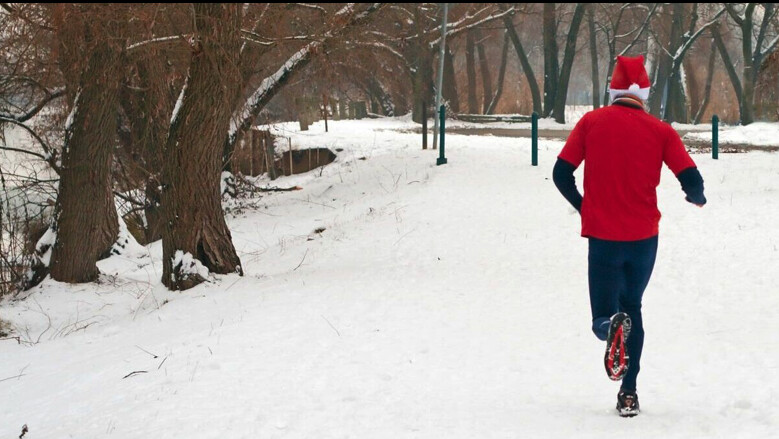
Let’s kick off our festive running playlist with a classic rock ‘n’ roll vibe. “Run Run Rudolph” will have you moving your feet on the trails faster than Santa’s elves work on Christmas Eve. It’s the perfect tune to accompany your sprint intervals or those last few metres of a hill workout.
“Feliz Navidad” by José Feliciano
Add some international flair to your run with the Spanish Christmas anthem “Feliz Navidad.” Even if you don’t understand the lyrics, you’ll find it impossible not to break into song and dance during its catchy chorus. The repetitive rhythm is great for finding your stride and maintaining a steady pace.
“Santa Tell Me” by Ariana Grande
Infuse this playlist with a mix of festive energy and pop vibes with Grande’s holiday bop. This song has an upbeat tempo that can sync well with your pace, helping you maintain a steady rhythm and keep your motivation high during the holiday season. The song has a joyful vibe, which is perfect for lifting your spirits during a workout.
“Step Into Christmas” by Sir Elton John
What’s a running playlist without a touch of a music legend? Sir Elton’s “Step Into Christmas” has a festive and cheerful feel that is guaranteed to get you in the spirit this holiday season. The catchy chorus will certainly enhance your mood and pace, providing you with an upbeat singalong, no matter the frosty weather.
“Santa Claus Is Coming to Town” by Bruce Springsteen
This is an absolute classic, so lace up your running shoes and get ready to run like you’re being chased by Rudolph. Springsteen’s electric performance makes it impossible not to pick up the pace or be excited for the holidays.
If we’re missing any of your Christmas running favourites, send us a tweet or let us know on Instagram or Facebook.
(12/09/2023) ⚡AMPTaylor Swift uses treadmill workouts to train for Eras Tour
All is right with the world–Taylor Swift has confirmed she’s a runner.
In an interview with Time Magazine in acceptance of her Person of The Year award, Swift revealed that she frequently ran to her 180-minute set list on the treadmill to train and stay in shape for her Eras Tour.
Every day I would run on the treadmill, singing the entire set list out loud […] I would run fast for fast songs and fast walk or jog the slow songs,” Swift said to Time Magazine.
The blockbuster Eras Tour, which kicked off this summer, includes 151 shows across five continents, each of which features a 44-song setlist spanning her 10 studio albums.
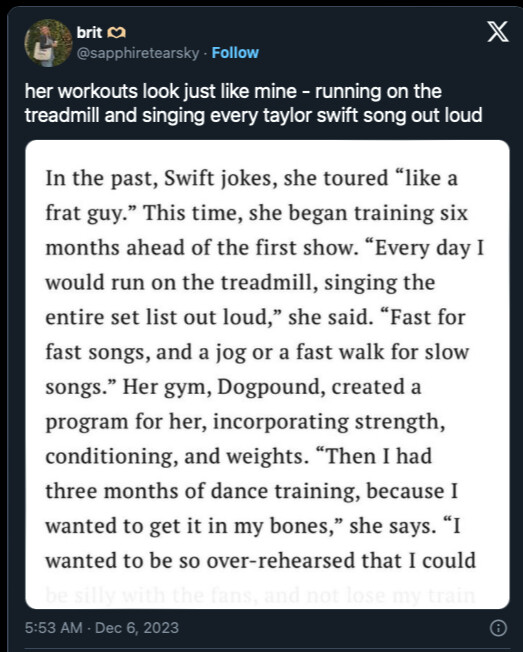
According to Time Magazine, Swift began the training regimen six months before her tour began. Her shows are on average more than three hours–a time frame comparable to a marathon. Her trainers reportedly crafted a plan that incorporates running alongside weight training and other forms of conditioning.
This isn’t the first time Swift revealed she dabbles in running. In 2016, she shot a commercial with Apple Music that saw her running on the treadmill and singing along to Drake’s hit song “Jumpman.”
Swift also revealed that she performs regardless of whether she’s “sick, injured, heartbroken, or stressed.” She makes sure to devote a full day to rest and recovery after each stop on the tour.
Given a recent video where Swift was seen sprinting into the arms of her boyfriend, NFL star Travis Kelce, after an Eras Tour show in Argentina, we think it’s safe to speculate that Swift has some running potential. Now, we just need her to qualify for the Boston Marathon
(12/09/2023) ⚡AMPby Running Magazine
Don’t Feel Like a Runner? Join the Slow AF Club.
Martinus Evans, who goes by @300poundsandrunning on Instagram, didn’t feel at home in the running community. Now, he's on the cover of magazines, has published a book, and is still running—at his own pace.
If he’s being honest, Martinus Evans thinks running is boring.

That’s not what you’d expect to hear from a running-club founder who’s on a mission to inspire a million people to take up the sport. But Evans knows that if he wants more people to lace up their trainers, he needs to lean on more than just the sport’s health benefits or competitive side. He has to convey the joy of it. “In the simplest terms, we’re all just running in a parade,” he says of road races. It should be a celebration.
Evans, a 37-year-old Brooklyn resident, knows that the running world isn’t always the most welcoming place. He’s been heckled at races. He’s participated in events where aid stations and finish lines were broken down before back-of-the-pack runners made it through. Evans says that runners with larger bodies, slow runners, and others who don’t fit the traditional athletic mold can feel like it’s their fault they’re not faster. “The system makes it seem like we’re the problem and we’re alone,” he says.
Evans first picked up running 11 years ago, after his doctor told him that he needed to “lose weight or die.” He decided to run a marathon. For 18 months, he trained and documented his progress on his blog, 300 Pounds and Running. He finished his first marathon—the Detroit Free Press—but the elation he experienced quickly dissipated. Later, sitting in an ice bath at home, he felt empty.
That familiar case of post-marathon blues led Evans to rethink his reasons for running. Objective measures like weight loss or pace didn’t resonate for him. He enjoyed talking to strangers during races and cheering on and supporting other runners. “That was the fun part. That’s what I enjoyed more than the need to get stronger, better, or faster,” he says.
In 2019, Evans founded the Slow AF Run Club. What began as an online gathering place for people who wanted to run races together grew into a global community of more than 18,000 runners of all fitness levels, body sizes, and backgrounds. Evans is a certified coach, but his approach is far from usual.
“My goal is to meet people where they are and not necessarily give them black-and-white instructions,” he says. Evans adjusts his runners’ training—from mileage to intervals—to fit their individual lifestyles and commitment levels instead of expecting everyone to adopt a one-size-fits-all plan. (In the early 2010s, Evans worked as a Men’s Wearhouse sales associate, which helped shape his approach: he learned to fit customers based on the body they had, not the size they thought they were or wanted to be. It made them feel good.)
Evans rejects the idea that you have to run a certain pace or look a certain way to be a runner. “One of the things I learned early on is that we’re all just following rules that someone else made up. It’s up to us to figure out if we’re going to go along with those rules or not,” he says.
In June, Evans published Slow AF Run Club: The Ultimate Guide for Anyone Who Wants to Run, to share his philosophy. The book is dedicated to “anybody who has felt they are too fat, too slow, too old, or too (fill in the blank) to become a runner.” Evans says that he “hated writing,” but members of his club urged him on.
Now Evans has his sights set on pushing the wider running industry: He posed nude for Men’s Health and appeared on the cover of Runner’s World. He works with race directors to create more equitable experiences for participants. He created Slow AF merchandise, with sizes up to 5X. “Runners are blamed for being fat, but when they go to the store to get clothes, there’s nothing that fits them,” he says. He’s considering expanding the line into a sportswear brand. He’s also launching a nonprofit to help others start their own Slow AF Run Club chapters, and to provide resources to help “more individuals participate in and understand what running is about,” particularly in low-income neighborhoods and marginalized communities.
“This is my baby, and now it’s getting so big that it’s no longer mine,” he says. “It’s for the people.”
(12/09/2023) ⚡AMPby Outside Online
When Ryan Redington Won the Iditarod, He Fulfilled a Multi-Generational Family Dream
His grandfather founded the Iditarod, but he’s the first member of his family to take the title
“I guess you could say I was born to mush,” says Ryan Redington, an Inupiaq musher who grew up in the town of Knik, Alaska, not far from Anchorage. The first piece of evidence: his dad’s dad was Joe Redington, widely called the Father of the Iditarod, and the race’s founder. Then there’s his great-grandfather on his mother’s side, who carried mail to remote parts of Alaska via dog sled. Redington always knew he wanted to carry on the family legacy.
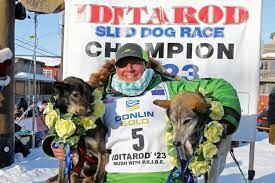
“I was fascinated with the dogs and their drive,” Redington says. “My brothers and I read all the newspaper articles about the race and the racers. We just lived and breathed it.”
Just after noon on March 14, Redington claimed his birthright when he and his team of sled dogs crossed the Iditarod finish line in Nome. He was the sixth member of his family to complete the race—but the first to win it, completing the 1,000-mile course in 8 days, 21 hours, 12 minutes, and 58 seconds.
Joe Redington dreamed up the original Iditarod, first run in 1973, alongside several other mushing enthusiasts who wanted to help preserve the tradition of dog-powered transit, which had faltered as snowmobiles proliferated in rural Alaska. They created a route that passed through dozens of Native villages, and tried to raise money for a championship pot. (Joe eventually funded it himself by refinancing his house.) Today, the course varies slightly from year to year, and prize money comes from sponsors, but the basic premise—a multiday push from Willow to Nome—endures.
The event draws spectators and competitors from around the world but remains deeply intertwined with Native Alaskan cultures and communities. “We get our food and supplies at the villages along the way, and it’s really special to have the support and excitement from these Native communities, and to get to represent them,” says Redington, the third Inupiaq to win the Iditarod. After his victory, he visited rural schools to talk about mushing.
Redington credits his success to his top-notch dog team, led by Sven and Ghost, who guided him through a whiteout. The two Alaskan huskies were awarded the Golden Harness, which goes to the best lead dogs and is voted on by the mushers in the race. He also attributes his success to his life partner, Sarah Keefer, who ran the dogs in training races before the Iditarod.
Now his sights are on a second title. “I’ll be back to defend my championship and keep proving my dogs are the best at the 1,000-mile distance,” he says.
Redington’s win comes during a challenging time for the Iditarod and sled dog racing in general. This year’s event saw the smallest field ever, with just 33 competitors (the average is nearly twice that). And the sport faces existential threats: inflation has increased operational expenses, and climate change continues to diminish the snowpack needed to travel by sled. But Redington remains optimistic.
His eight-year-old daughter and seven-year-old son are “very doggy kids,” he says. They have taken to kennel chores, training the dogs, and mushing, which gives him hope for the future.“ My family never pressured me to be a musher, and I’m not pressuring my kids. But boy, it’s a lot of fun, and [I feel] pride, watching them race and be around the dogs,” Redington says. “I love mushing, and the Alaskan husky, and I love being able to share that with them. I hope it can continue for many generations to come.”
(12/09/2023) ⚡AMPby Outside Online
VO2 Max Just Turned 100. Here’s What It Means.
Over the past century, “maximal oxygen uptake” has turned out to be a valuable marker of both endurance and health.No tidbit of physiological jargon has achieved more popular renown than VO2 max, also known as maximal oxygen uptake. And, for the past century, none has been so consistently misunderstood. A new commentary in the International Journal of Sports Physiology and Performance, led by Grégoire Millet of the University of Lausanne, marks the 100th anniversary of the landmark paper by A. V. Hill and Hartley Lupton that first described VO2 max. It’s a big milestone, and it offers a good excuse to take a closer look at what VO2 max really means and why it (sometimes) matters.
A.V. Hill was a 4:45 miler and already had a Nobel Prize for work in muscle physiology when he and Lupton began studying VO2 max. The experiments involved subjects running around Hill’s back garden in Manchester with air bags strapped to their back to measure how much oxygen they used. The faster they ran, the more oxygen they needed—but only up to a certain point. Eventually, oxygen consumption plateaued, even as they continued to accelerate.
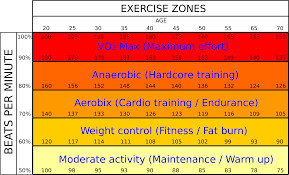
Beyond this plateau—what’s now known as VO2 max, indicating the maximum volume per unit time of oxygen (O2)—they had to rely on anaerobic energy pathways, going into what Hill called “oxygen debt.” This debt couldn’t be sustained for long thanks to rising lactic acid, which meant that VO2 max effectively marked the limits of sustainable effort. In other words, VO2 max was an objective measure of endurance.
The current understanding of exercise metabolism has evolved in a few respects since Hill’s time. Physiologists no longer talk about oxygen debt, and lactate (not lactic acid) is considered a marker of fatigue but not its direct cause. But the basic idea remains the same: there’s a limit to the rate at which your body can take in and use oxygen, and having a higher limit augurs well for both performance and health.
The initial understanding of VO2 max was that it was a measure of cardiovascular function, limited primarily by how rapidly your heart could pump oxygen-rich blood to your muscles. For elite endurance athletes, that’s still a pretty good approximation: aerobic monsters are distinguished primarily by a large and compliant heart that can pump huge volumes of blood with each stroke.
But over time, researchers realized that the limits of oxygen uptake are best thought of as a cascade with numerous steps. You have to inhale oxygen into your lungs, diffuse it into your bloodstream, pump it to your muscles, diffuse it into your muscles, and then your mitochondria have to use it to generate ATP. Each of those steps can become a limiting bottleneck in certain conditions, so there isn’t one single path to altering VO2 max.
There are two ways of quantifying your VO2 max. The absolute value is expressed in liters of oxygen per minute: a well-trained endurance athlete, for example, might be able to consume 5 L/min of oxygen. The relative value, which is the more commonly discussed number, is simply the absolute value divided by your weight in kilograms. If that same endurance athlete weighed 70 kilograms, their relative VO2 max would be 71 ml/min/kg.
The standard method of measuring VO2 max, originally developed as an offshoot of the infamous Minnesota Starvation Study during World War II, is a treadmill test (or the equivalent with some other form of exercise like a stationary bike), lasting six to 12 minutes and getting progressively harder in stages until you max out. But what does it mean to max out? There are various criteria: oxygen consumption reaching a plateau, heart rate reaching a plateau, lactate levels exceeding 8.0 mmol/L, perceived exertion greater than 17 on a scale of 6 to 20, respiratory exchange ratio (a comparison of much carbon dioxide you exhale compared to how much oxygen you’re consuming) of greater than 1.1.
The reason for all these criteria is that the idealized picture of a steady increase in oxygen consumption followed by a plateau often doesn’t show up in real life. And even when it does, it’s not an invariant number: your VO2 max when kayaking will be smaller than when you’re running, for example, because you’re using smaller muscles that can’t gobble up as much oxygen. (That’s why rowers tend to have some of the highest absolute VO2 max values, because they’re huge and they’re using both arm and leg muscles. Cross-country skiers have some of the highest relative values, because they’re also using arms and legs but are generally much lighter than rowers.)
There are even a few studies that have found different VO2 max values depending on the details of the treadmill protocol. How can it be the ultimate objective measure of endurance if its value depends on how you test it? Is the apparent plateau just your brain deciding that you’ve had enough and should step off the treadmill? These and other controversies persist. My take: the VO2 max plateau is real and dictated by physiology, but it’s not as clear-cut a threshold as once thought.
If you tested all the runners on the start line of an Olympic distance race, their VO2 max values wouldn’t tell you much about how they’d place. They all have high values, and the race won’t necessarily be won by the runner with the highest value. Eliud Kipchoge, for example, reportedly has a relatively unexceptional value for an elite marathoner. In that sense, VO2 max isn’t a great predictor of running performance. And the cyclist with the highest ever reported VO2 max, Oskar Svendsen, didn’t end up setting the world alight, as I recounted a few years ago.
On the other hand, if I had to predict the race finishing order of 100 people randomly picked from the street, and I was allowed one physiological test, I’d opt for VO2 max. In that diverse population, VO2 max values would be all over the map, and those with the highest values would likely finish at or near the front. So in that sense, VO2 max is a great predictor. To put it another way, a high VO2 max is a necessary but not sufficient condition for endurance success. It’s your ticket into the game.
You could argue that VO2 max has greater value as a predictor of health and longevity than of athletic success. While the relationship between exercise habits and longevity remains a little hazy, with some people arguing that too much is bad for you, the link between VO2 max and longevity is unambiguous: higher is better. In fact, the American Heart Association has argued the VO2 max should be considered a “vital sign” and be regularly measured or estimated by doctors.
Back in the 1990s, the Heritage Family Study trained about 500 people from 100 different families for 20 weeks. On average, they were able to boost their VO2 max by about 20 percent. But they saw a wide range in responses: some people saw more than twice as big an increase, while others basically didn’t increase at all. And that variation seemed to cluster within families. The researchers estimated that about half the VO2 max training response was dictated by genetics.
The idea that some people don’t improve their VO2 max at all even with regular training remains controversial. A few different studies have taken aim at this idea, and shown that if you take non-responders from a study and have them either train more or train harder, everyone will eventually respond. Still, it’s clear that some people can increase their VO2 max more easily than others.
Trained athletes eventually hit a point of diminishing returns, although long-term structural adaptations like the size of your heart and the density of capillaries distributing blood can continue to improve. A meta-analysis a decade ago found that interval training can produce substantial improvements, with the biggest bang from intervals lasting three to five minutes per rep. The highest recorded values tend to be around 90 ml/kg/min in men and 80 ml/kg/min in women, with the sex differences attributable to higher body fat and lower hemoglobin levels in women.
As important as increasing your VO2 max is, the bigger challenge for many of us is slowing its decline. After age 25, it typically drops about ten percent a decade. According to a recent analysis, athletes who keep training can slow that decline to about 5 percent a decade, but those who fall off the wagon might see even steeper declines.
Overall, Millet and his colleagues conclude that VO2 max is “a healthy and active centenarian” that remains important in both endurance sports and as a measure of cardiovascular health. It’s not the ultimate barometer of fitness, but neither is it a meaningless detail. If you get a chance to have yours tested, for example by volunteering for a study at a local university, I highly recommend it. It can be fun to learn about your own physiology—and, during the final stage of the test where you keep pushing until you’re on the verge of being thrown off the back of the treadmill, your psychology.
(12/09/2023) ⚡AMPby Outside Online
Chicago Marathon expands to 5000 runners in 2024
The Bank of America Chicago Marathon is expanding next year, with 50,000 runners expected to cross the finish line.
Over 123,000 runners applied for a chance to participate in the race, according to a spokesperson for the marathon. The number of entry applications was up from 86,000 for the 2023 race and 80,000 in 2022.
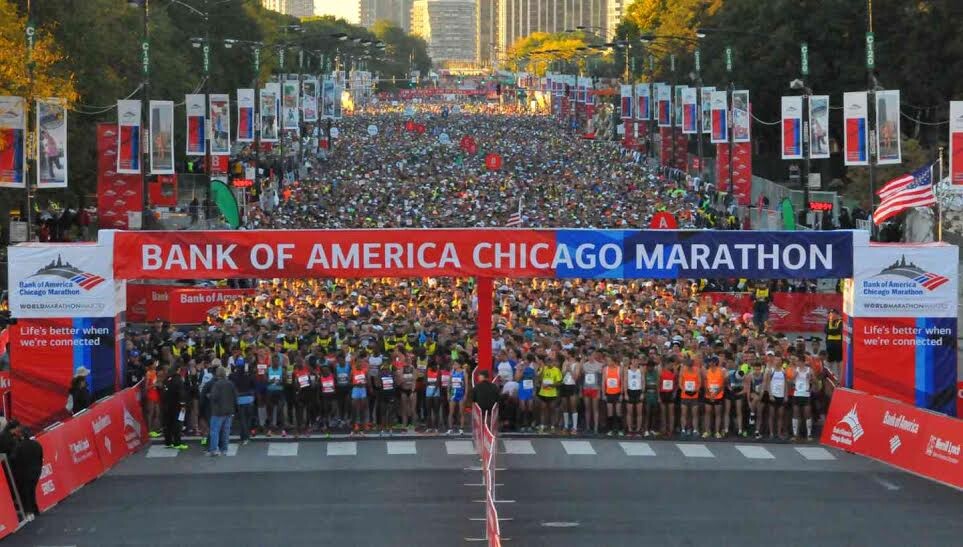
Next year’s record-breaking field was announced by marathon organizers Thursday, the same day runners who entered the marathon’s drawing find out their selection status for next year.
Runners who are selected through the drawing will join those who guaranteed their spot during the four-week application window.
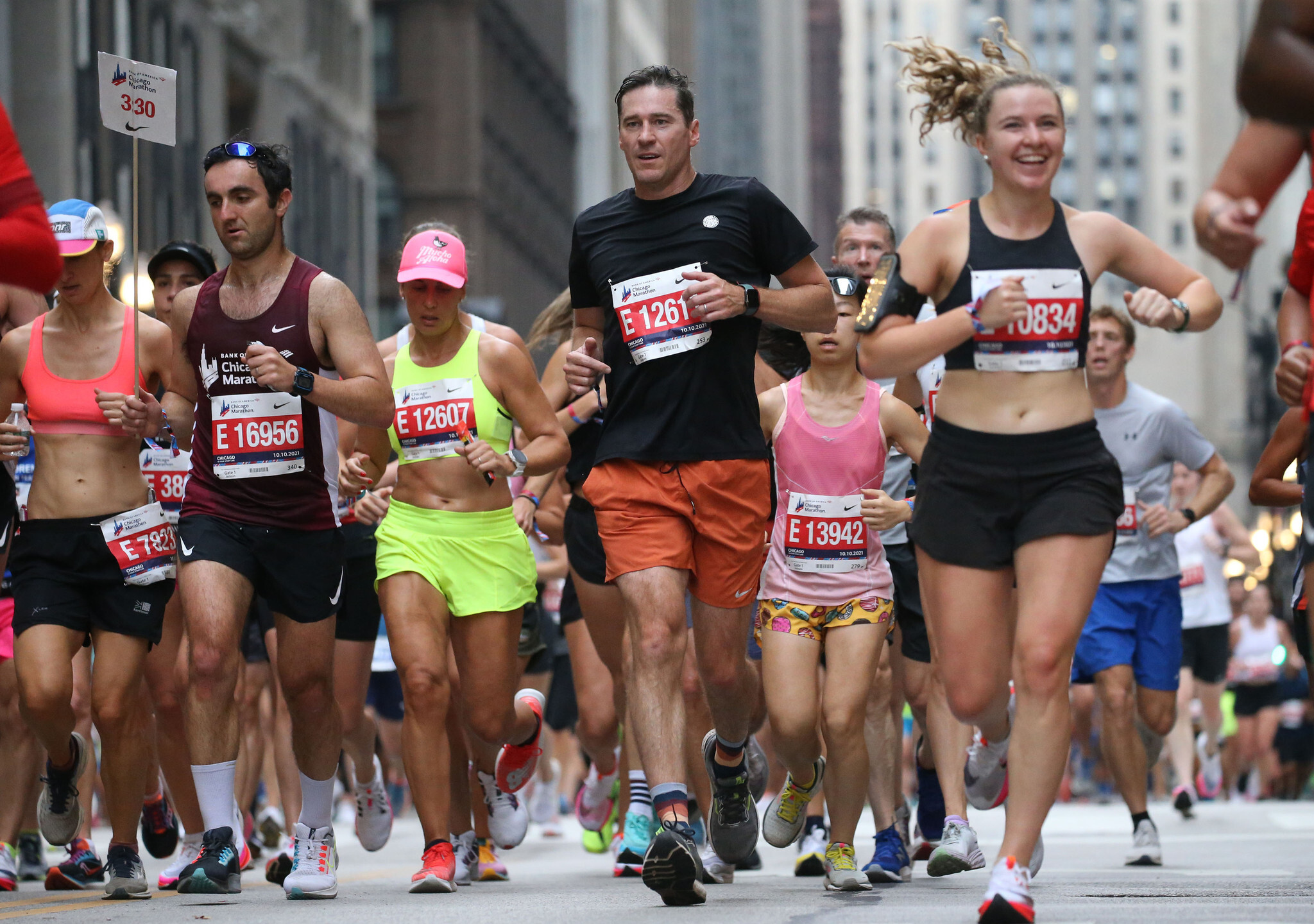
Guaranteed entries into the race include Chicago Marathon legacy finishers, time qualifiers, international tour group participants, charity runners, 2023 Bank of America Chicago Distance Series finishers and those who canceled their 2023 race entries, according to an announcement from the marathon.
Runners who did not receive an entry through the drawing can still sign up through the 2024 Bank of America Chicago Marathon Charity Program, which includes 200 nonprofit organizations raising money for such causes as education, youth development and social services. Anyone registering to run with an official charity is required to raise at least $1,750.
The expanded field comes after this year’s marathon raised a record $30.4 million.
“The 2023 Bank of America Chicago Marathon was record-setting across the board from historic performances and countless personal bests to record-breaking participation and charity fundraising,” said Carey Pinkowski, executive race director. “We look forward to welcoming a new field of participants in 2024 and once again putting on a race that unites the local and global running communities on the streets of Chicago.”
Marathon officials said 48,472 runners completed the 2023 race.
Kelvin Kiptum set a marathon world record with his time of 2:00:35 to win the men’s division of the 2023 marathon. Sifan Hassan, in her second marathon, set a course-record time of 2:13:44 to win the women’s division.
The 2022 race had a smaller field in response to the COVID-19 pandemic, a marathon spokesperson said. That year, 39,387 runners crossed the finish line.
Next year’s race is scheduled for Oct. 13.
(12/08/2023) ⚡AMPby Mohammad Samra
Bank of America Chicago
Running the Bank of America Chicago Marathon is the pinnacle of achievement for elite athletes and everyday runners alike. On race day, runners from all 50 states and more than 100 countries will set out to accomplish a personal dream by reaching the finish line in Grant Park. The Bank of America Chicago Marathon is known for its flat and...
more...Why older runners need to strength train and how to get started
There’s no way to stop time, but strength training will help you run stronger for longer. Strength training is particularly important for older runners, as it helps counteract age-related muscle loss, enhances bone density and improves overall stability, reducing the risk of injuries and promoting longevity. Here’s what you need to know to run long and strong.
Combat age-related muscle loss

One of the most significant concerns for older runners is the loss of muscle mass. Scientific studies consistently emphasize the effectiveness of strength training in combating this age-related decline. Resistance exercises like weight-lifting trigger muscle protein synthesis, promoting the growth and maintenance of muscle mass. Not only will this improve running performance, it also plays a crucial role in supporting overall mobility and reducing the risk of injuries.
Enhance bone density

Aging often brings a decline in bone density, increasing runners’ susceptibility to fractures and injuries. Strength training is a powerful ally in maintaining and enhancing bone density; weight-bearing exercises stimulate bone-forming cells, leading to stronger and more resilient bones. For older runners, this means a reduced risk of stress fractures and a safeguard against the impact-related challenges that can accompany running over time.
Boost your metabolism
Metabolism tends to slow down with age, contributing to a potential decline in energy levels. Strength training, particularly high-intensity interval training (HIIT), can rev up the metabolic rate. This not only aids in weight management, but also provides older runners with the energy needed to tackle longer distances. As your running efficiency improves, your overall performance is enhanced.
Get started today
No idea how to begin? If you have access to a local gym, it’s a great idea to invest in one or two sessions with a trainer to get used to the equipment and learn a few exercises you can do on your own. There are plenty of ways runners can work on strength at home, though, and YouTube has many videos that are useful to help figure out how to strength-train at home correctly and safely.
Try bodyweight exercises such as squats, lunges, push-ups, and planks, which require no equipment and effectively target key muscle groups for runners.
Incorporate resistance bands for added challenge; they’re affordable, versatile, and can be used for exercises like leg lifts, lateral leg raises, and upper body workouts.
Start with a set of light dumbbells for exercises like bicep curls, overhead presses and weighted lunges, gradually increasing the weight as you get stronger.
Incorporating some strength training into your routine doesn’t have to take a lot of time–even fifteen minutes after a run a few times a week will make a real difference.
(12/08/2023) ⚡AMPby Keeley Milne
Britain’s world 1500m champion Josh Kerr returns to New York targeting fast two miles
Britain’s world 1500m champion Josh Kerr will headline the men’s two mile field when he returns to the Millrose Games, a World Athletics Indoor Tour Gold event, for the fifth time on February 11.
Kerr, the Olympic bronze medallist, ran 3:48.87 for the mile in Boston in 2022 and sits fourth on the world indoor all-time list for the discipline. He will look to make a similar statement in the two-mile event when he races at The Armory in New York in February.
He won the 3000m at this year’s Millrose Games, his season opener, in 7:33.47 and went on to take the world 1500m title in Budapest. Kerr was second in the Millrose Games mile in 2022, while he was also second and fourth in that discipline in New York in 2018 and 2019, respectively.

The world indoor two-mile best is 8:03.40, set by Britain’s Mo Farah in Birmingham in 2015.
“There's going to be a fantastic field and it will be paced at the two-mile world record,” Kerr told CitiusMag. “Currently, I'm in fantastic shape. I'm having an amazing fall and dealing with everything new and everything that's exciting, amazing and also terrible about being a world champion. I'm very excited for it.”

More than 50 meetings feature on the 2024 World Athletics Indoor Tour calendar, including seven Gold level events, in a season that culminates with the World Athletics Indoor Championships Glasgow 24.
Other athletes already confirmed for next year’s Tour include world gold medallists Noah Lyles, Jake Wightman and Gabby Thomas, who will all compete at the New Balance Indoor Grand Prix in Boston on February 4.
(12/08/2023) ⚡AMPby World Athletics
NYRR Millrose Games
The Pinnacle of Indoor Track & Field The NYRR Millrose Games, first held in 1908, remains the premier indoor track and field competition in the United States. The 2025 edition will once again bring the world’s top professional, collegiate, and high school athletes to New York City for a day of thrilling competition. Hosted at the New Balance Track &...
more...Ugandan runner Prisca Chesang provisionally suspended by the Athletics Integrity Unit
Ugandan runner faces provisional suspension by AIU for for the presence/use of a prohibited substance (Furosemide).
World U20 5000m bronze medalist Prisca Chesang has found herself in hot water with the Athletics Integrity Unit (AIU).
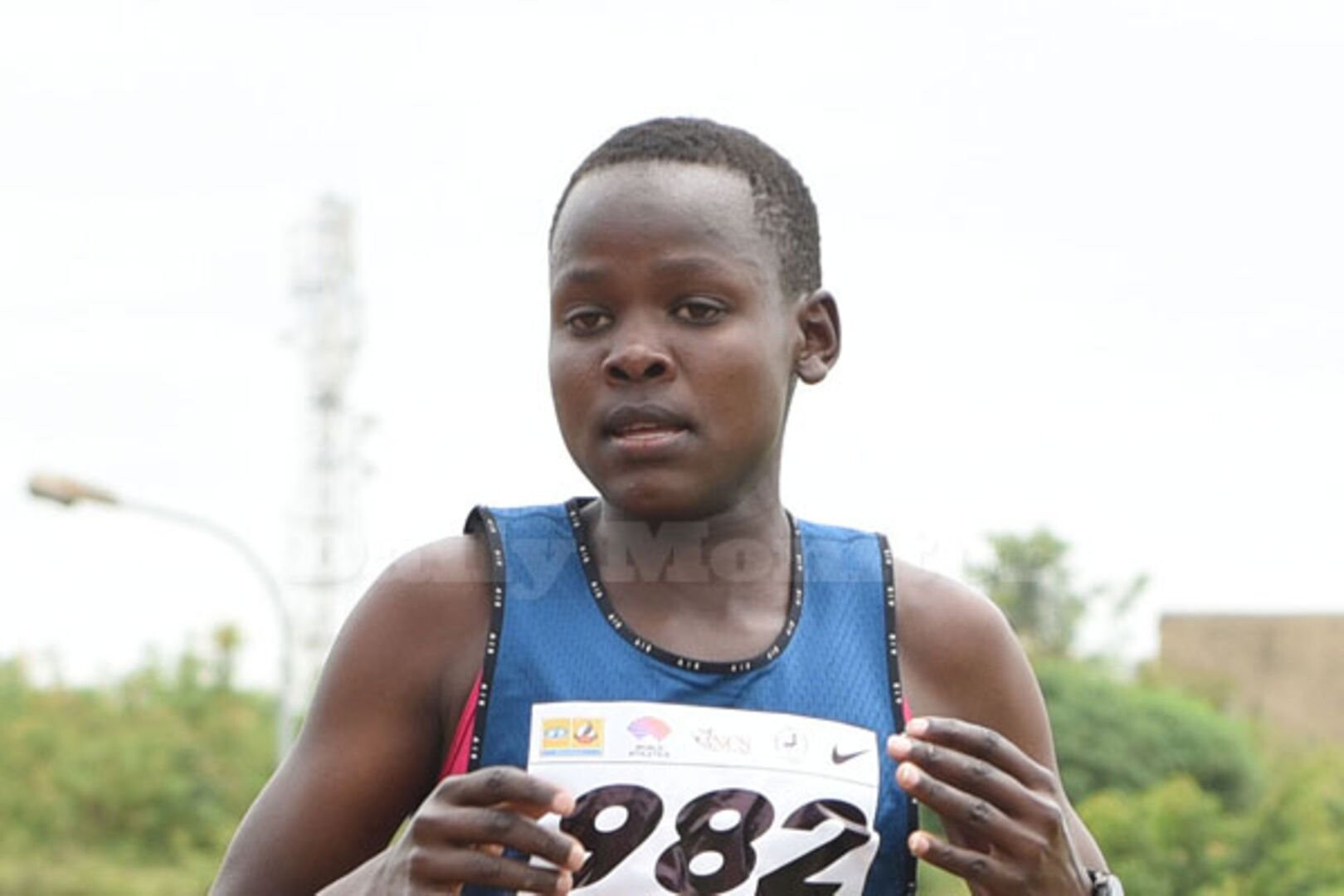
The 20-year-old Ugandan has been provisionally suspended by AIU for the Presence/Use of a Prohibited Substance (Furosemide), a clear violation of the World Anti-Doping rules.
Chesang, who made headlines as the fourth female Ugandan athlete to secure a medal at the junior championship, finds herself facing charges under Article 2.1 and Article 2.2 of the World Anti-Doping Agency (WADA).
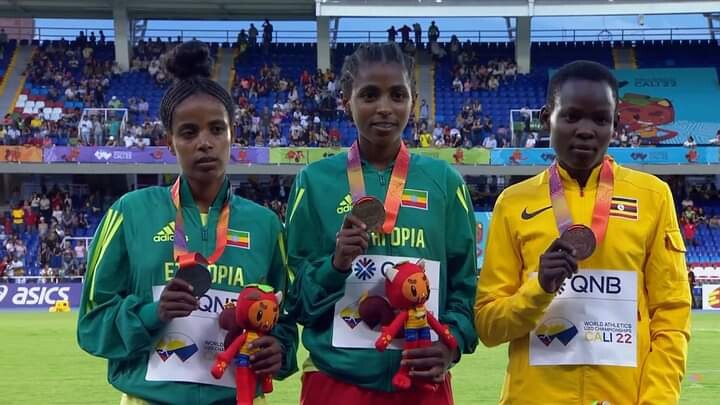
Chesang's remarkable journey began at the 2021 World Athletics U20 Championships in Nairobi, Kenya, and continued in Cali, Colombia last year, where she clinched the bronze medal.
She joined the ranks of Peruth Chemutai (2018), Annet Negesa (2010), and Dorcus Inzikuru (2000) as one of the few female Ugandan runners to achieve such a feat at the junior level.
"The AIU has provisionally suspended Prisca Chesang (Uganda) for the Presence/Use of a Prohibited Substance (Furosemide)," the AIU confirmed.
Chesang's suspension echoes a somber note in Ugandan running history, following the suspension and three-year ban of Janat Chemusto in November.
Prisca Chesang had been making remarkable strides in the senior division as well, finishing 7th overall at the World Cross Country Championships held in Bathurst, Australia, earlier this year.
However, it was her astonishing performance in the 10km race and her ranking at the World Cross Country Championships in 2023 that truly had the athletics world taking notice.
On New Year's Eve in 2022, Chesang emerged as the champion of the Madrid 10km with an incredible time of 30:19.
This achievement unofficially crowned her as the fastest junior athlete ever over the 10km distance.
Her exceptional performance ranked her 6th on the Senior World List for 2022 and placed her among the top 20 on the World All-Time list for the same distance.
(12/08/2023) ⚡AMPby Festus Chuma
Four short speedwork sessions to sneak in over the holidays
It can be challenging enough to fit running in around the many other obligations we juggle; throw in fewer daylight hours and fast-approaching holidays and it feels near impossible. Each of these quality speedwork sessions can be done in 40 minutes or less. If you need to make these even shorter, adjust the length of your warmup and cooldown.
1.- 30-minute fast-finish session

This workout allows you time to adequately warm up before running hard; your effort for the final 10 minutes should be tough, but not hard enough to leave you struggling to finish. You can easily add a five to 10-minute cooldown to the end of this one, if you have time.
Start by running for 20 minutes at a very easy pace or effort.
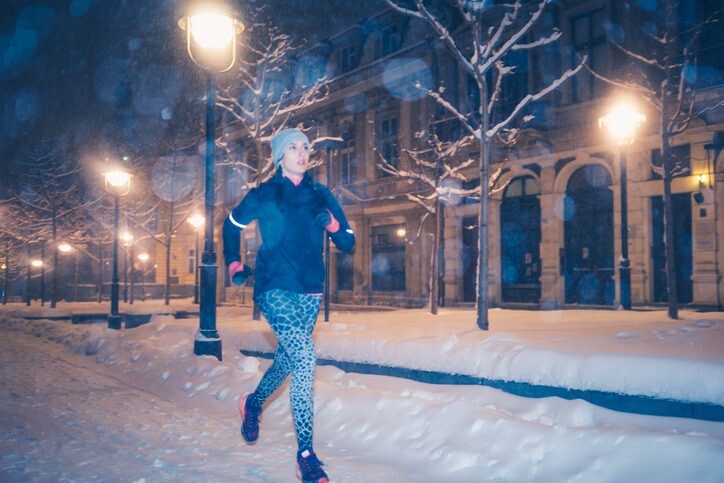
Pick up the pace for the final 10 minutes of your workout, running at a medium-hard effort. (Yes, it’s that simple.)
2.- Threshold intervals
This interval workout pushes your aerobic threshold–the limit at which your body can work before lactic acid begins building up. Designed to keep your heart rate up for long enough to build strength without causing exhaustion, threshold intervals will make your goal race pace feel easier.
Warm up with 10 minutes of easy running.
Run for two minutes at 80 per cent effort, then two minutes recovery at an easy pace, and repeat eight times.
Cool down with five minutes of easy running.
3.- 40-minute hill repeats
For this session you’ll need to find a hill that is challenging enough to make you breathe hard as you move up it, but not so steep that you lose control of your form. Run at a hard effort up the hill, while maintaining a quick cadence and proper running form.
Start with 10 minutes of easy running to warm up.
Run 8-10 x 30 seconds uphill at a hard effort, with 90 seconds recovery jog.
Cool down with 10 minutes of easy running.
4.- Strength-building progression run
The 12 minutes of faster running at the end of the workout will give both your legs and your lungs a workout, and improve overall efficiency.
Warm up with five minutes of easy running.
Run 15 minutes at goal marathon race pace.
Run 12 minutes at a hard pace (try your goal 10K race pace).
Cool down with five minutes of easy running.
Follow any hard workout with easy running or a recovery day, and make sure to hydrate well.
(12/07/2023) ⚡AMPby Keeley Milne
Athletics coach explains the headache he faced selecting Kenya’s marathon team for Paris Olympics
The veteran coach has explained the challenges he had to overcome to settle on the provisional marathon squad that will represent Kenya at the Paris 2024 Olympics
Veteran athletics coach Julius Kirwa has revealed how he faced a difficult time narrowing down to 20 athletes who will represent Kenya at the Paris 2024 Olympics.

Athletics Kenya (AK) named a provisional squad of 20 (10 men and as many women) with marathon great Eliud Kipchoge, world record holder Kelvin Kiptum, Boston and New York Marathon champion Hellen Obiri as well as three-time world half marathon champion Peres Jepchirchir among the big names included.
While the selection was based heavily on world ranking and athletes’ performances in major marathons, Kirwa admits it was a herculean task given the many good runners in the country.

“We are selecting them based on their time and world ranking. We are allowed to field three athletes only and in Kenya, we have about 120 athletes who are capable of representing the country,” said Kirwa.
“Other countries have a few to pick from but here, it has not been easy. I have taken a lot of time monitoring and some are still coming up like Alexander Mutiso ran very well in Valencia [finished second in 2:03:11 on Sunday] but it was too late to put in someone.
“We followed the world ranking and in Kenya we have Kiptum leading then Eliud so there was no need of jumping. We follow that way unless someone withdraws and you go to the next best ranked runner.”
Besides Kipchoge and Kiptum, Vincent Ngetich, second at the Berlin Marathon this year, Rotterdam Marathon runners-up Timothy Kiplagat, former Chicago and Boston Marathon champion Benson Kipruto, Bernard Koech, two-time New York Marathon champion Geoffrey Kamworor, Cyprian Kotut, 2022 London Marathon champion Amos Kipruto and Titus Kipruto also made the list.
The women’s team has Obiri and Jepchirchir as well as former world record holder Brigid Kosgei, Tokyo Marathon champion Rosemary Wanjiru, former world champion Marathon Ruth Chepng’etich, former world half marathon record holder Joycilline Jepkosgei, Sheila Chepkirui, Judith Jeptum Korir, Selly Chepyego and Sharon Lokedi.
However, world ranking was not the only consideration given Joshua Belet and Ronald Korir, who who are ahead of Kamworor on the rankings, missed out same as Dorcas Chepchirchir and Jackline Chelal.
AK explained that they also looked at consistency, championship mentality and the attitude of the athletes before setting on the squad.
(12/07/2023) ⚡AMPby Joel Omotto
Paris 2024 Olympic Games
For this historic event, the City of Light is thinking big! Visitors will be able to watch events at top sporting venues in Paris and the Paris region, as well as at emblematic monuments in the capital visited by several millions of tourists each year. The promise of exceptional moments to experience in an exceptional setting! A great way to...
more...

